SECTION 3 HISTORY (1887-2013)
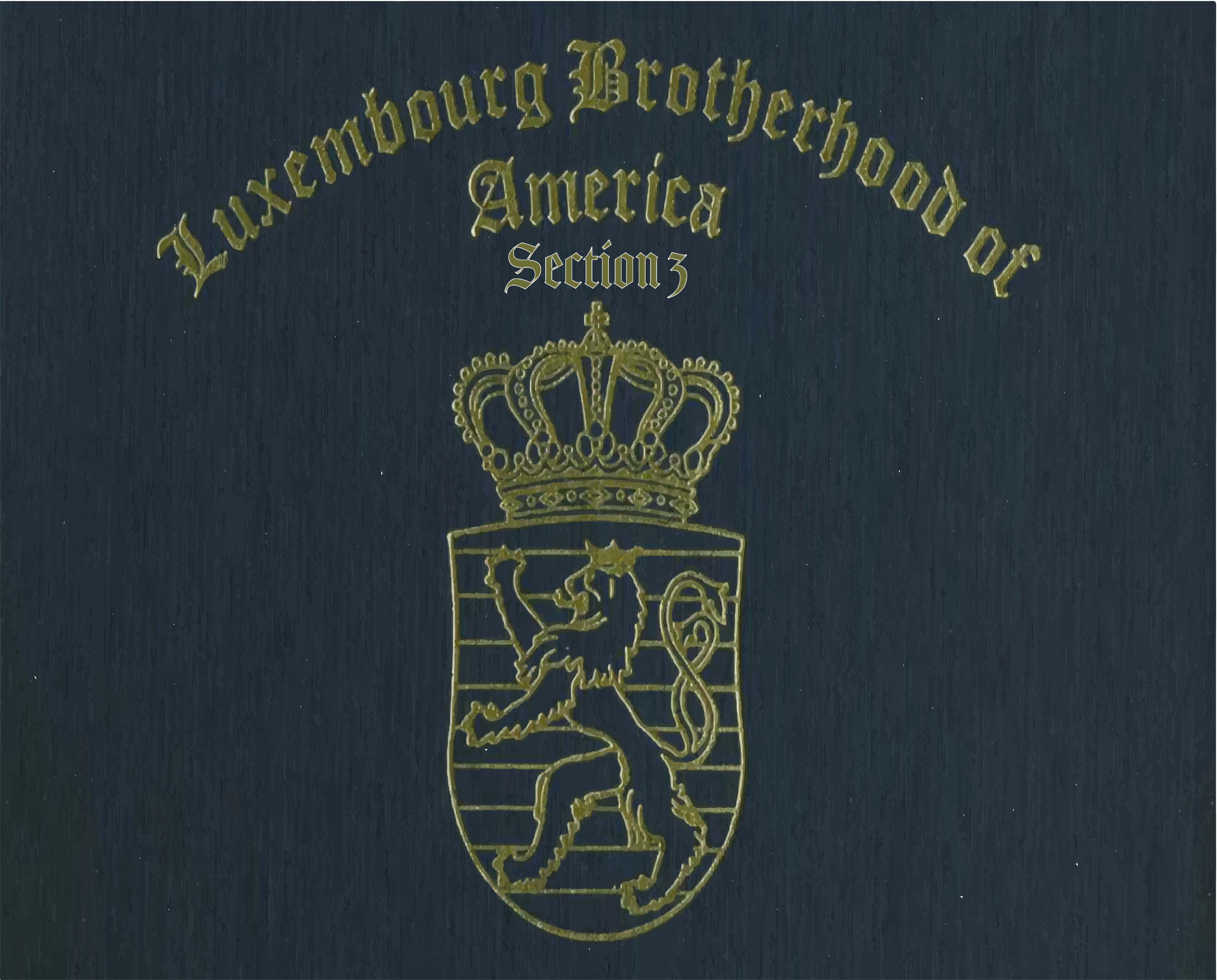
126 Years of L.B.A. History
Section 3 of the Luxembourg Brotherhood of America (L.B.A.) is today the oldest of the four remaining sections of the Luxembourger Bruderbund, an organization with deep roots in Chicago’s immigrant communities. The L.B.A. was first established at an organizational meeting on October 23, 1887, on Chicago’s south side, where Section 1 was initially formed. This section, however, would not be known as Section 1 until 1897, when other branches began to emerge, starting with Section 2.
In 1897, John Glessner, a dedicated member of Section 1 who had recently moved to the Rogers Park neighborhood, recognized a thriving Luxembourger community on the north side of Chicago. Many of these residents, concentrated in the Rogers Park and High Ridge neighborhoods, were engaged in greenhouse businesses and closely tied to their parish, St. Henry’s, located at the southwest corner of Ridge Avenue and Devon Avenue.
Seeing an opportunity to extend the Brotherhood, Glessner reached out to the Grand Secretary, John W. Watry, inviting him to address a group of 25 interested Luxembourgers. At this April meeting, Peter Weimeskirch acted as Secretary, and all present pledged their commitment to the L.B.A. Soon after, on May 9, 1897, Grand Lodge President John Hankes initiated 33 men into the Brotherhood, officially designating them as Section 3. These men, devoted to both their community and heritage, established a legacy that continues to enrich the history of the L.B.A. and Chicago alike.
The initial 33 charter members were as follows:
| Fred Arendt | J.P. Koob | Peter Sartor |
| Anton Beaufils | Theodore Lanners | J.A. Schmit |
| Joseph Bill | Mathias Laplume | Vincent Schmitz |
| Nick Brucher | Nick Laplume | John Scholer |
| Louis Clesen | J. Leichtenberg | Peter Schoos |
| Peter Diederich | Fred Lutgen | Leon Schuler |
| Nick Drickes | J.P. Michels | Nick Thinnes |
| Peter Eischen | Nick Nilles | Peter Tres |
| Hubert Hostert | Peter Nilles | Fritz Wanderschied |
| J.P. Jaeger | Theo. Porters | Andrew Weber |
| Cor. Kimmes | J.B. Salentiny | Peter Weimeskirch |
The first officers of Section 3 were:
| President | J.P. Koob |
| Vice President | J.P. Michels |
| Recording Secretary | Nick Nilles |
| Financial Secretary | Nick Thinnes |
| Treasurer | Peter Weimeskirch |
By 1908, just over a decade after its formation, Section 3 of the Luxembourg Brotherhood of America (L.B.A.) had grown to 350 members, making it the largest and most influential section within the Brotherhood. The remarkable growth and prominence of Section 3 are closely tied to the history of the Schobermesse, the annual fall festival of the Luxembourg community in Chicago, inspired by the Schueberfouer in Luxembourg City.
The origins of the Schobermesse in Chicago trace back to a picnic sponsored by Section 3 on May 29, 1903. The event turned into a financial failure due to an afternoon downpour. Generously, the grove owner, Matt Frees, allowed the section to use the grove again the following day, Memorial Day. While the spirit of the picnic was salvaged, it did not recover financially. Recognizing the need for a better approach to hosting large gatherings, section leaders began discussions throughout the summer of 1903.
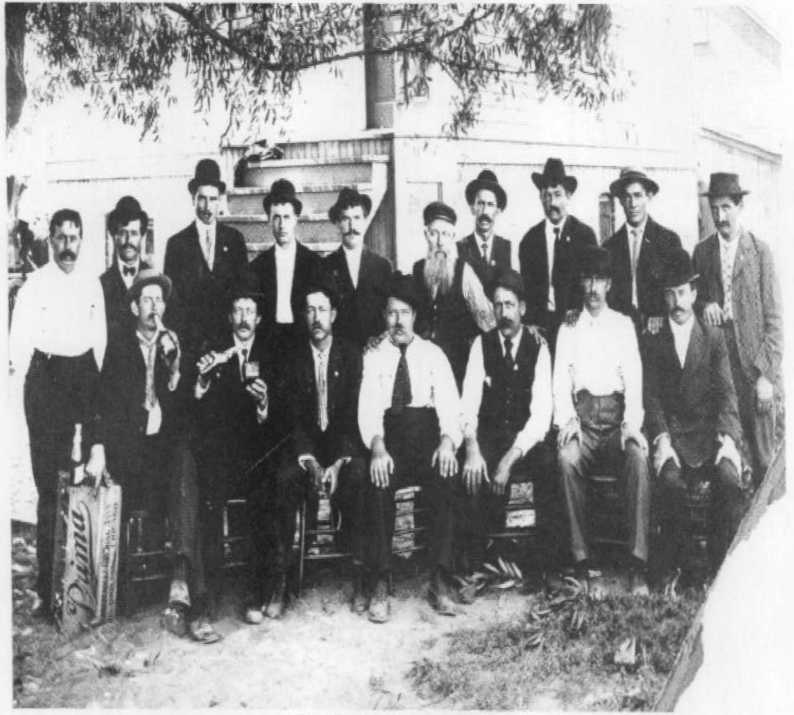
During these discussions, often over glasses of Quetch, member Peter Malget conferred with Nicholas Karthauser, a restaurant owner whose establishment was located at 3543 Ridge Avenue in Chicago (later renumbered to 6666 Ridge Avenue). Karthauser had lived in Luxembourg City before immigrating to the United States and had attended the Schobermesse there. Malget believed that a similar festival could succeed in Chicago, providing a unique cultural event for the Luxembourg community.
At the June 1904 meeting of Section 3, Malget presented the idea of hosting a Schobermesse. Initially, the suggestion was met with skepticism and even laughter. However, after a lively debate, members began to envision the possibilities. A committee was appointed to explore the proposal further, consisting of Chairman Malget, Secretary Gregor Rolling, and members Matt LaPlume, Michael Neuer, and J.P. Leider.
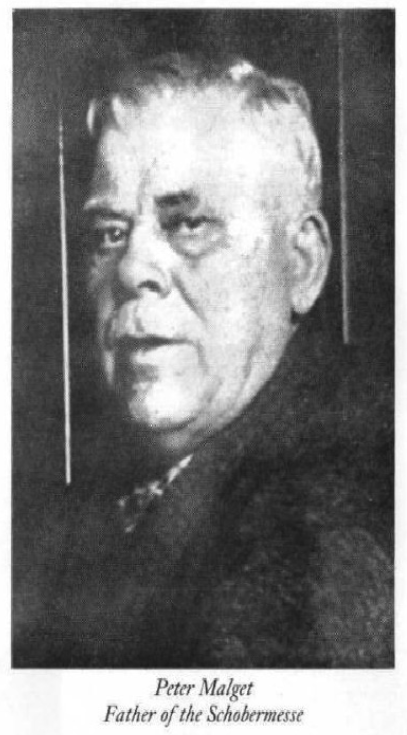
At the July meeting, the committee reported unanimous support for organizing a Schobermesse in Chicago. The section unanimously approved the plan, deciding to hold the festival on the first Sunday in September and the following day, Labor Day. They selected the adjoining picnic groves of Karthauser and Joseph Ebert on Ridge Avenue as the venue. The committee was expanded to 30 members to ensure thorough planning, and they were encouraged to spare no expense in making the inaugural event a success.
The festival was designed to be a true Luxembourg celebration, featuring exhibitions of farm crops and flowers grown by Luxembourgian gardeners and florists in the area, performances by singing societies, dancing, and traditional Luxembourg beverages such as Wormeldinger Köppchen, Moselle wine, and Quetch. Invitations were extended to other L.B.A. sections, promising a unique festival that every Luxembourger could be proud of.
ln 1905, the officers of Section 3 were:
| President | Charles Hengesch |
| Vice-President | J.P. Koob |
| Recording Secretary | J.P. Michaels |
| Treasurer | Peter Weimeschkirch |
The first Schobermesse in Chicago was a significant success, well attended by members of Section 3 as well as Sections 1 and 2. This marked the birth of a cherished annual tradition that would continue for 64 years, from 1904 to 1967, held in various picnic groves across the North Side of Chicago and its northern suburbs, including Tessville (now Lincolnwood), Niles Center (now Skokie), and Morton Grove. The Schobermesse became a symbol of Luxembourg heritage and community spirit in Chicago, with serving on the organizing committee considered a great honor.
Thus, the Schobermesse in Chicago was born, with many hailing Peter Malget as the “Father of the Schobermesse.” The festival not only solidified the prominence of Section 3 within the L.B.A. but also enriched the cultural tapestry of Chicago, leaving a lasting legacy celebrated by generations.
The second Schobermesse committee consisted of several members whose contributions to the event and to Section affairs were significant. Among these members were John Hansen, Henry Wietor, Mich Simon, Henry Miller, Nic Niesen, Hubert Hostert, J.P. Jeager, Nic Blatz, George Spanier, William Frey, Edward Linden, Nic Thill, August Mootz, John Grolig, William Maguil, Eugene Wiltgen, Math Goerens, Anton Beaufils, Fred Glody, and William Jaeger.
The festivities began with a parade to Karthauser’s Grove from the Section’s meeting hall, then located at 4310 East Ravenswood Avenue. President Hengesch welcomed attendees, followed by an address by Matt Huss, L.B.A. Grand President. Entertainment included dancing, sack races, goat riding, egg treading, weightlifting, a merry-go-round, and tree climbing. The latter involved scaling a greased pole with valuable prizes hanging from the top.
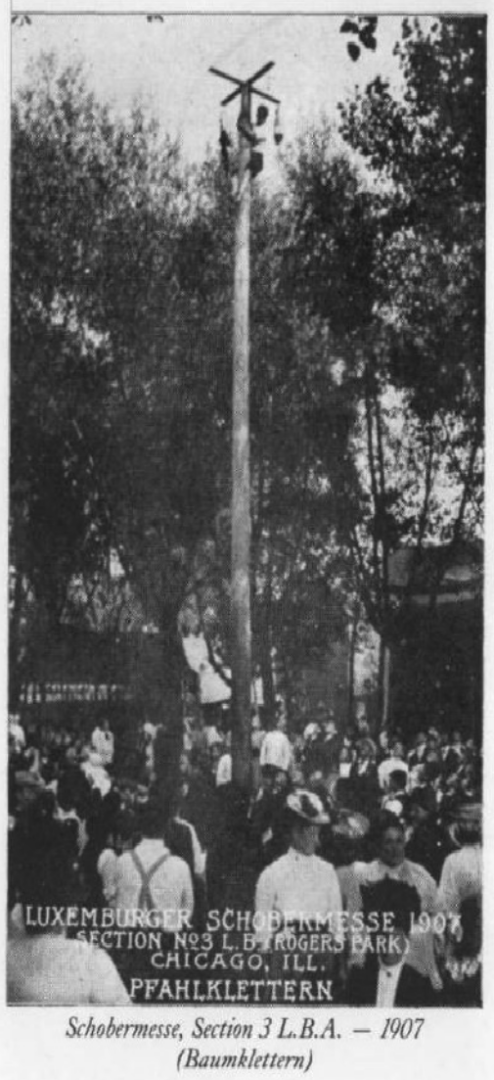
In 1906, the Schobermesse was once again held at Ebert’s and Karthauser’s Groves. Section President Peter Malget, known as the “father of the Schobermesse,” led the event, with John Hansen as Vice-President and Nicholas Nilles as Recording Secretary. Several additional members joined the 1906 committee, including Nic Cooter, Dr. J.J. Link, Ed Linden, J.P. Sinner, Peter Reinberg, P. Michelau, Henry Kransz, J.P. Karels, Peter Koob, P. Reding, J.P. Kieffer, Anton Melsen, George Spanier, Peter Winandy, Fred Glody, and Nick Wietor.
The expanding committee reflected the festival’s growing popularity within the Luxembourg community, and committee appointments were highly sought after. The 1906 event featured imported Wormeldinger Wine and many of the same attractions as the previous year. The program booklet included a history of Luxembourg from 53 B.C., when Julius Caesar, under Field Marshal Labienus, conquered the territory after an eight-year battle.
By 1908, Section 3 had a membership of 350, meeting monthly at 4310 East Ravenswood Avenue. The Section had also organized the Luxembourger Dramatic Club and the Luxembourger Harmonie. Members of the Dramatic Club included Joe Winandy, Nick Flam, Nic Karthauser, Anton Flam, Anton Obladen, Joseph La Plume, Peter Malget, W. Clesen, J.P. Michaels, Frank Koob, Anton Lorang, Peter Weimeschkirch, J.P. Conrad, W. Welter, Hubert Hostert, and Martin Jacques. The Harmonie’s officers included J.P. Jaeger as President, Nic Thilmany as Vice-President, Marshal Tony Tres, Director Julius Schloss, Secretary Nic Hirtzig, and Treasurer Peter Koob. Meetings were held every Tuesday and Friday in J.P. Jaeger’s Hall. Section 3 quickly became a leading organization among the Luxembourgers.
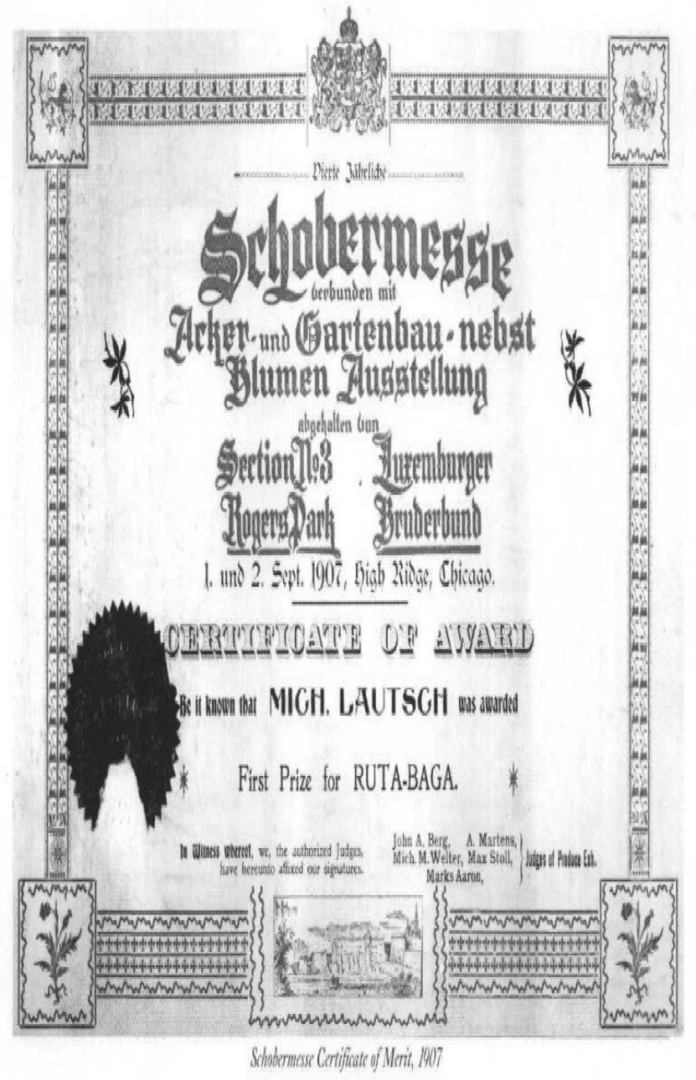
In the 1908 parade kickoff, Schobermesse marchers followed the band to the traditional tune of the Hammelmarsch, played during the parade for Luxembourg City’s Schobermesse. During the two-day event, Section 3’s Dramatic Club presented one- and two-act plays in Luxembourgish. Entertainment included Professor Fostello, a cowboy pocket player and ventriloquist from Arizona, and the famous Punch and Judy puppet show. The 1908 Schobermesse committee included Leonard Schuler, Joseph Winken, Math Schmit, Nic Thinnes, Peter Nettgen, Perry Daubenfeld, Michael Decker, Nic Reinert, Nic Thilmany, Mathew Evert, Anton Beaufils, John Thielens, Peter Thome, Mich Neues, Phil Smith, J.P. Even, Peter Printz, Jos Schoos, Mich Petry, P. Eischer, William Schmit, and Nic Losch.
The 1908 program booklet featured photos from past events, such as the greasy pole climbing contest. To improve their grip, clever contestants sewed sandpaper inside their pant legs to prevent sliding.
Kieffer’s horse powered the merry-go-round, though mishaps occurred. Someone gave the horse beer, making it dizzy and causing it to lie down for the day. Winners of the bowling contest and best-decorated wagons and horses were announced on Labor Day, concluding with an auction of vegetable and flower prizes.
In 1908, it established the Luxembourger Dramatic Club, comprising 16 members, and the Luxembourger Harmonie, which met every Tuesday and Friday in John P. Jaeger’s Hall. Mr. Jaeger served as President. During the 1908 parade kickoff for the Schobermesse, marchers followed the band, moving to the tunes of the Hammelsmarch. The Dramatic Club performed one- and two-act plays in Luxembourgish throughout the two-day festival.
In 1910, the Schobermesse was held on September 4th and 5th. The parade started from the East Ravenswood Avenue Hall, leading to the groves on Ridge Boulevard. Section President Peter Thome delivered the welcoming address. New events that year included potato peeling, pie eating, barrel rolling, and egg races. Special gold and silver medallions were awarded to the families with the largest and second-largest attendance. Additionally, Professor Drees, a magician; Professor Johgleur, an acrobat; and Miss Rosa, a dancer, performed. The Luxembourg Singing Society’s highlight was Jang de Blannen (John the Blind).
Peter Malget chaired the 1911 Schobermesse Committee, while Joe Winandy led the 1912 event.
In 1913, the L.B.A. celebrated its Silver Anniversary, elevating the Schobermesse’s prominence as the main event on the L.B.A. calendar. J.P. Koob served as Section 3’s President, and Peter Nettgen chaired the Schobermesse Committee.
In 1914, President Koob welcomed attendees with a speech, followed by a concert of Luxembourg music and singing. Visitors enjoyed a range of attractions, including variety theater, pole climbing, sack races, egg races, potato peeling, barrel rolling, children’s games, and races for all ages.
Special acts included Miss Emmet’s wooden shoe dance, Mr. Svedisch the magician, Mr. Meerholtz and his trained dog act, LaBell the clown, Miss Lang’s musical solo, Mr. Leo the acrobat and trapeze artist, Miss Gertrude’s song and dance, Professor Randuz’s music, and the Kasperle Theater. Prizes were awarded for the six best-decorated horses and the three best-decorated wagons. Imported Steffens Berger Mosel wine was served at the wine bar. The 1914 committee chairman was Nicholas Nilles, with Fred Gilson as secretary and Peter Malget as treasurer.
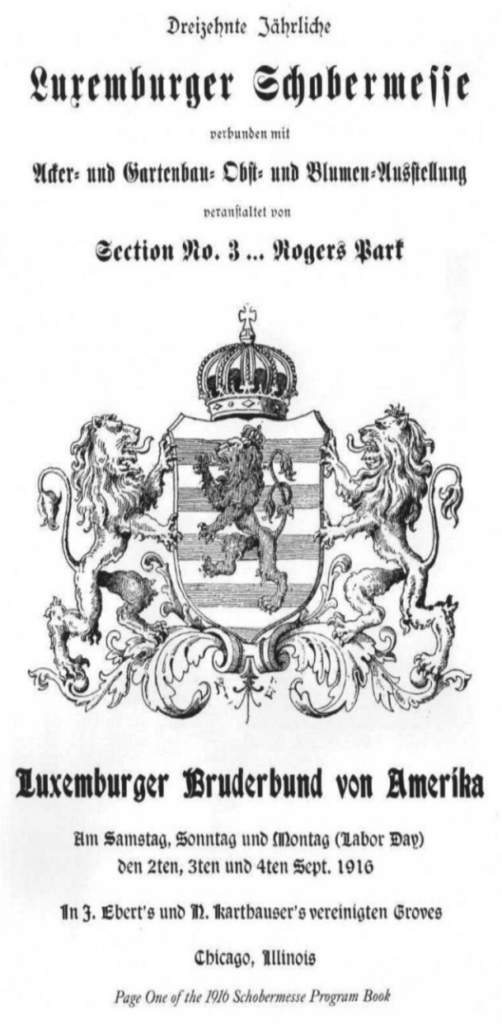
The war in Europe and the occupation of Luxembourg by the German army had an impact on the United States as well. In 1917, America joined the allied nations in fighting against the Kaiser. The 1919 Schobermesse Program Book featured an article entitled “Luxembourg and the War,” written by Captain N. Daubenfeld, which described conditions in the Grand Duchy and the hardships faced by its people during the German occupation. Another article in the 1919 program, compiled by Fred A. Gilson, highlighted the activities of Section 3 members who served in the Armed Forces during World War I.
At this juncture, it’s fitting to introduce Fred A. Gilson to the readers of this essay. According to the editor, Gilson’s work for the L.B.A. and Section 3 was marked by great devotion and fervor.
Fred Gilson, who married Eleonora Brons, was born in Mertzig, Luxembourg, in 1889 to Franz and Margaretha Dellere Gilson. He immigrated to the United States in 1906 and became a naturalized citizen in 1912. In 1920, he established the Gilson Employment Service.
Shortly after arriving in America, Gilson joined Section 3. In 1920, Joseph LaPlume served as Section President, and Fred A. Gilson chaired the Schobermesse Committee. This festival was the first Schobermesse following the signing of the Armistice on November 11, 1919. The program book included an article by Albert P. Schimberg titled “A Land of Mary,” which told the story of the Blessed Virgin Mary, the Consoler of the Afflicted, who is the Patroness of Luxembourg.
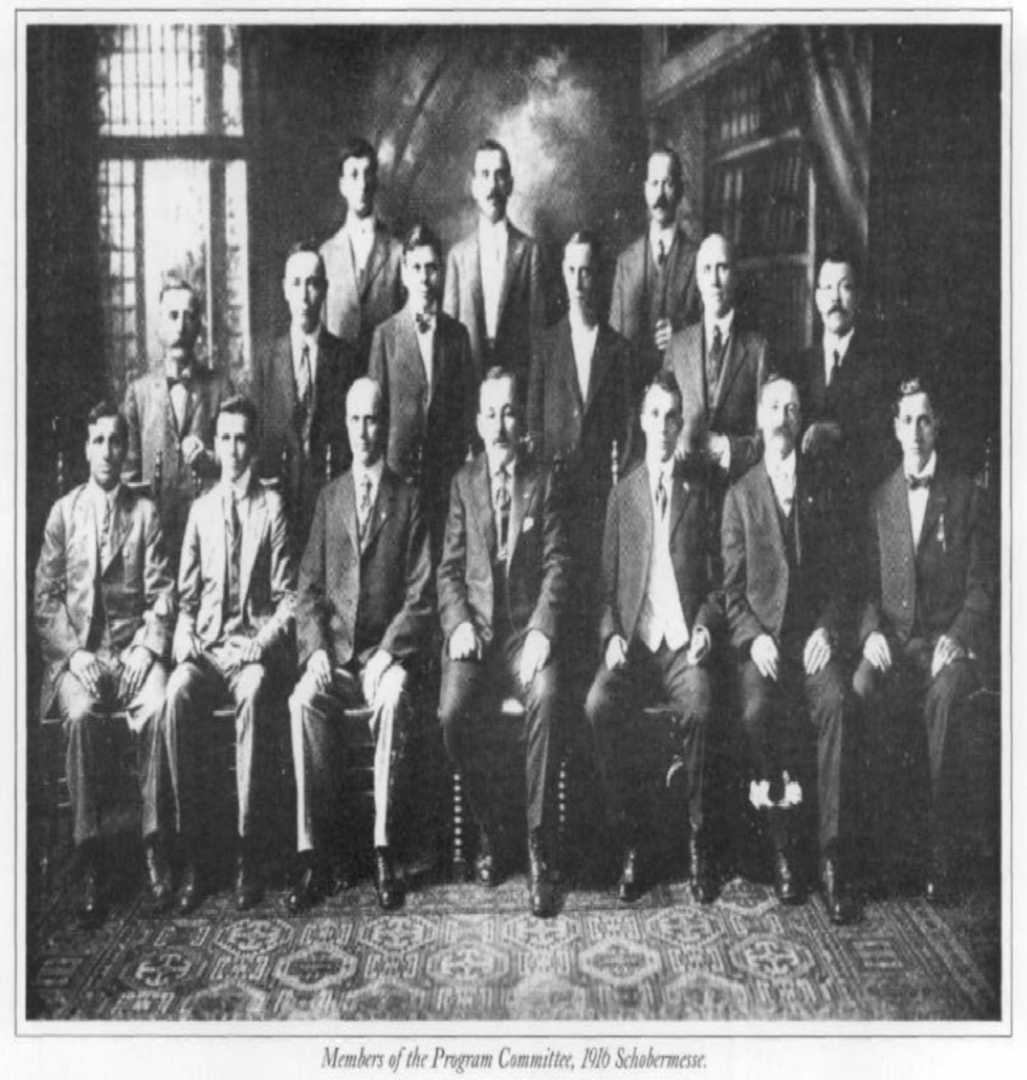
Between 1921 and 1927, the Schobermesse festival, much like the Roaring Twenties itself, grew in scope and popularity. Section members continued to vie for positions on the Schobermesse Committee.
The 1921 Schobermesse awarded cash prizes totaling $600—a significant sum at the time. In 1925, the event relocated from the Karthauser/Eberts Groves in Chicago to Klein’s Grove at Crawford and Lincoln in Tessville (now Lincolnwood), Illinois. Notably, Anthony Obladen, a native of Port Washington, Wisconsin, printed the first 23 Schobermesse program booklets.
Fred Gilson chaired the Schobermesse Committee in 1921, succeeded by John Guirsch in 1922 and 1926, John B. Molitor in 1923, Joseph Winandy in 1924, Nick Flam in 1925, and John Fichter in 1927.
Program books from these years featured articles on topics such as the birth of the current Grand Duke in 1921, the Luxembourg Consuls in the United States, the 1923 Grand Lodge Convention in Chicago, and a piece on Mr. O’Bladen, the late publisher of the Schobermesse programs and a native of Ozaukee County, Wisconsin.
The year 1928 marked a milestone for Section 3, as the Schobermesse celebrated its 25th anniversary with its largest program book to date, including a group photo of Section members. Charley Landerer’s Grove in Niles Center (now Skokie) was rented for the event, which began with a grand parade. A prize fund of $150 was designated for the best-decorated automobiles. Fred Gilson served as Chairman once more, with Nicholas Nilles, one of the foremost Luxembourg pioneers in the U.S., as Secretary. An article by Gilson in the program book, titled “Some of the Soldiers and Their Activities,” highlighted the experiences of Section 3 members who had served in World War I in France and Luxembourg.
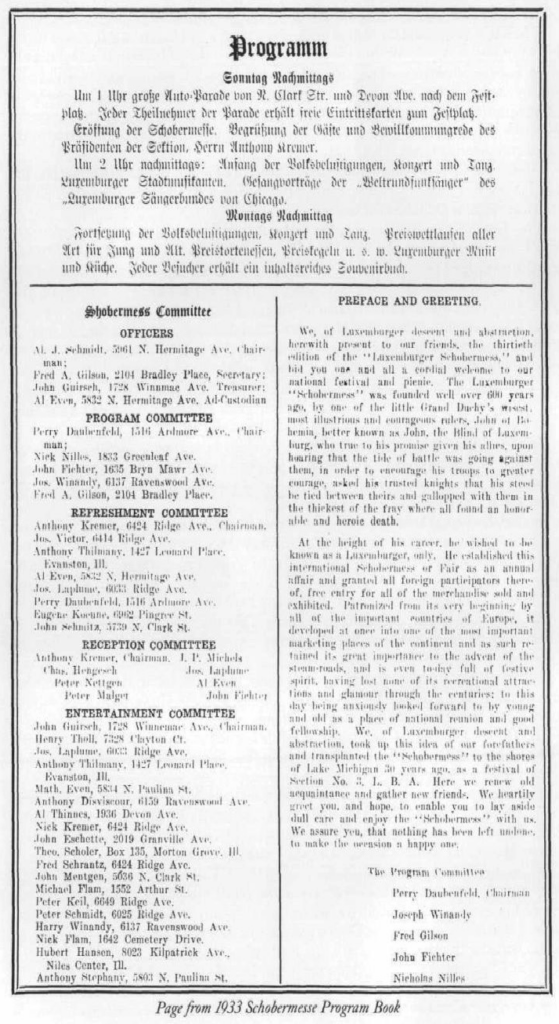
Before his passing on May 1, 1964, Gilson was elected Grand President of the L.B.A. in 1931 and held that post for 12 years until his retirement in 1943.
His most notable contribution to the L.B.A. was his dedication to documenting the history of the Brotherhood and its sections. For instance, he authored the 1938 Golden Jubilee Book, which laid the foundation for this work. He went on to write the history of Section 8 in 1952, the history of the Schobermesse in 1953, and the history of Section 21 in 1957; all of which later served as the foundation for the Luxembourg Brotherhood of America 1887–1987 Centennial Book.
In 1934, Gilson was appointed Chancellor of the Luxembourg Consulate in Chicago, and in 1954, he became Vice-Consul, a position he held until his death. The Luxembourg government honored him with decorations in 1934 and 1953. He and his wife, Eleonora, had two sons, Fred and John. Nicholas Nilles, born on October 4, 1875, in Eschdorf, Luxembourg, was one of the foremost Luxembourg pioneers in the United States. At the youthful age of 14, he left his homeland, drawn by the promise of adventure and opportunity in America. Nilles arrived in New York on April 21, 1889, and promptly made his way to Chicago. His early years in the new world were marked by toil and determination; he labored on various farms in the Chicago area for six years before stepping into public service.
In 1902, Mr. Nilles began his political career, initially joining the City Collector’s office in Chicago. Over the years, he served in multiple county offices, including the County Clerk’s, County Treasurer’s, and Sheriff’s offices, and eventually became Deputy Clerk of the Municipal Court in 1931. Throughout his distinguished career, he also assisted 327 Luxembourgers in obtaining American citizenship, a testament to his dedication to the immigrant community.
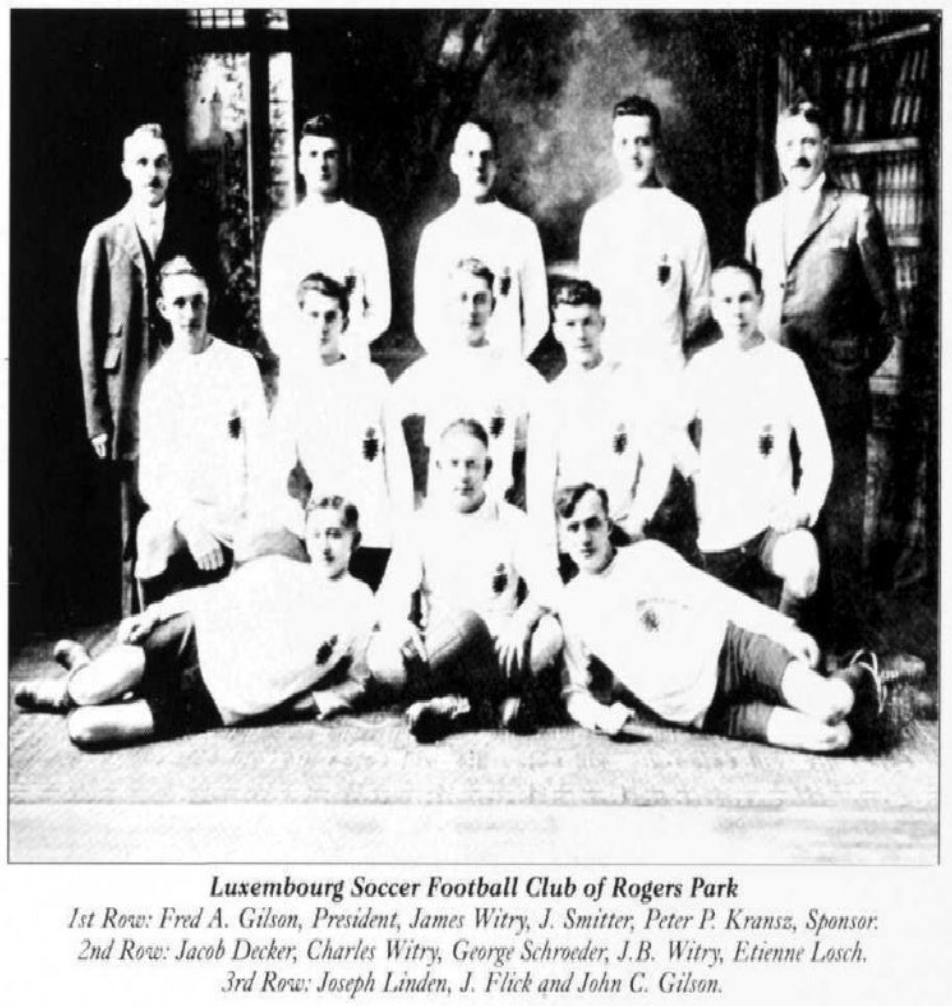
One of the crowning achievements of Mr. Nilles’ life was his fifty years of service as Grand Secretary of the Luxembourg Brotherhood of America (L.B.A.), a prestigious role he assumed on February 13, 1899, at a convention in Uhlich’s Hall, Chicago. Known for his unwavering efficiency, he held this position until the convention in Remsen, Iowa, on May 1, 1949, serving under twelve Grand Presidents, from John Hankes to Harry Trausch. Mr. Nilles was instrumental in establishing Sections 3 through 25, significantly expanding the Brotherhood’s reach. In recognition of his contributions, he was honored as a Knight of the Oak Leaf Crown in the mid-1930s.

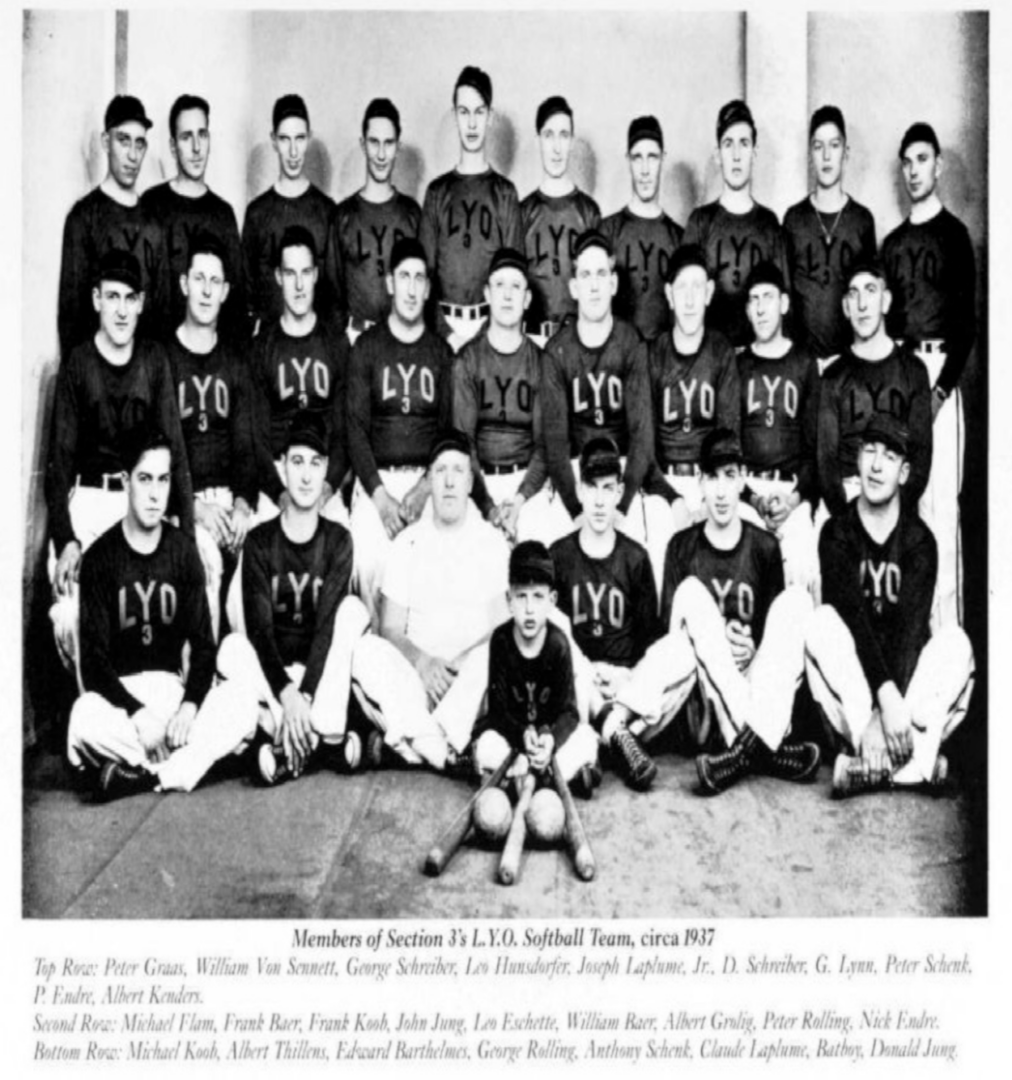
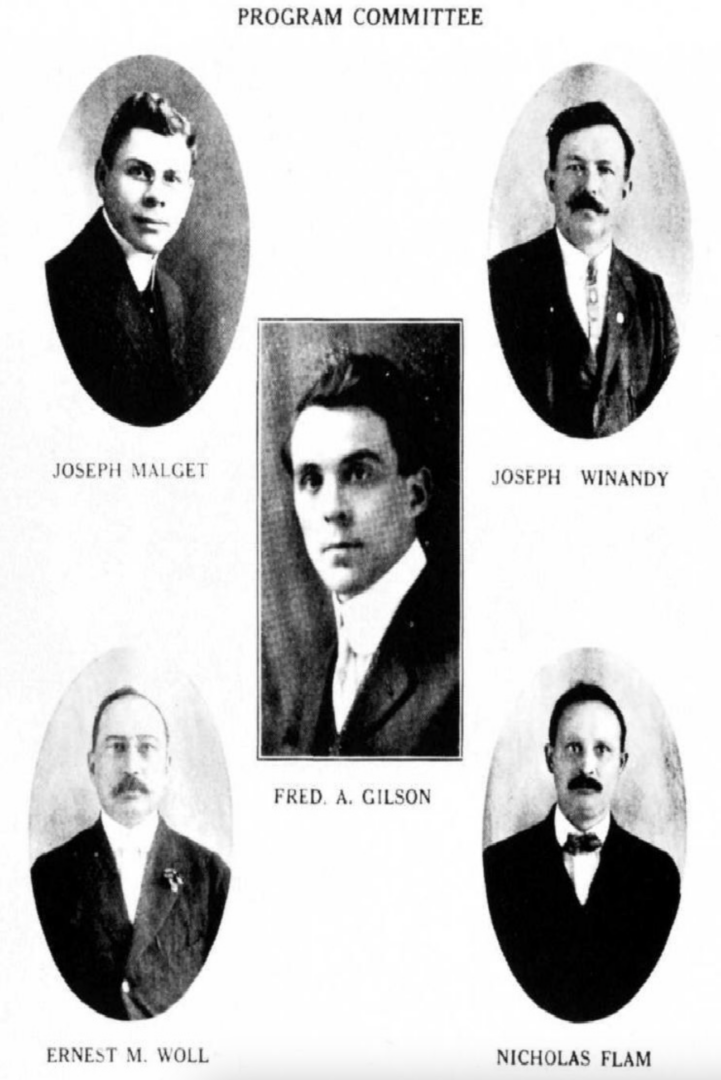
In addition to his role in the L.B.A., Mr. Nilles was a passionate advocate for Luxembourg heritage in America, particularly through his work with the Luxembourg Weekly, the nation’s Luxembourg newspaper. As owner and editor for 35 years, he navigated immense challenges to keep the publication alive until 1945, when it was acquired by Luxembourgers of America, Inc., a corporation founded by Consul General John Marsch and Grand Trustee John B. Krier. Marsch, also a member of Section 3, later received the title Commander of the Oak Leaf Crown in the 1930s and served as Consul General from 1937 to 1954, followed by Section 3’s John M. Trevelier until 1963.
During World War II, Mr. Nilles made substantial contributions to various war bond drives and other patriotic initiatives. For his unwavering service, the War Department awarded him a Certificate of Merit. As the next generation of leaders began to emerge by 1935, Mr. Nilles’ legacy as a pioneer continued to inspire. He passed away on August 7, 1950, leaving behind an indelible impact on both his community and Luxembourg’s heritage in America.
Section 3 also supported various sports teams, including the Luxembourg Soccer Football Club of Rogers Park in its early years, and later expanded to include bowling and youth softball teams. From the 1930s through the late 20th century, Section 3 benefited from the leadership of many strong figures, such as Eugene Koeune, Leo Eschette, and Perry Daubenfeld.
In 1935, Eugene Koeune, married to Barbara Wagner, served as President of Section 3, with Leo Eschette as Vice President. In 1937, Leo succeeded Koeune as President of the Section.
Eugene Koeune passed away in 1966. He had immigrated to the United States in 1911 from his hometown of Harlingen, Luxembourg. The following was printed in the 1967 Schobermesse program book:
In 1966, Section 3 mourned the loss of perhaps its most important member, Brother Eugene Koeune, who passed away on April 25, 1966. Mr. Koeune was one of the pillars upon which the Section was built. Throughout his time with us, he held the offices of President, Vice President, and Marshall with great distinction. Additionally, he served as Grand Trustee of the Grand Lodge, and much of the Lodge’s success is owed to his shrewd investments. Mr. Koeune chaired the Section’s Schobermesse on numerous occasions and contributed his talents to the flower, bar, and entertainment committees.
Eugene Koeune became a member of the Luxembourg Brotherhood soon after he arrived in the United States. He was a successful businessman in the gardening and greenhouse industry. In 1950, he retired and entrusted the business to his sons, who continue to operate it today. Mr. Koeune made one return trip to Luxembourg in 1921 and an extended visit in 1952 with his beloved wife, Barbara. To this day, Section 3 remembers and deeply misses the guiding spirit of one of its staunchest supporters, Mr. Eugene Koeune.
Leo Eschette was born on April 20, 1908, to John and Emma Kuschel Eschette. His father, John, had immigrated to the United States from his hometown of Noertringan, Luxembourg, in the early 1890s and established a greenhouse business in Rogers Park.
Leo attended St. Henry’s parochial school, and after graduating from high school, he joined his father in the family business, which he maintained after his father’s passing in 1936. On March 13, 1927, Leo was inducted as a member of Section 3. His dedication to Section 3 was unwavering, as he served on every Schobermesse committee from 1934 until its conclusion in 1967. In 1937, he was elected President of Section 3 and served in that role for twelve years until 1949, when he was elected the 13th Grand President of the L.B.A. at the Convention held in Remsen, Iowa.
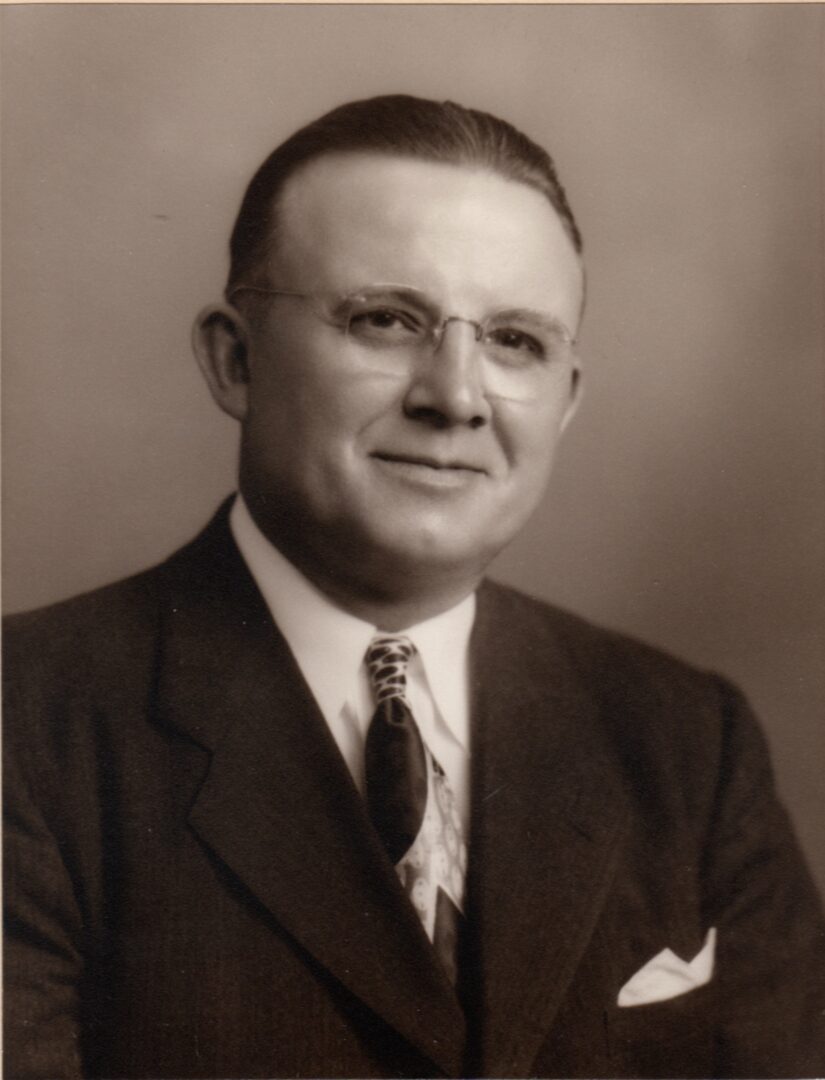
Leo married Margaret Baer on October 17, 1930, and together they had six children, whom they raised on their greenhouse property at Hoyne and Granville in Rogers Park. Two of their children were named after H.R.H. Charlotte and H.R.H. Jean.
After selling the greenhouse business, Leo became the manager of Luxembourg Gardens. In 1965, he retired as Grand President to focus on his management duties at the Gardens. Leo Eschette passed away in 1984.
During Leo’s tenure as Section 3 President, the Schobermesse continued to thrive as the premier event of the Brotherhood. The 1943 Schobermesse took place at the Old Limits Picnic Grove at Crawford and Devon Avenues in Lincolnwood. That year’s program book included many articles about the war, including one by former Grand President Fred A. Gilson, detailing the contributions of Section 3 members in the armed forces.
In 1943, Section 3 member and Grand President Fred A. Gilson retired from the Grand Lodge. To succeed him, the representatives at the 1943 Convention chose another Section 3 member, Perry Daubenfeld, who became the Grand Lodge’s 11th President.
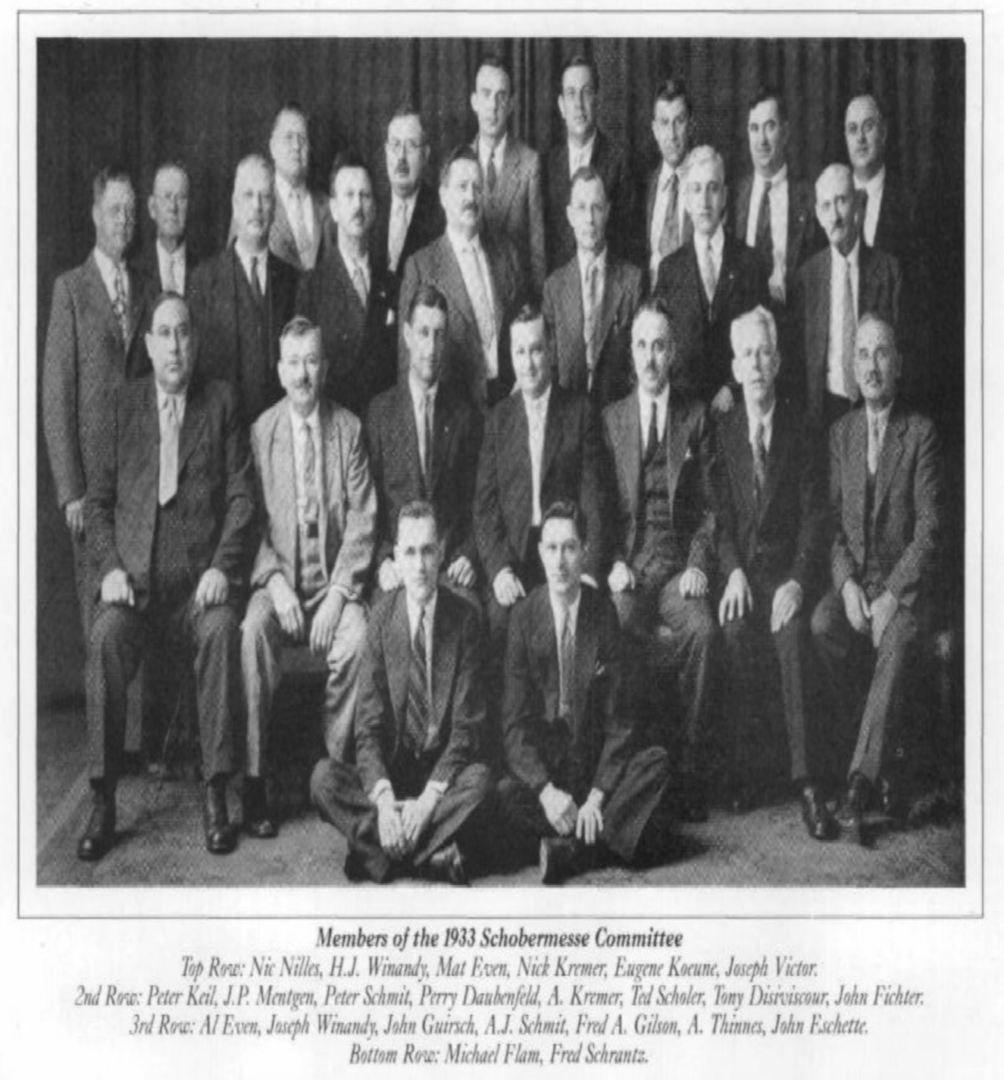
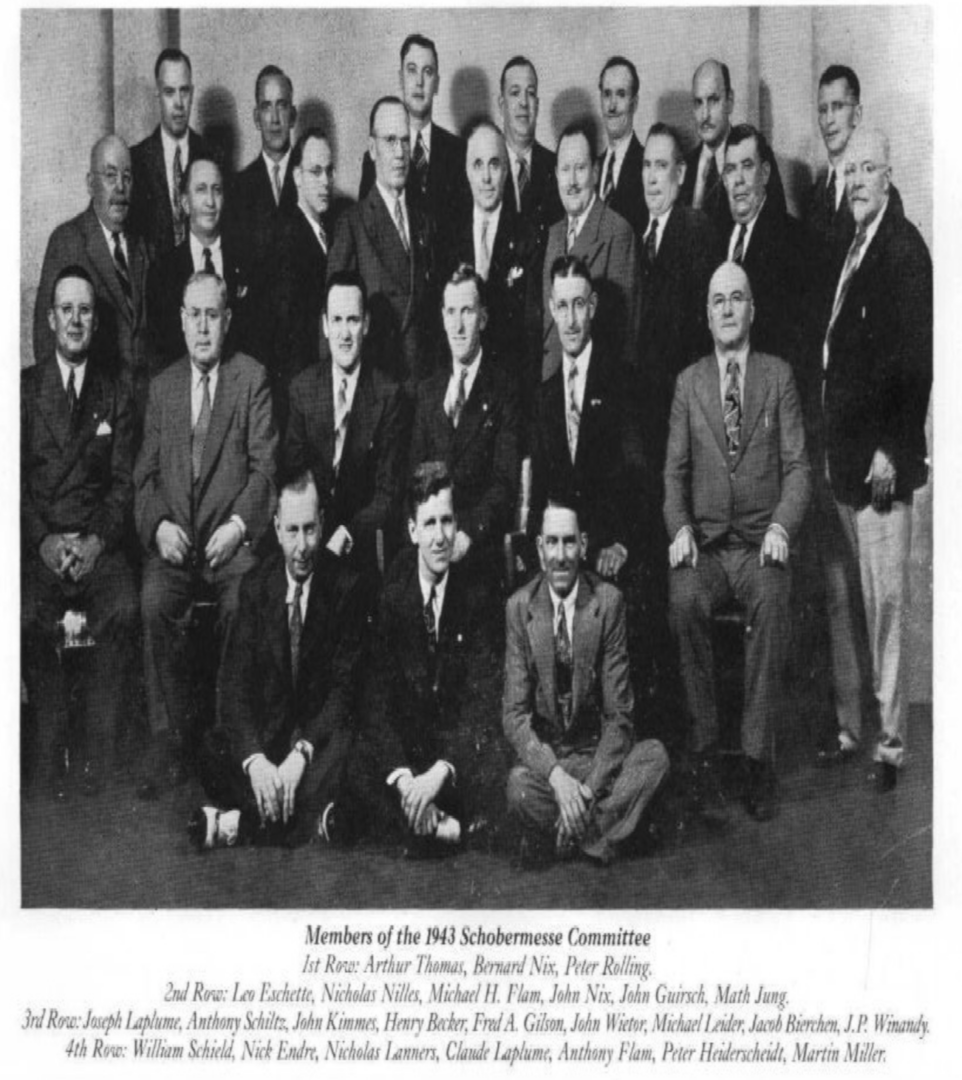
Leo Eschette served on every Schobermesse committee from 1934 until 1967 and held the position of Section 3 President from 1937 to 1949. He later became the Grand Lodge’s 13th President, a role he held until 1965. Eschette passed away on March 6, 1984, and was laid to rest at the All Saints Catholic Cemetery and Mausoleum in Des Plaines, Illinois, (Sec 6 Lot N 1/2 8 Block 6 Grave 3).
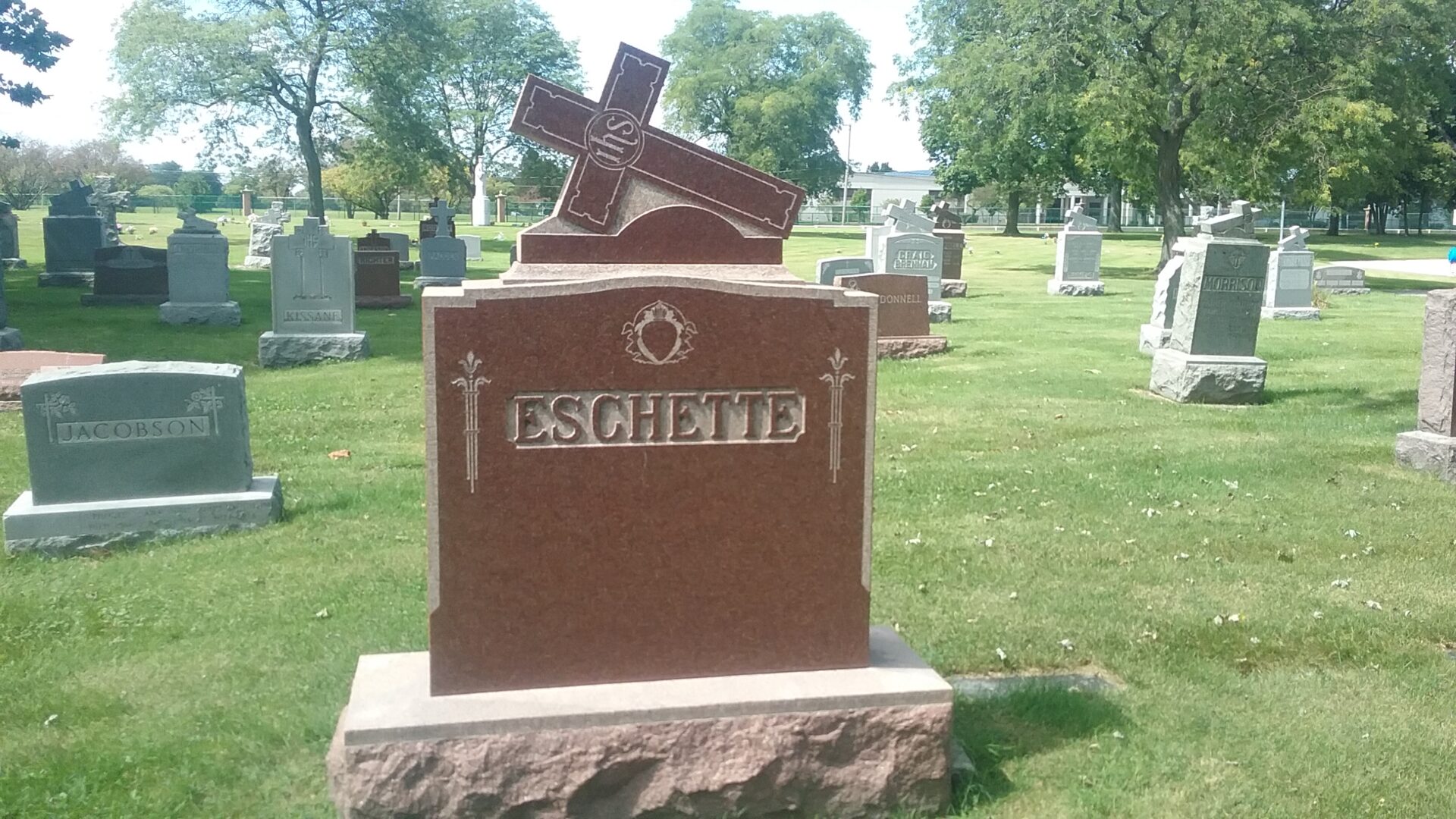
Perry Daubenfeld was born on August 14, 1879, in Reckingen (Mersch), Luxembourg, to Jean P. and Catherine Loesch Daubenfeld. In 1893, he immigrated to America and settled in Chenoa, Illinois. On December 3, 1900, he enlisted in the United States Marine Corps and saw active duty in Panama and the Philippines. After his discharge, he returned to Illinois, where he married Louise Stoerzbach of Dixon, Illinois, and together they raised two children, Alfred and Hilda.
In 1916, Daubenfeld reenlisted, this time joining the U.S. Army. He served under General John J. Pershing and alongside notable figures such as First Lieutenant George S. Patton, Jr., and fellow Luxembourger Harry Trausch during the punitive expedition against Pancho Villa along the Mexican border. In 1917, holding the rank of Captain, Daubenfeld was sent to France, where he led the 132nd Infantry, 33rd Division, in major offensives, including the Somme, Ancre River, and Meuse-Argonne. During the Meuse-Argonne battle, he was gassed, an injury that affected him for the rest of his life.
Following his discharge from the Army in 1919, Daubenfeld moved with his family to South Dakota, hoping the change would aid his recovery from his war injuries. In 1925, the government of Luxembourg appointed him Consul, granting him jurisdiction over South Dakota, Nebraska, Colorado, and Kansas. After an extended visit to Luxembourg from September 1924 to December 1926, he returned to Chicago, rejoined the U.S. Postal Service, and resumed his involvement in Section 3. Despite his move, Daubenfeld retained his consular appointment until he died in 1945.
By 1935, Daubenfeld had become a Trustee of Section 3, holding this position until May 1943, when he was elected Grand Lodge President, succeeding Fred Gilson. In January 1945, he passed away from a heart attack. In recognition of his service, Daubenfeld was honored with a full-dress military funeral, with representation from the Luxembourg government. His passing was a loss to both his adopted country and the Luxembourg Brotherhood Association, where he was cherished as a dedicated member and dear friend.
In 1951, Al Ammon served as President of Section 3. The officers of the Schobermesse Committee included Leo Eschette as Chairman, Peter J. Mersch as Financial Secretary, Peter P. Michelau as Secretary, and Ernest Brunder as Treasurer. The program book that year featured an extensive article on “Luxembourg’s Foreign Policy” by Joseph Beck.
By 1953, the Schobermesse Book, with its distinctive gold cover, marked the 50th Anniversary of the fall festival. Al Ammon continued as president of the section, while Leo Eschette retained his role as committee chairman. Mr. Gilson contributed an article titled “Luxembourg Golden Jubilee Schobermesse – Reminiscences of 50 Years,” highlighting section activities over the past five decades, which provided a valuable historical record.
Throughout the history of the L.B.A., it has sometimes been necessary to merge or dissolve sections of the Brotherhood. While the closure of an individual section can be bittersweet, it often brings new strength as the remaining section gains members, ideas, and renewed energy. On July 3, 1954, Section 9 merged into Section 3, contributing members who would become future leaders, including Harry Trausch and Nicholas Colling.
Harry Trausch was born on September 23, 1892, in Bourscheid, Luxembourg. In 1913, he immigrated to America with his older brother, John, and settled in Chicago. After mastering English, Harry joined the U.S. Army to gain American citizenship. He served under General John J. Pershing on the Mexican border, alongside First Lieutenant George S. Patton, Jr., and Perry Daubenfeld, in pursuit of Pancho Villa. Like Daubenfeld, Harry was discharged from the Army, only to reenlist when World War I began. After his final discharge, he joined the U.S. Postal Service, where he worked until his retirement in 1954.
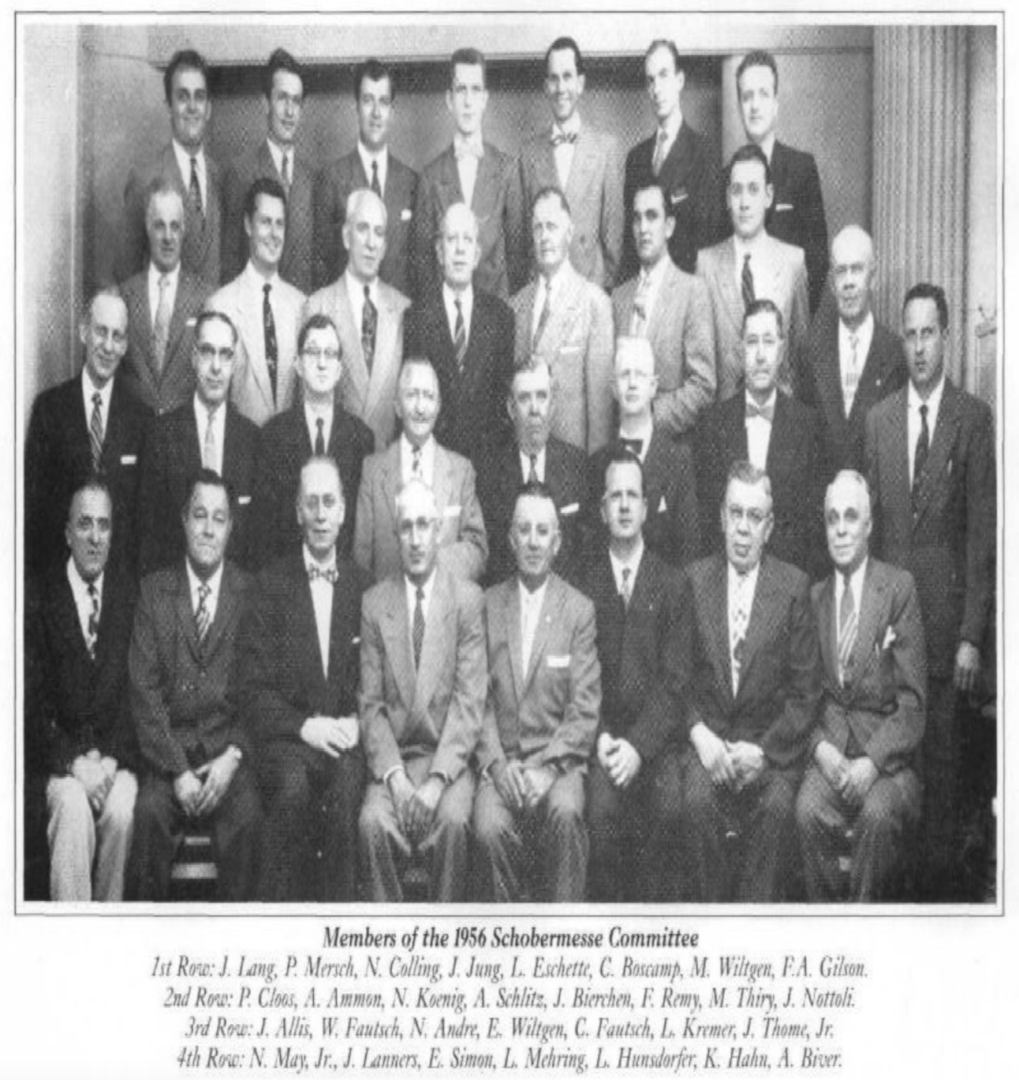
Around 1920, Harry became a member of Section 9, located in Chicago’s Lake View neighborhood. A highly active participant, he soon became President of Section 9 and later succeeded Perry Daubenfeld as Grand Lodge President in 1945. In 1949, he assumed the role of Grand Secretary, and by 1954, he had become the editor of the Luxembourg News. He also contributed to the Luxembourg Singing Societies and captained a team of left-handed bowlers in the L.Y.O. bowling leagues.
During and after World War II, Harry served both his native Luxembourg and his adopted country. He was appointed to War Bond Drive Committees to garner support from the Luxembourg community and served as Chairman of the Luxembourg Relief Commission from 1941 to 1947. For his dedicated service, he was awarded the Order of the Oak Leaf by the Luxembourg government.
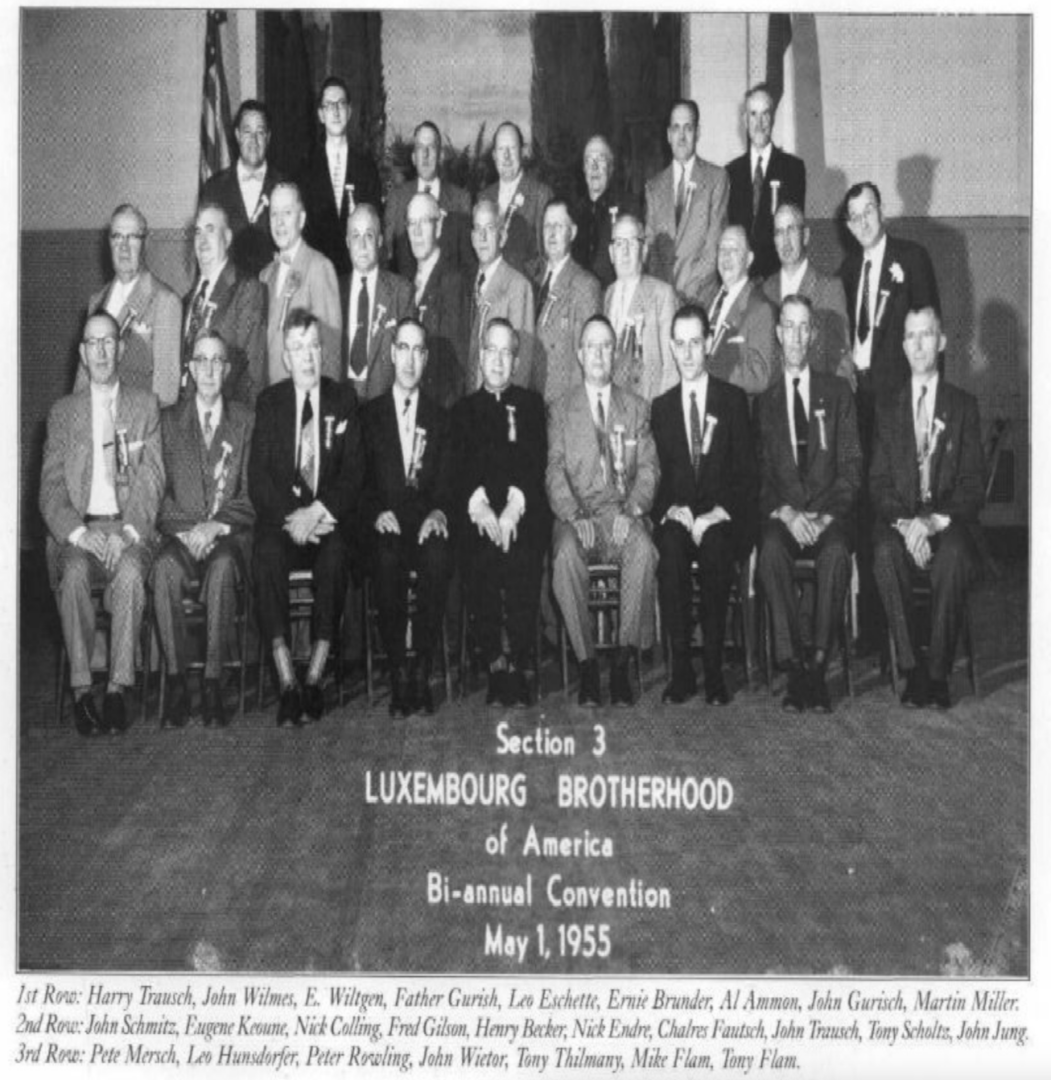
Harry’s most significant contributions to the L.B.A. and Section 3 were his editorial efforts for the Schobermesse Program Books and the Luxembourg News. Through his meticulous documentation, he preserved vital Brotherhood history that might otherwise have been lost. Harry passed away in 1974, survived by his wife, Margaret Decker, and their four children. His fifth child, Rev. Eugene Trausch, predeceased him in 1956.
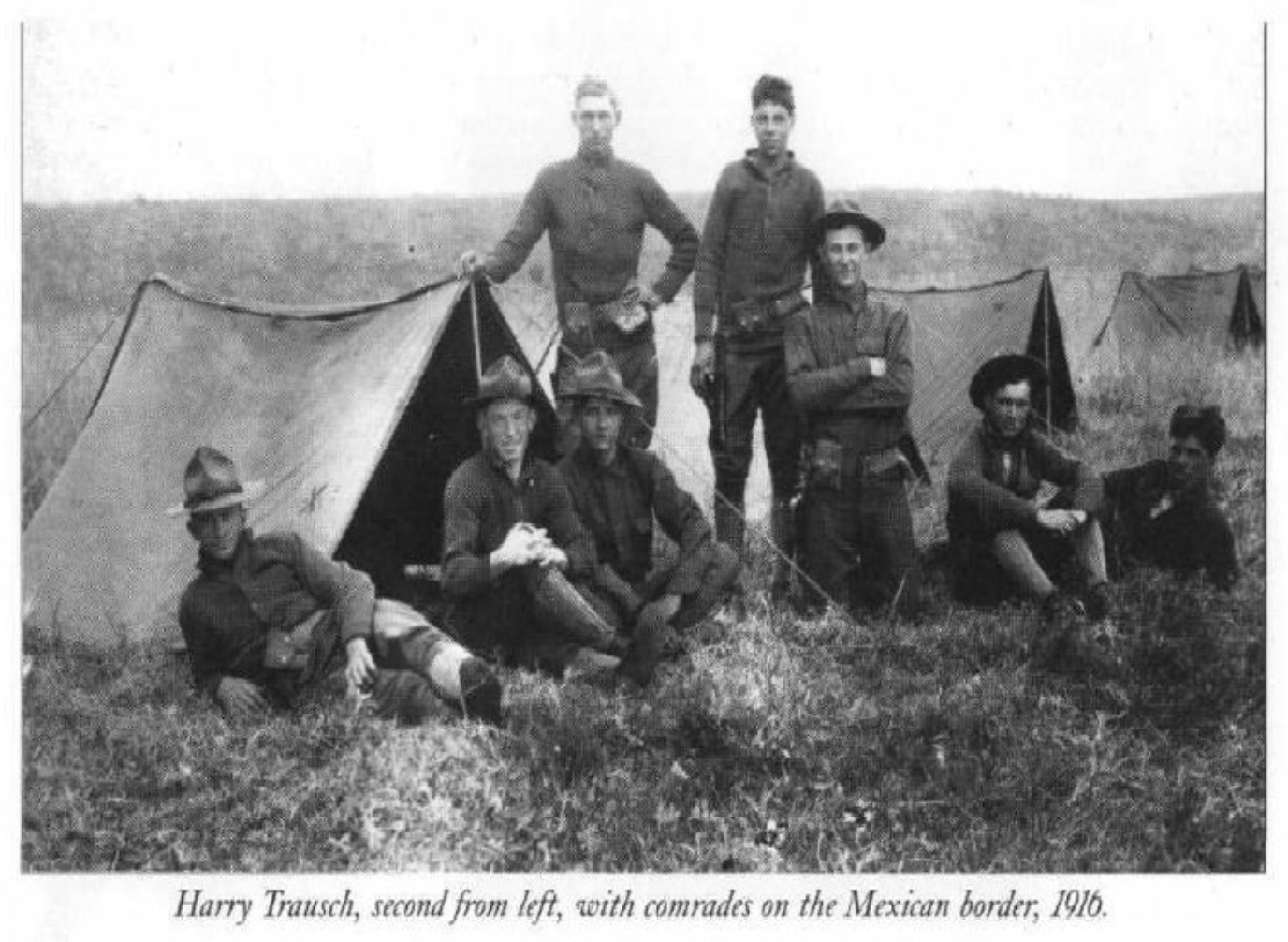
Nicholas “Nic” Colling was born on July 19, 1906, in Weiler-la-Tour, Luxembourg. In 1934, he and his wife, Marie (known to friends as Mary), immigrated to the United States, initially settling in Detroit. In 1937, they moved to Chicago, where Nic joined Section 9 of the Luxembourg Brotherhood Association. By 1954, Nic was serving as Section President when Section 9 merged with Section 3. He also held the role of President of the Luxembourg Singing Society. Upon Al Ammon’s retirement in 1956, Nic was elected President of Section 3, making him the only member to serve as President of two sections. He held this position until 1965.
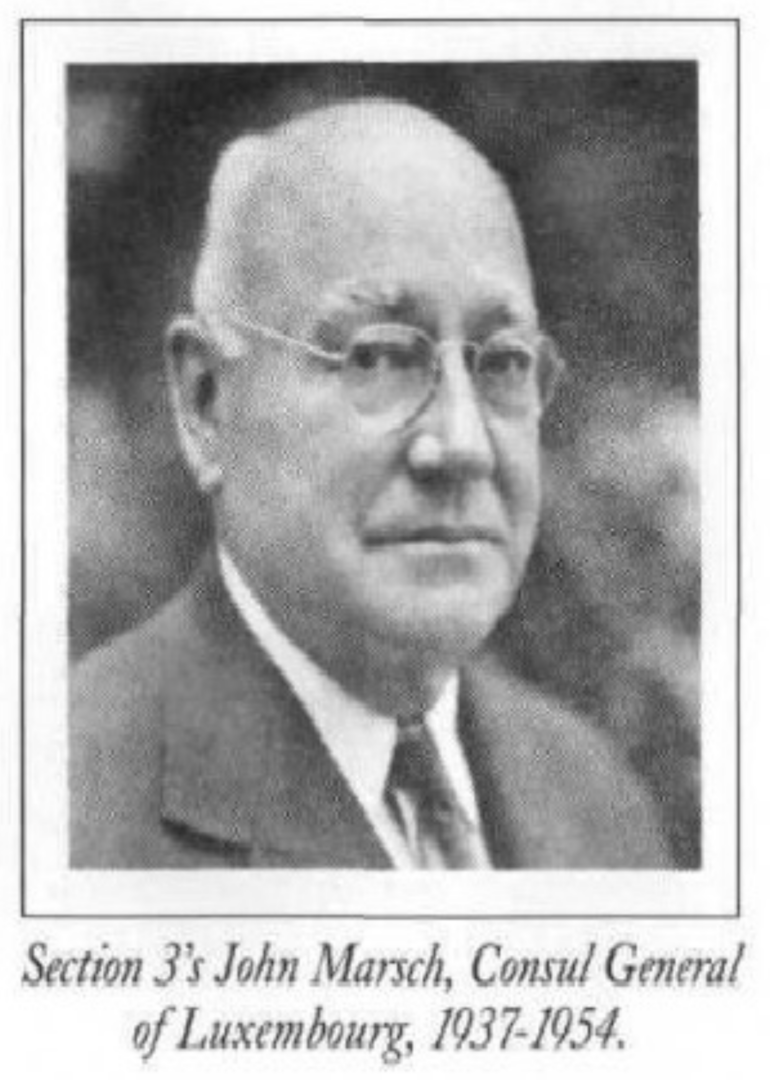
In addition to his work with the Brotherhood, Nic was involved in the food preparation industry, working with Hillman’s Stop and Shop, and later with Langford and Cooney Catering Company. He was also a member of the Chef’s International Organization, Chefs de Cuisine, and the Luxembourg Independent Club.
In 1965, Consul General Joseph J. Witry nominated Nic for the role of Vice-Consul of Luxembourg, and on February 1, 1968, he was appointed Consul. In 1976, he was promoted to Consul General of Luxembourg, a position he held until his retirement on December 31, 1985. Over his years of service, Nic received three distinguished honors from the Luxembourg government: Chevalier, Order of Merit; the Medal of the Oak Leaf Crown; and Officer, Order of Merit of the Grand Duke Adolph of Nassau.
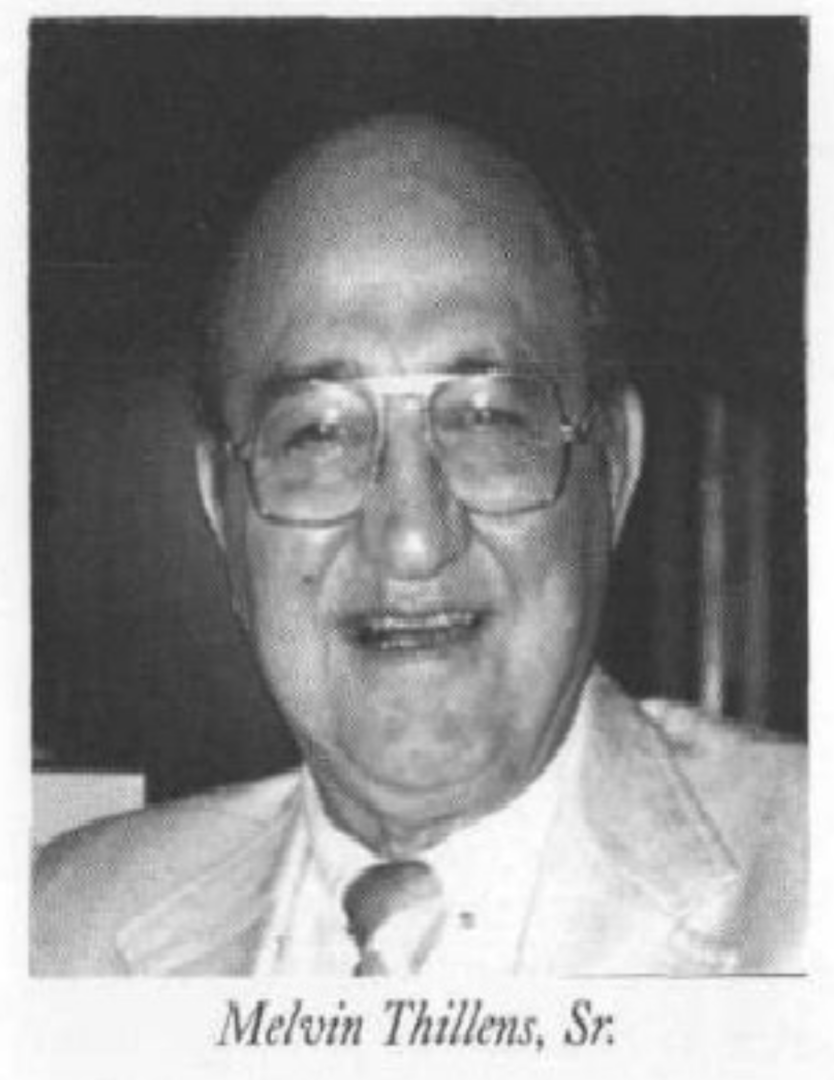
Melvin Thillens, a dedicated member of Section 3, was born in Chicago in 1914 to John and Therese Thillens, one of four sons. His father, who had emigrated from Luxembourg in the 1890s, established a greenhouse business on Peterson Avenue near Damen. In 1933, Mel worked as a bank clerk on Chicago’s north side, but when the bank closed during the Great Depression, he sought employment at a currency exchange. Shortly after starting, Mel thwarted an attempted robbery by five men. Impressed, the owner sold the business to him, marking the beginning of Thillens Checkcashiers, which would become a longtime advertiser in Luxembourg News of America.
With the success of his business ventures, Mel initiated a boys’ Little League program and, in 1939, constructed Thillens Stadium on Chicago’s north side. Built for $75,000, the stadium became a beloved venue for Little League baseball, high school football, and other community sporting events, providing a beautiful setting for young athletes to showcase their talents.
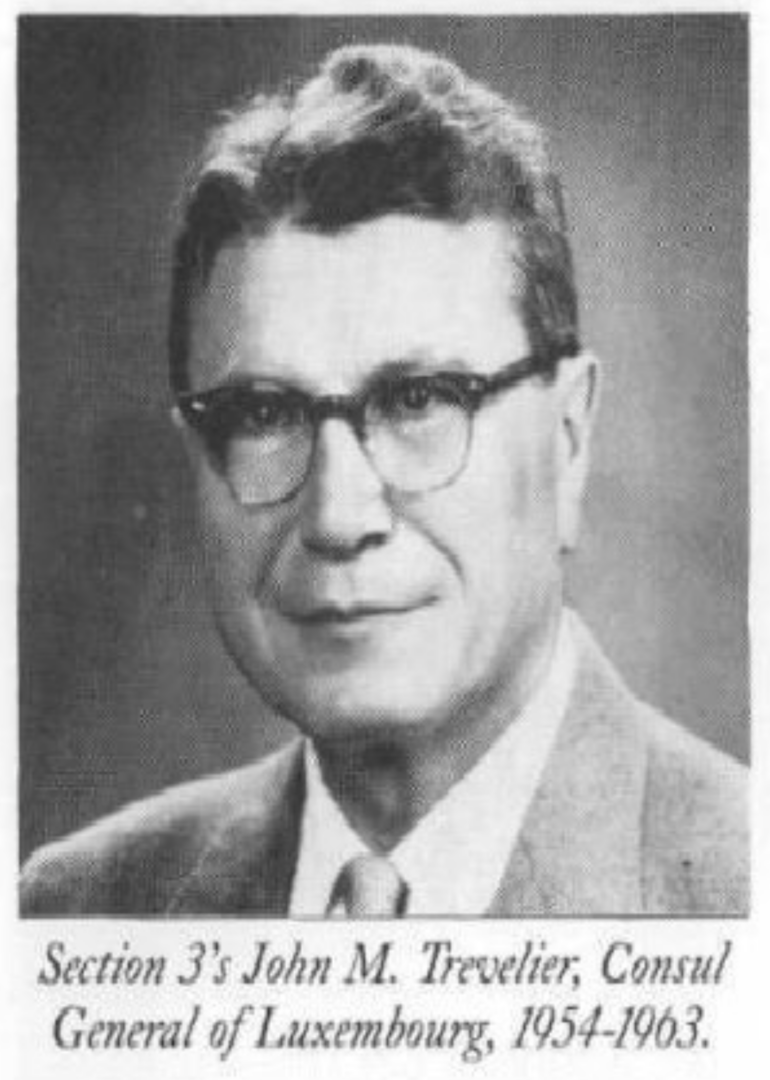
The 1950s and 1960s were prosperous years for Section 3, with well-attended Schobermesse festivals. In 1957, Nic Colling served as Section President and John Jung as Schobermesse Chairman. The festival, held at the Luxembourg Gardens on September 1 and 2, featured program book articles about prominent figures, including the late Bishop of Luxembourg and Melvin Thillens.
In 1986, in recognition of his contributions to Section 3, the Chicago Luxembourg community, and the Luxembourg government, Mel was named a Chevalier of the Order of Merit by H.R.H. Grand Duke Jean of Luxembourg.
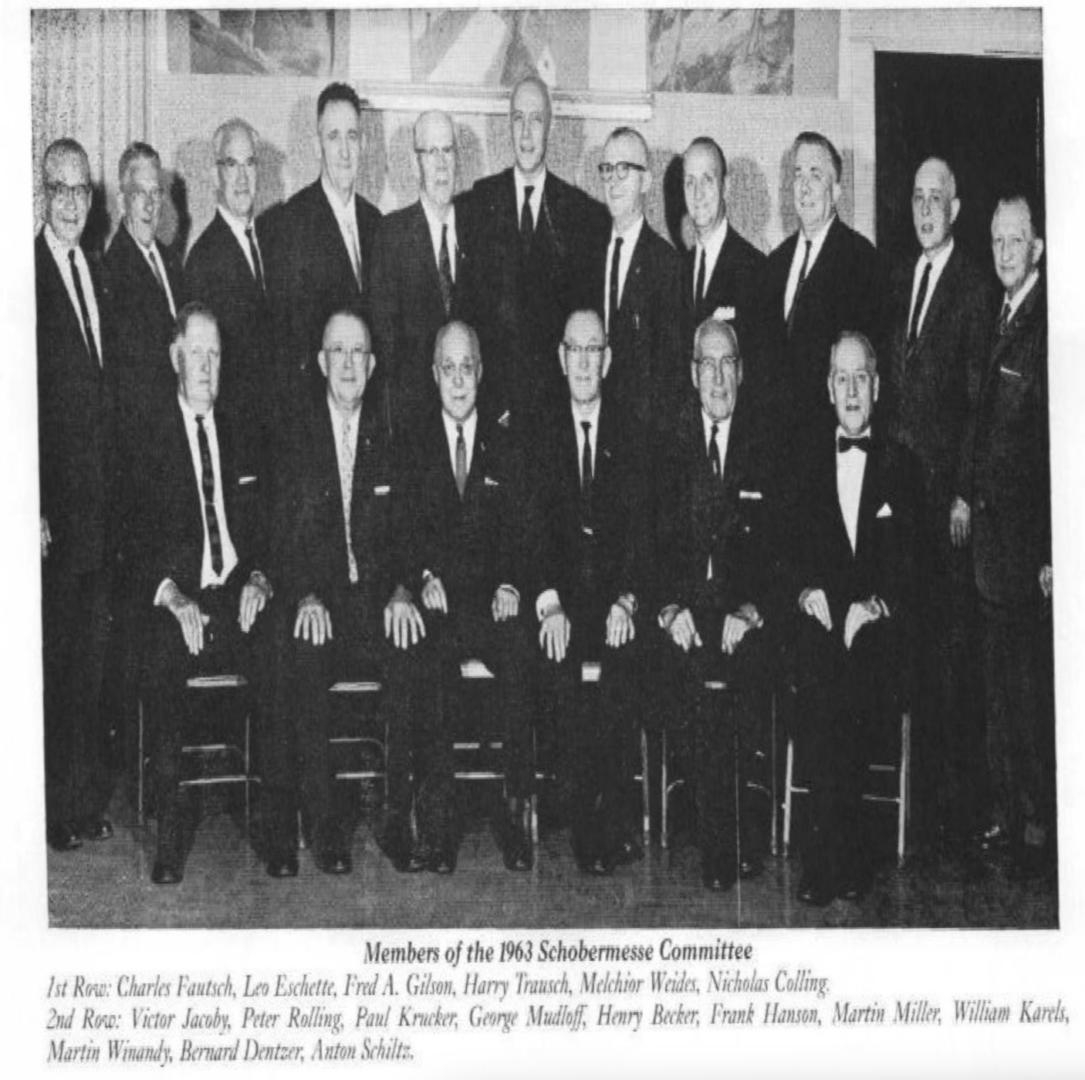
In 1957, the following appeared in the Schobermesse Program Book:
WELCOME TO SCHOBERMESSE
By Leo Hunsdorfer
The Schobermesse will soon be here.
A tremendous gala event
People come from far and near.
For they know their times well spent.
The committee has worked diligently.
To make a huge success
With Johnnie Jung holding the reins
To this year's Schobermesse.
As Sections official greeter
Harry Trausch takes the stand.
To welcome one to welcome all.
With warm and friendly hand.
Always will Martin Wiltgen?
At whole booth you chance a prize
So, for a buck try your luck.
You may have a surprise.
Those wishing to dance.
May step free on the floor.
To a popular waltz
Or a rock and roll score.
There'll be many games of chance.
To add to your delight
Too numerous to mention here.
They go far in the night.
Nick Colling in the kitchen
A master chef, is he?
To grant your wish in his delight
And your expectancy.
Leo Hunsdorfer was born in Chicago on April 11, 1910. He joined Section 3 on September 12, 1926, and held several officer positions. Known as the unofficial poet laureate of the L.B.A., his poems highlighted many events sponsored by the Brotherhood.
Many Section 3 members actively sought appointments to the Schobermesse Committee. In 1961, Peter Mersch served as chairman, followed by Nic Colling in 1962, Harry Trausch in 1963, George Mudloff in 1964, Gene Koeune in 1965, Leo Eschete in 1966, and Mel Weides in 1967. The last Schobermesse picnic was held in 1966, and in 1967, the Schobermesse was reimagined as a dinner dance at the Luxembourg Gardens.
In 1968, Section 3 decided to discontinue the Schobermesse due to rising operational costs. The Schobermesse has been a cherished tradition since its inception in 1904, lasting 64 years. The program books, meticulously compiled, remain a valuable resource, offering insights into the lives of Luxembourg immigrants who settled in Chicago and its suburbs.
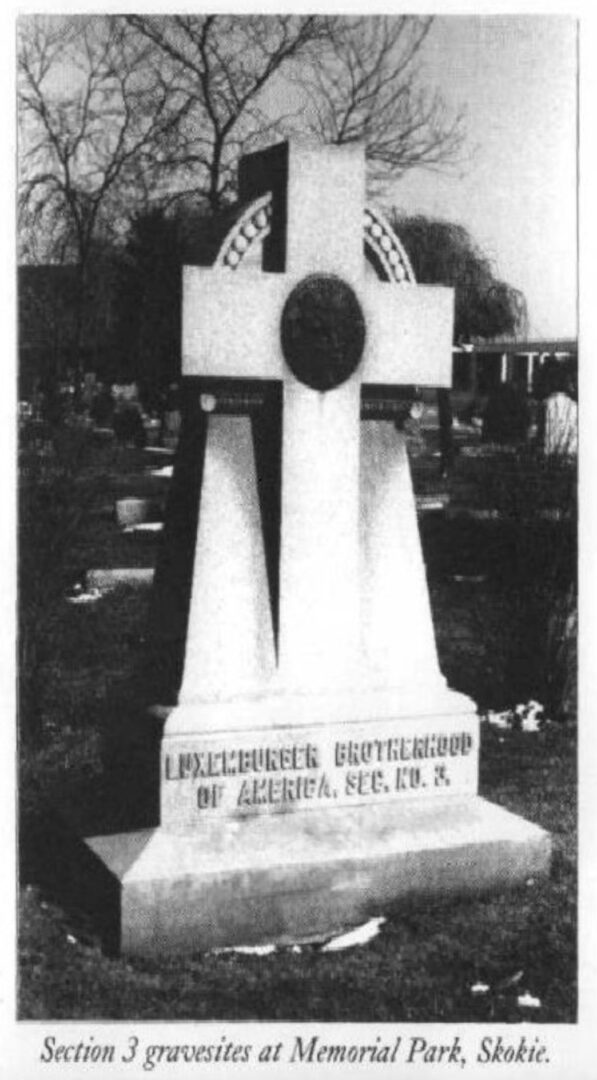
Section 3 is also the only section known to have purchased cemetery graves for members lacking the resources to do so. In 1916, the section acquired 32 gravesites at Memorial Park, located at 90 Gross Point Road in Skokie, Illinois. A large cross-shaped monument, situated at the head of the gravesite in Section 3 of the cemetery, identifies these graves as belonging to Section 3 of the L.B.A. While most plots are occupied, a few remain. Dolores Chozianin has lovingly maintained these graves, with help from Pamela Schroeder and Antoinette (Schroeder) Bislew.
The following Section 3 members are buried here:
| Matheis Backus | John Reuland | John Gilson | Nicholas Lahiere |
| Matt Weiler | Benjamine Betz | Jacob Ries | John Hansen |
| John Loutsch | Frank Weller | Victor Eischen | Valentine Rolling |
| Sergei Kajin | George Schwinnen | John C. Winandy | John Fautsch |
| Joseph Scholar | Nick Kiefer | John Thil | Tony Schroeder |
| Joseph Frank | Theo. Schultz | Nick Kulge | Mathias Weber |
In 1987, Section 3 remained active in Brotherhood affairs, meeting quarterly at the home of John Lang, who had served as the section’s treasurer for over 30 years. The officers of Section 3 at that time were:
| President | Ed Lohrmann |
| Vice President | John Keil |
| Financial Secretary | John Lang |
| Recording Secretary | Raymond Fritz |
| Sergeant At Arms | Tony Schroeder |
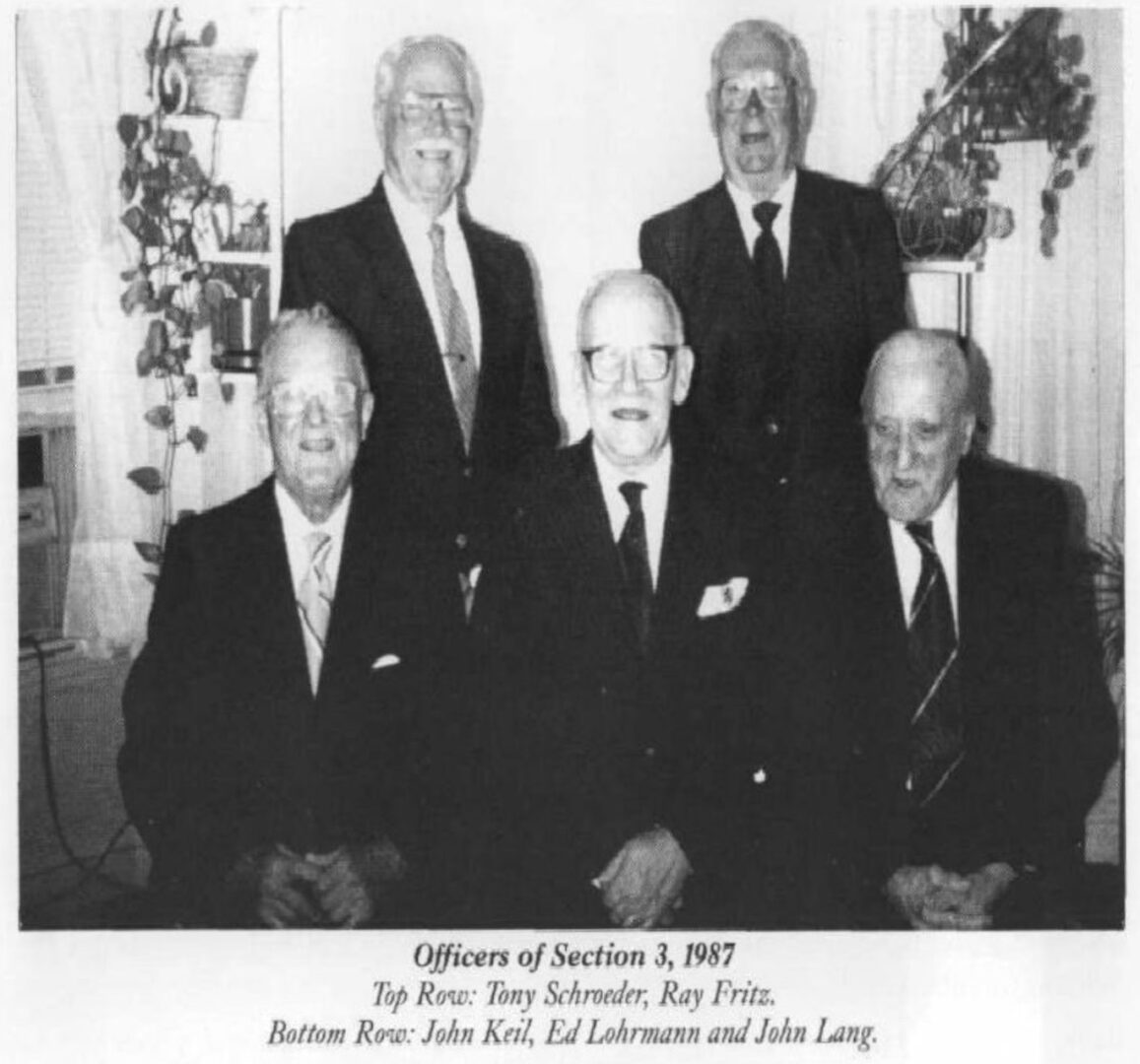
The following is a list of Life-Long Section 3 members:
| NAME | YEAR JOINED | NAME | YEAR JOINED |
| Joseph Burke | October 12, 1924 | George Schreiber | April 11, 1937 |
| John C. Fautsch | April 10, 1936 | Anthony J. Schroeder | December 18, 1936 |
| Michael Flam | April 8, 1923 | Roy Sheffield | September 13, 1936 |
| Valentine Flam | November 8, 1936 | Ferdinand Thillens | December 12, 1936 |
| Joseph Hansen | October 24, 1926 | Melvin Thillens | December 12, 1936 |
| Jacob A. Kellen | November 12, 1920 | Henry Thilmany | April 8, 1917 |
| John F. Lang | March 9, 1937 | Alphonse Thinnes | January 13, 1924 |
| Nicholas Michels | December 8, 1929 | Axel Thinnes | December 8, 1929 |
| John Nilles | July 22, 1913 | Walter Wegner | August 9, 1936 |
| P.J. Olinger | January 27, 1929 | Francis Weimeskirch | February 14, 1937 |
| Val Rolling | June 13, 1936 | Stephen Ziegler | March 14, 1937 |
With Section 3 as the driving force, the Schobermesse festival thrived for 64 years, hosted in various picnic groves on the north side of Chicago and nearby northern suburbs such as Tessville (now Lincolnwood), Niles Center (now Skokie), and Morton Grove. The tradition continued until 1967 when the property housing the Luxembourg Gardens (formerly Deckert’s Hall) at 6211 Lincoln Avenue in Morton Grove was sold.
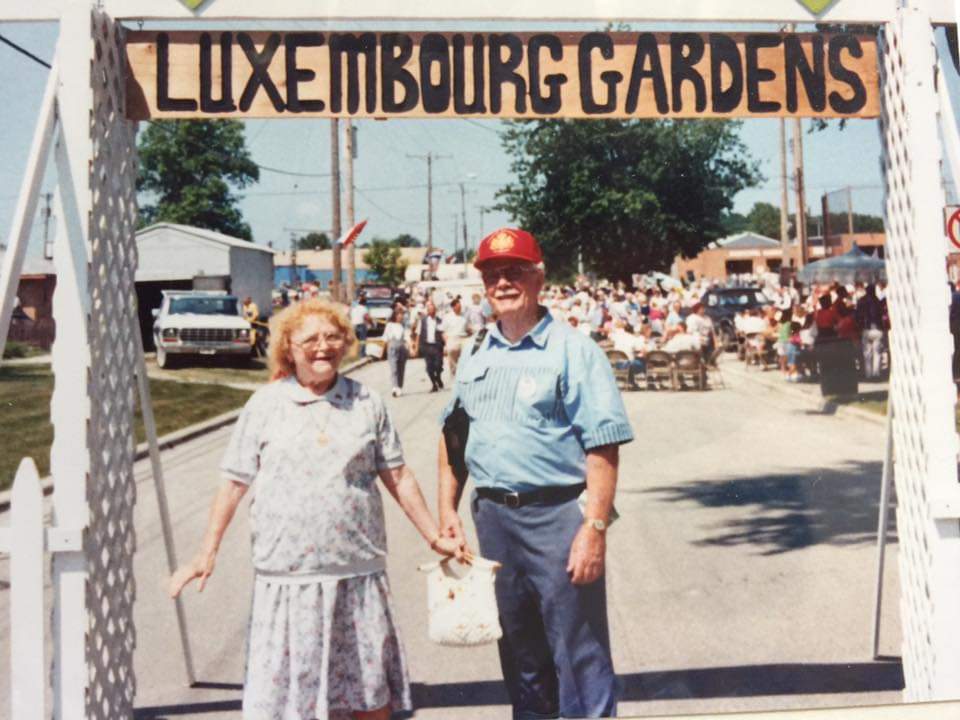
Section 3’s strong leadership continued into the latter part of the 20th century, with such men as John Keil, John Lang, George Meyers, and Anthony (Tony) J. Schroeder. The strong passion these men had for their heritage and the Brotherhood kept Section 3 alive despite dwindling membership due to the deaths of its aging members.
In 1987, the Grand Lodge and all its sections were essentially still a benevolent fraternal order with an insurance charter from the State of Illinois. At that time, the State of Illinois informed the Grand Lodge that they could not continue their charter as an insurance organization because they no longer conformed to the original requirements. The officers of the Grand Lodge worked feverishly to rewrite their by-laws and their mission statement so they could retain their official corporate status. They successfully readjusted themselves to become an association to promote the heritage of the Luxembourg descendants in the area.
While it was certainly challenging to do on paper, it was even more challenging to adjust the mindset of the numerous members and officers of all the Sections. In the case of Section 3, membership had been closed for a considerable number of years. The officers saw their role as a duty to honor the fiduciary requirements of paying the death benefits to the surviving families of members and felt almost as if they were caught “holding the bag,” and were stuck in this role. They paid themselves a modest compensation for fulfilling this task and covered the cost of their meetings out of their treasury. They did no fund-raising and had no social agenda since the demise of the Schobermesse in 1967. For some, the camaraderie and joy of sharing their Luxembourg heritage had been accomplished by their membership in the Luxembourg-American Social Club.
Following the untimely death of Steve Heinz, L.B.A. President, in 1989, new leadership stepped up to fill the void. Donald Hansen became the L.B.A. President, bringing a deep love for his heritage and a vision for the Brotherhood’s future. Don began attending Section 3 meetings, encouraging them to adapt to the new realities. He suggested opening Section 3 to new members, sparking a lively debate. Meeting minutes show that some leaders were concerned about limited meeting space, while others felt there was no incentive to join without death benefits.
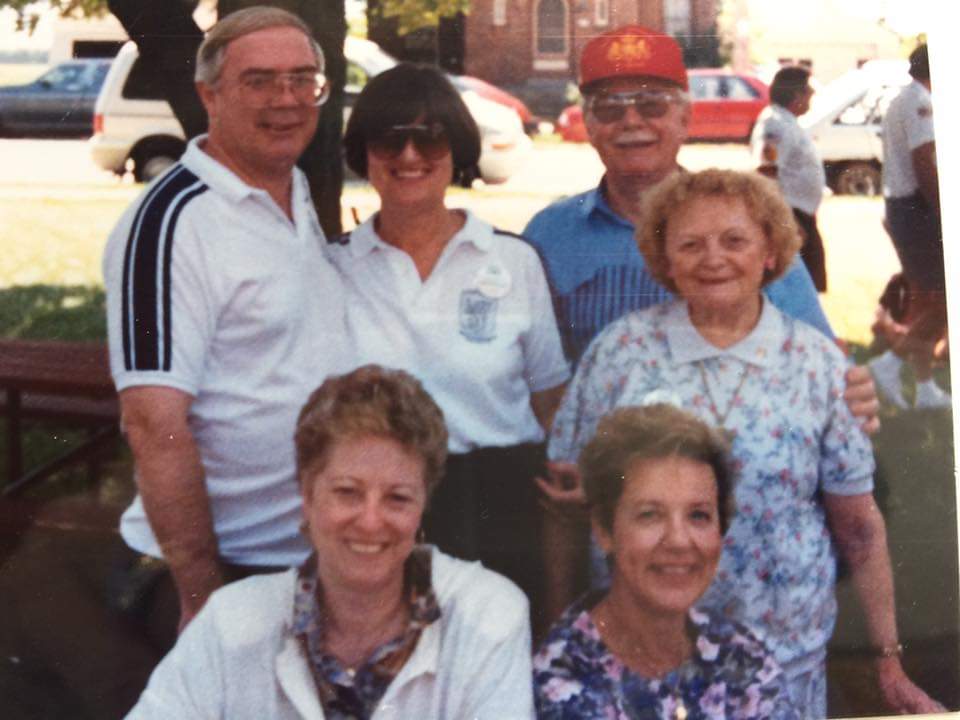
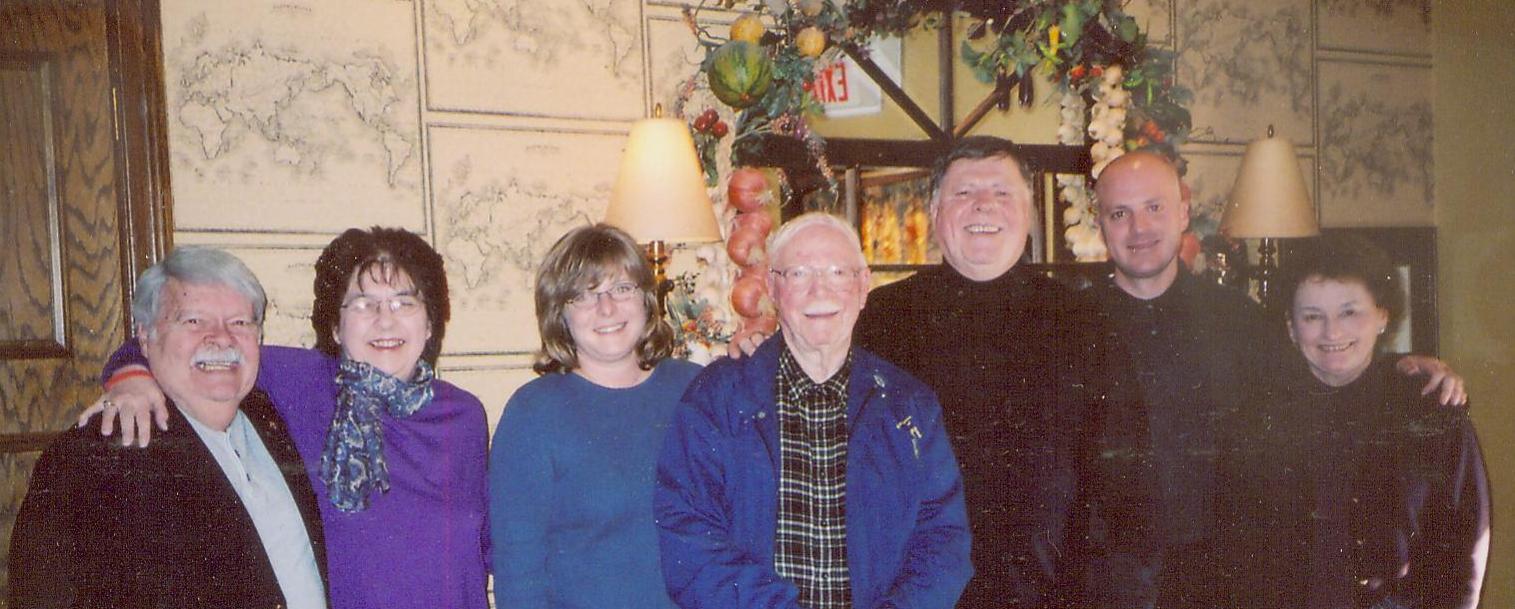
While the adjustment was difficult on paper, shifting the mindset of members and officers across all sections was even more challenging. In Section 3’s case, membership had been closed for many years. Officers viewed their role as a fiduciary duty to pay death benefits to the surviving families of members, feeling somewhat like they were “holding the bag” and stuck in this role. They paid themselves modest compensation for these tasks, covering meeting costs from their treasury. With no fundraising or social agenda since the Schobermesse ended in 1967, some found camaraderie and cultural connection through the Luxembourg-American Social Club.
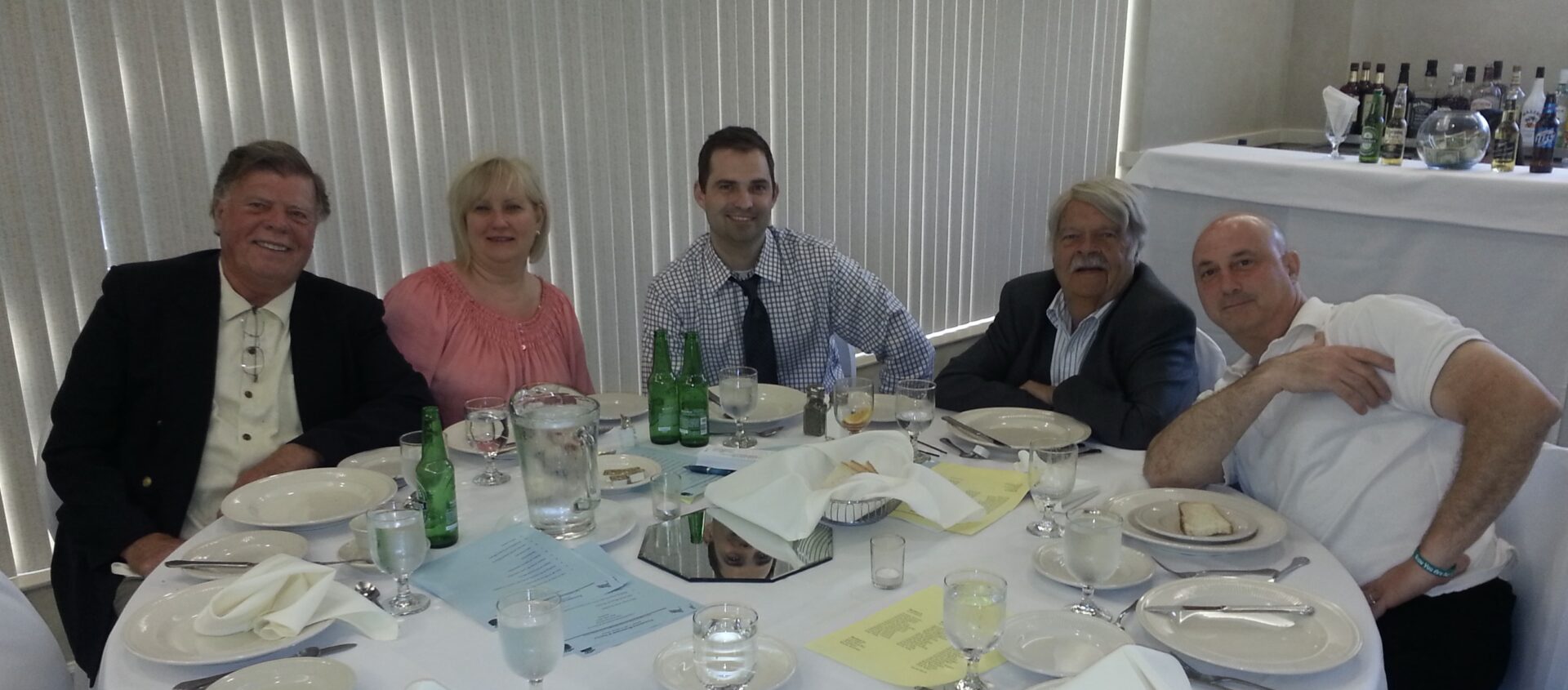
The two strongest advocates for accepting new members were Steve Simon, Sr., and Tony Schroeder. They believed new members were vital to Section 3’s future and warned that the organization might otherwise die out. With cautious approval from Section leadership, they took on the challenge of recruiting new members. In April 1991, Section 3 welcomed its first new members in over 20 years: Francis (Frank) Powers and Michael Keegan, both longtime Luxembourg American Social Club members. In July, two younger members, Steve Simon, Jr., and Peter T. Schroeder, joined. These new members recruited over 25 others within the first year, growing Section 3’s membership to more than 80 over the following years.
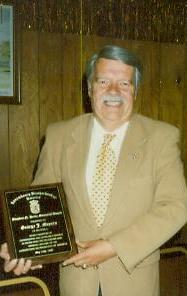
George Meyers
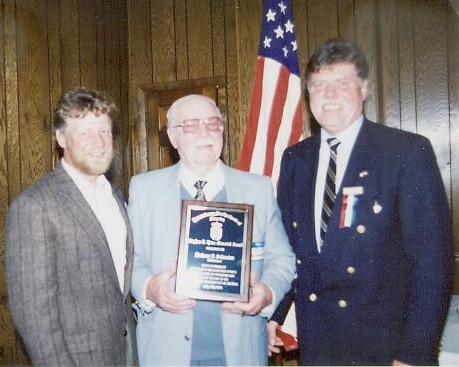
L-R: Tony JR, Tony SR, Pete Schroeder
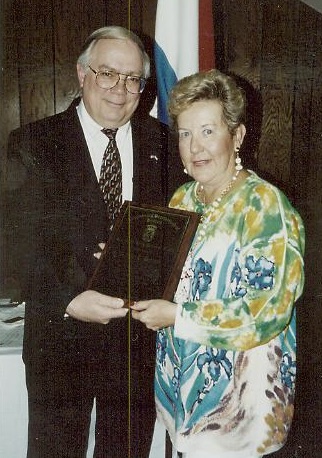
Don Hansen
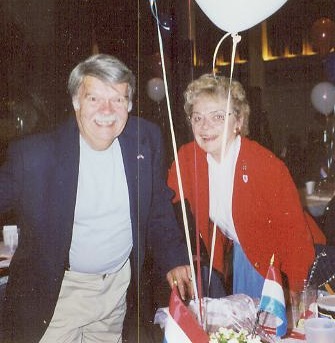
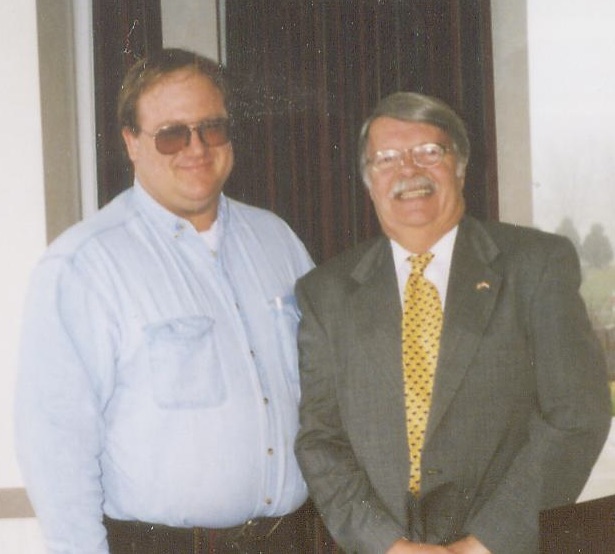
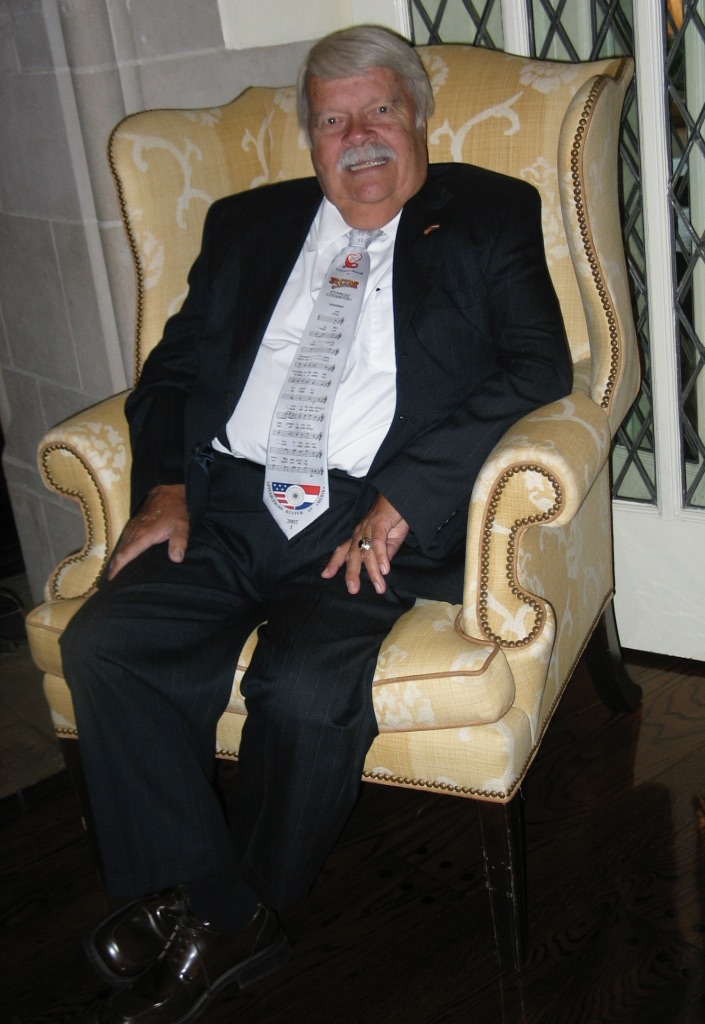
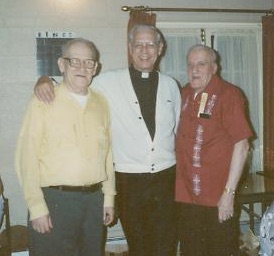
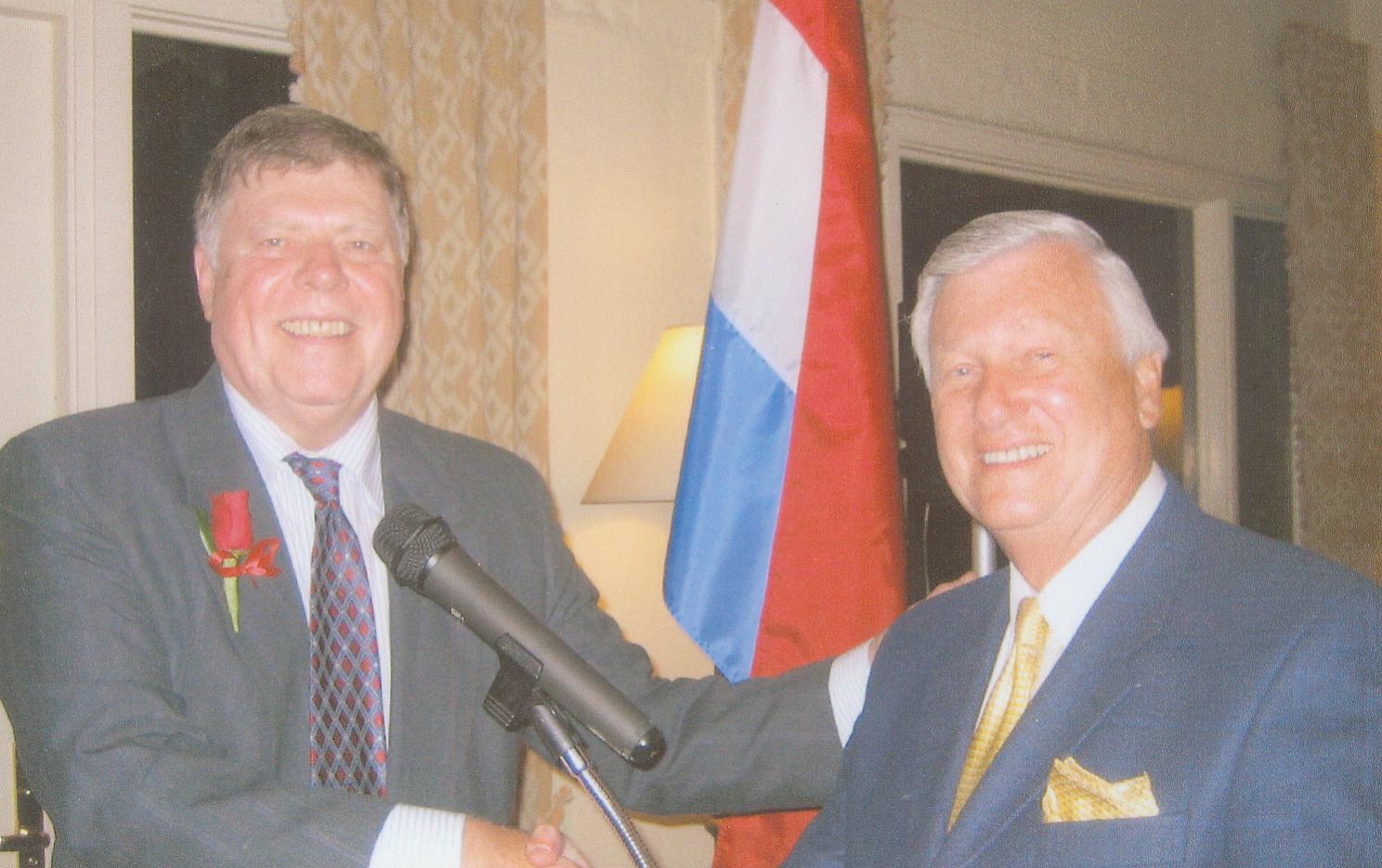
In 1992, Section 8 held a children’s Christmas party at the Niles Park District, inviting members from all sections. During the event, Gerda Hansen organized an impromptu children’s choir, teaching them to sing Christmas carols in German. The children enjoyed it immensely, and the idea was proposed to teach them a song in Luxembourgish. Tony Schroeder’s wife, Margaret, and Gerda, both originally from Austria, had become close friends. Since ten of Tony and Margaret’s grandchildren were in the choir, Tony offered his support.
Tony and Madeleine Simon (Section 3 members) coached the children on Luxembourgish pronunciation while Gerda taught them the music for the Luxembourg National Anthem and a hymn to the Blessed Mother. Around this time, Section 3 members George Meyers and Dolores Chozianin were annually decorating the Luxembourg Christmas Tree for the “Christmas Around the World” program at the Museum of Science and Industry. Gerda proposed showcasing the choir as part of the program. They performed as the Luxembourg Kanner Kour (Children’s Choir) and were joined by St. Nicholas (played by Steve Simon of Section 3) and the Husicker (played by Madeleine Simon of Section 3), who entertained the children by dragging off a “naughty boy.”
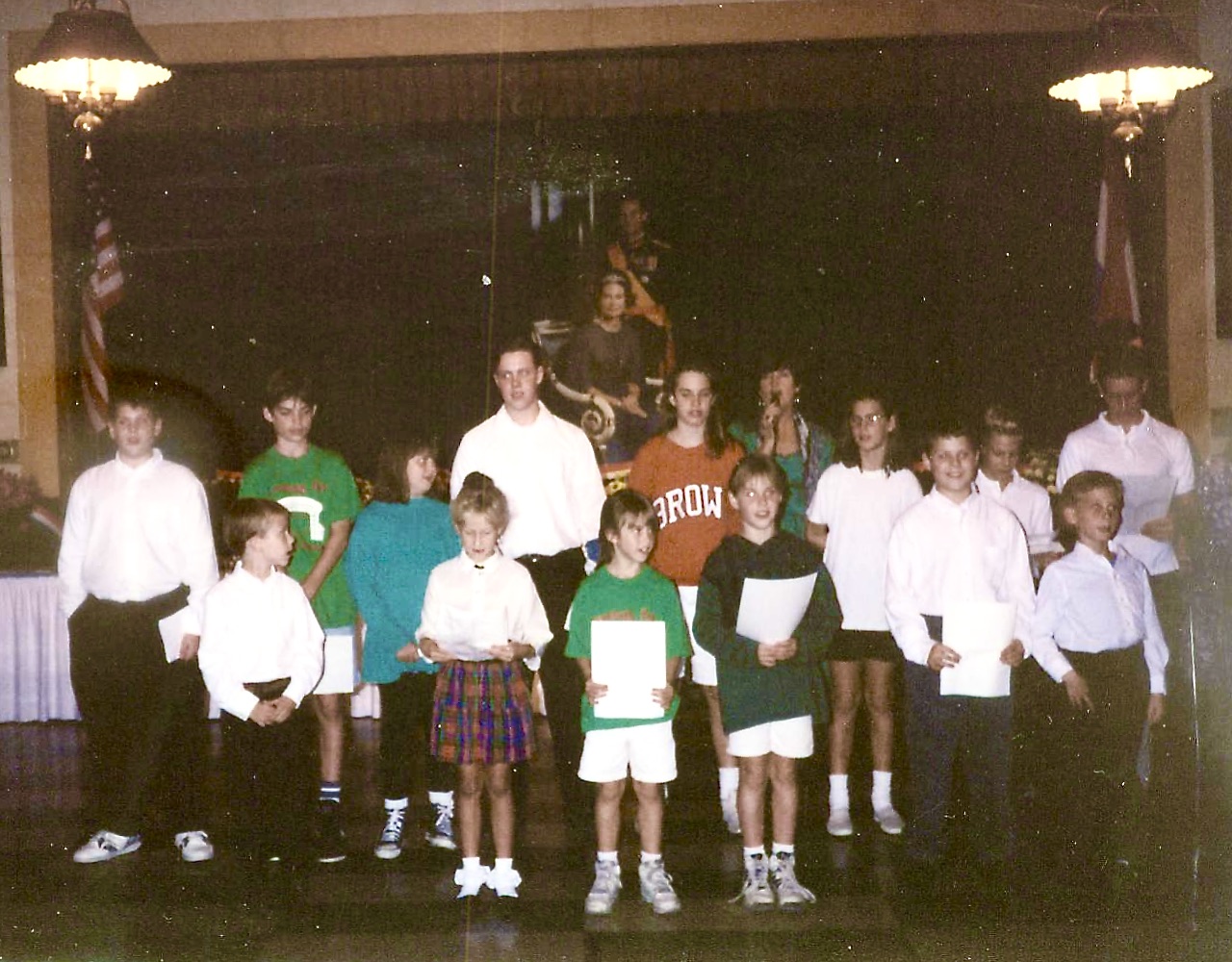
The choir’s performance drew the attention of Luxembourg royalty. In 1995, Luxembourg City was designated the Cultural Capital of Europe, and Crown Prince Henri invited the Kanner Kour to perform in Luxembourg as part of the festivities. Peter and Pamela Schroeder, along with their seven children, represented Section 3 and the Brotherhood in Luxembourg as the Kanner Kour. Among other performances, they sang at the opening ceremonies of the 655th annual Schueberfouer, were introduced by the Mayor of Luxembourg City, and were featured on Radio Luxembourg, gaining national attention.
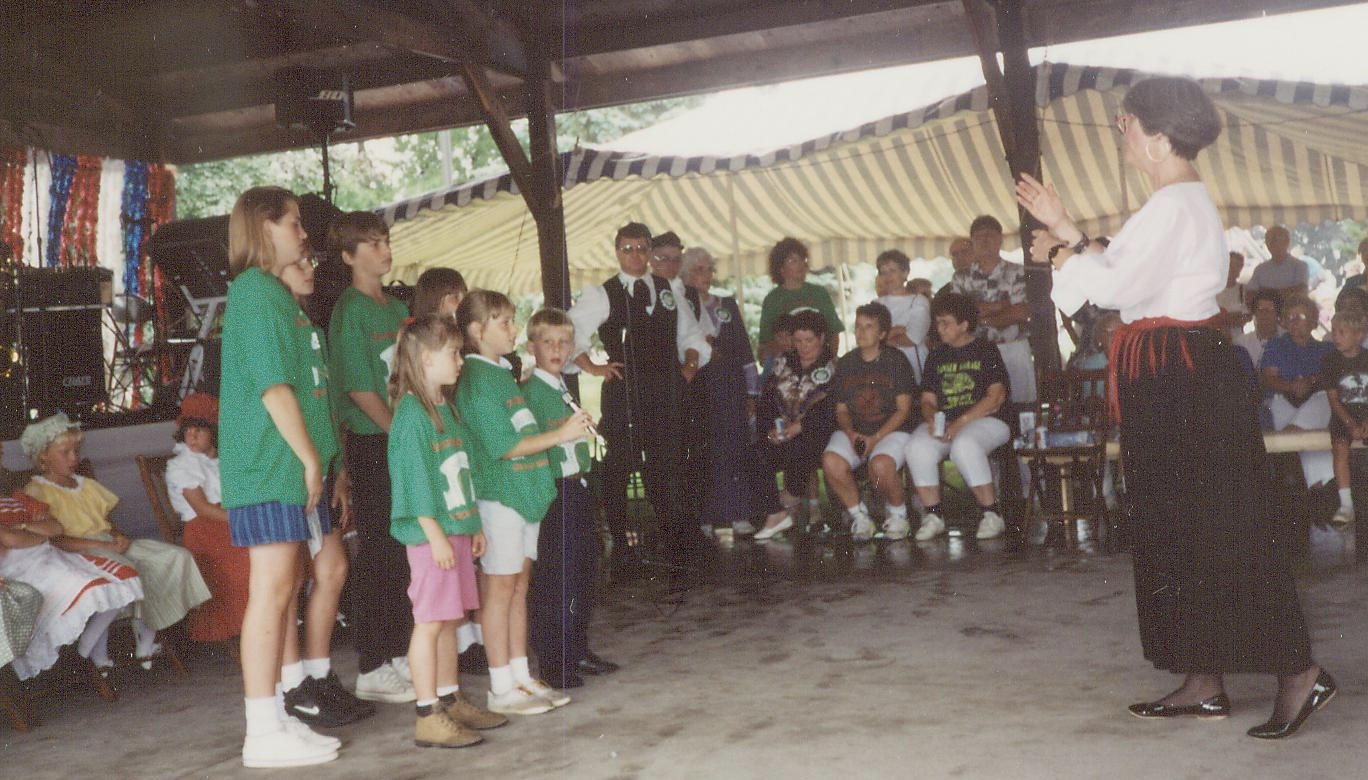
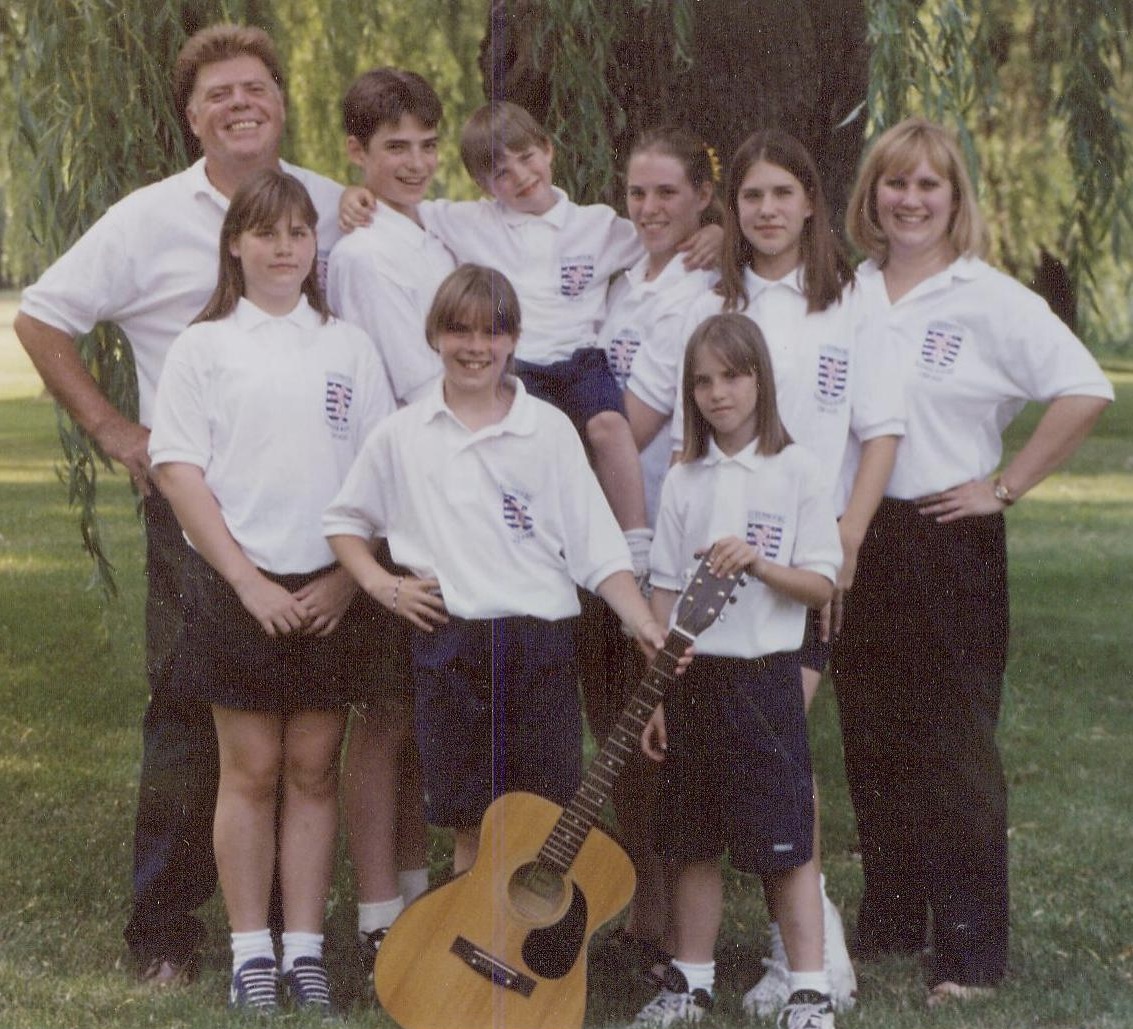
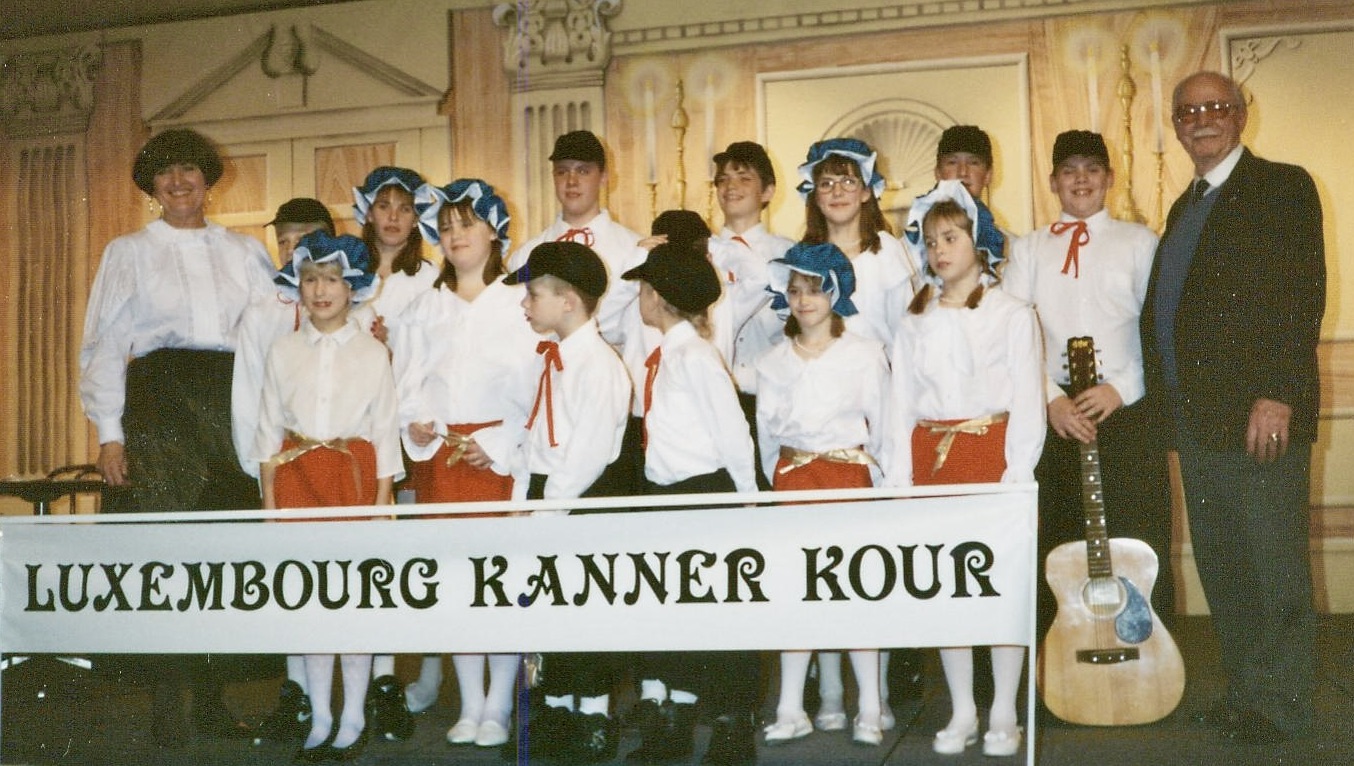
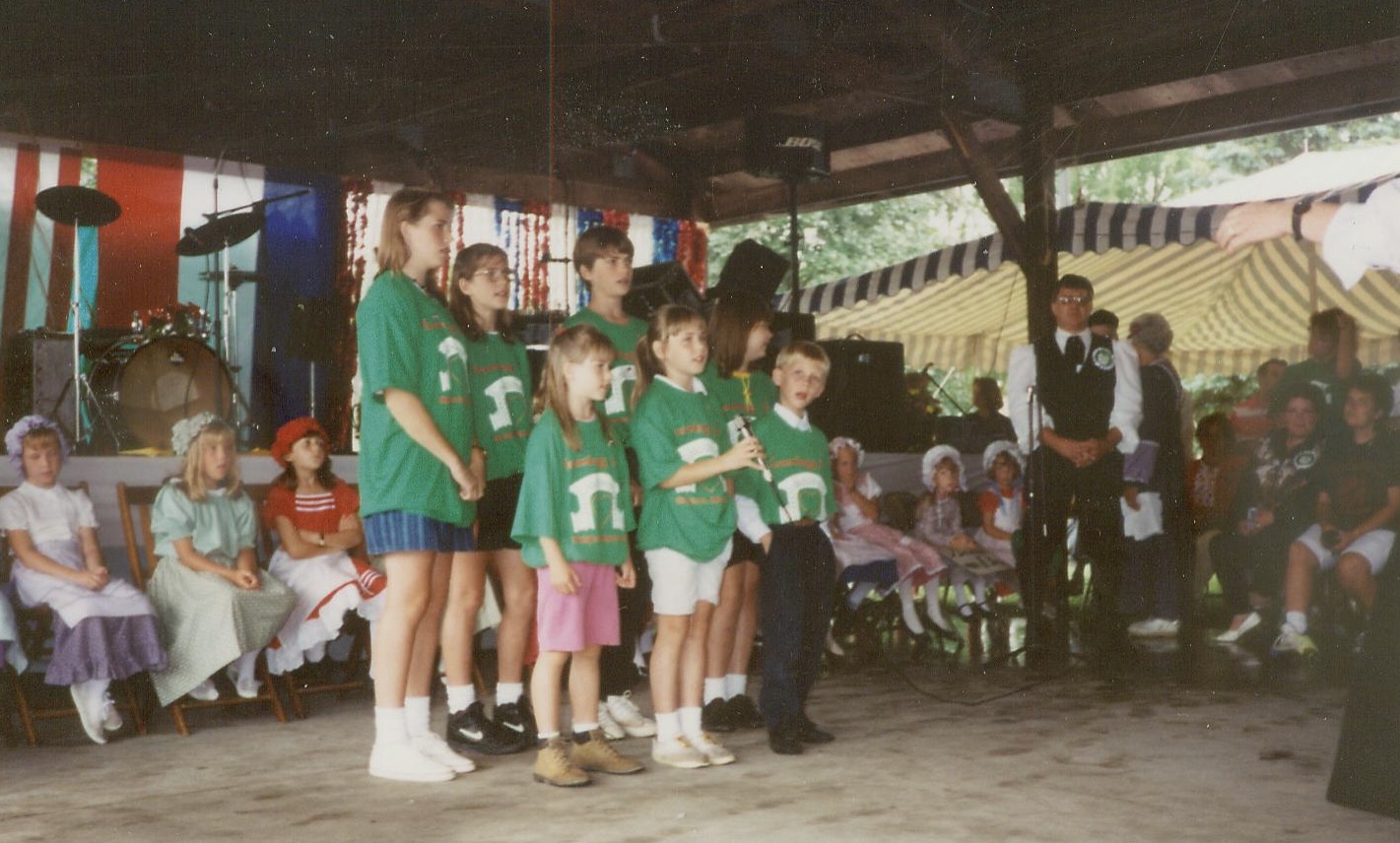
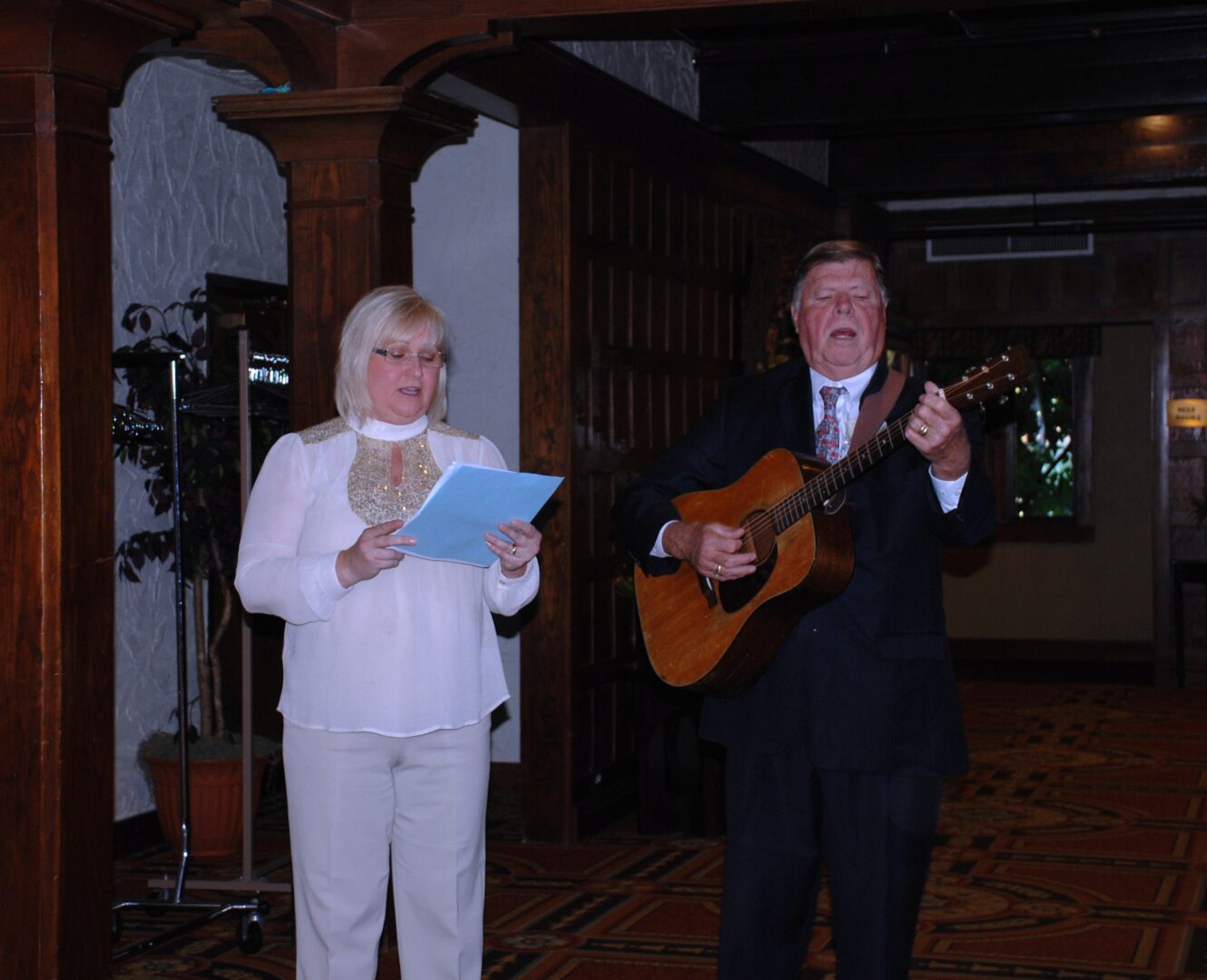
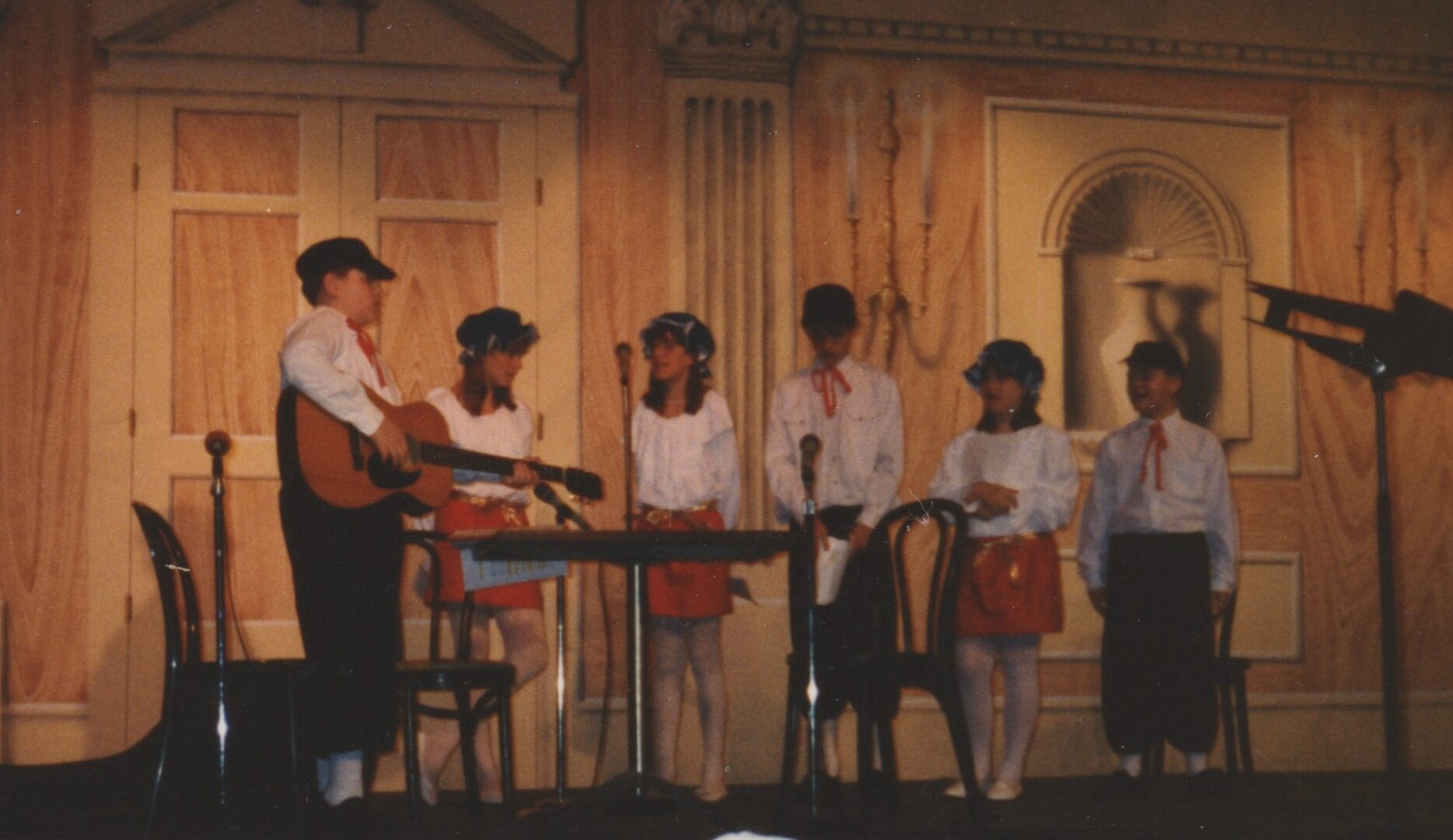
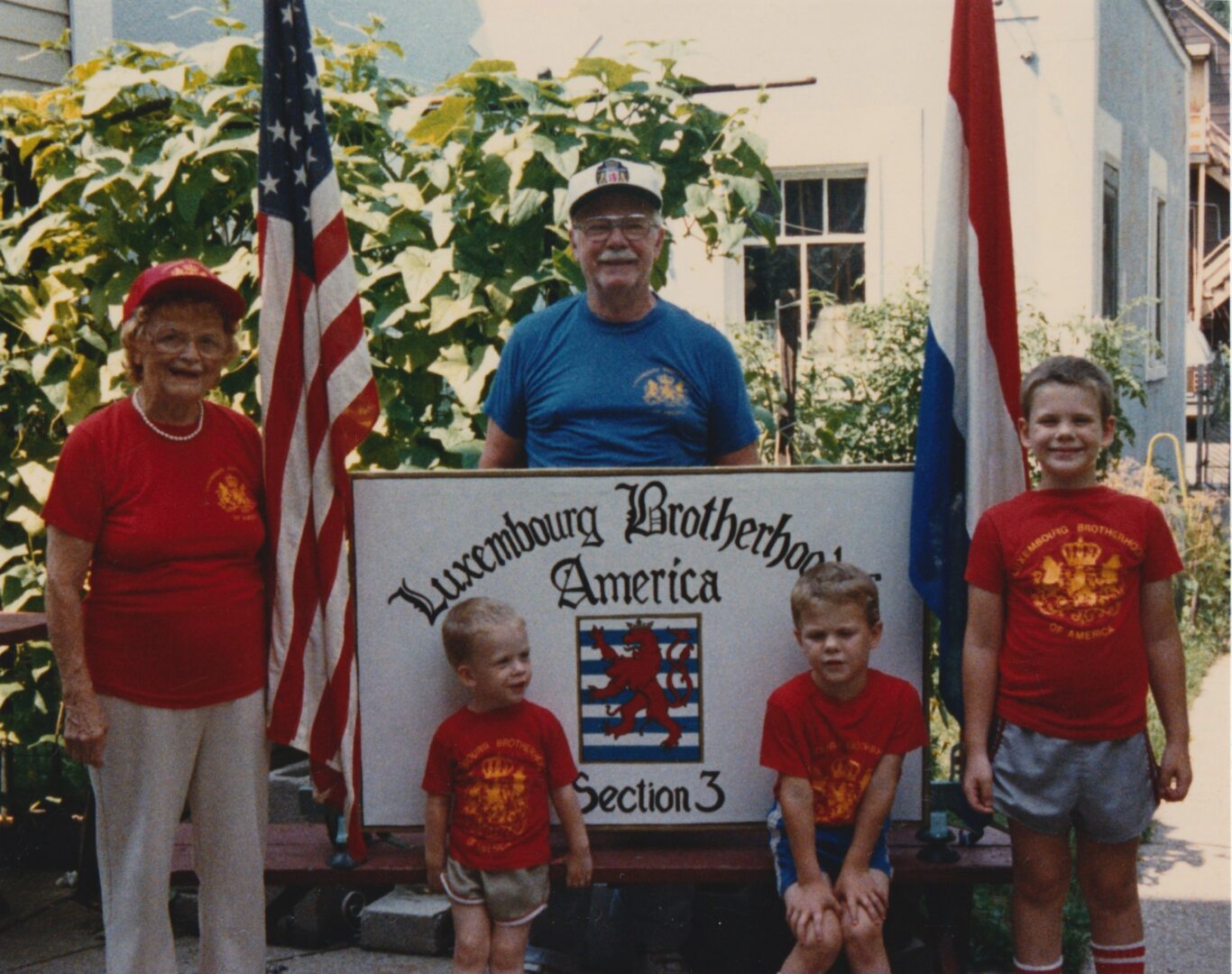
With renewed youth in the organization, new changes were underway in the Grand Lodge, which in 1991 decided each section should appoint a Grand Representative. Section 3’s representatives have included Tony Schroeder, Peter T. Schroeder, and Tony Viola.
Another controversial debate arose over whether to admit women as members. This debate, one of the most heated in the Brotherhood’s history, was especially lively in Section 3. Opinions varied, with some sections staunchly opposed and others open to the idea. Section 3 supported opening membership to women, provided the Brotherhood approved. At the 1995 convention, the motion was tabled through parliamentary maneuvering. The following year, Section 3 rallied for a pro-vote. In July 1996, the following “founding women members” were inducted:
| Mary Clesen | Elsie Endre | Louise Gillen |
| Virginia Hubbard | Loretta Keegan | Florence Lang |
| Elsie Lohrmann | Ann Powers | Kristin Schroeder |
| Madeleine Simon | Maybelle Simon | Fernande Trausch |
| Marcella Trausch | Martha Weishaar |
Kristin Schroeder, at 16, was assigned member roster #1, making history as Section 3’s first female member. Later that year, JoAnn Ammon, Dolores Chozianin, Betty Frazer, and Karen Winandy also joined.
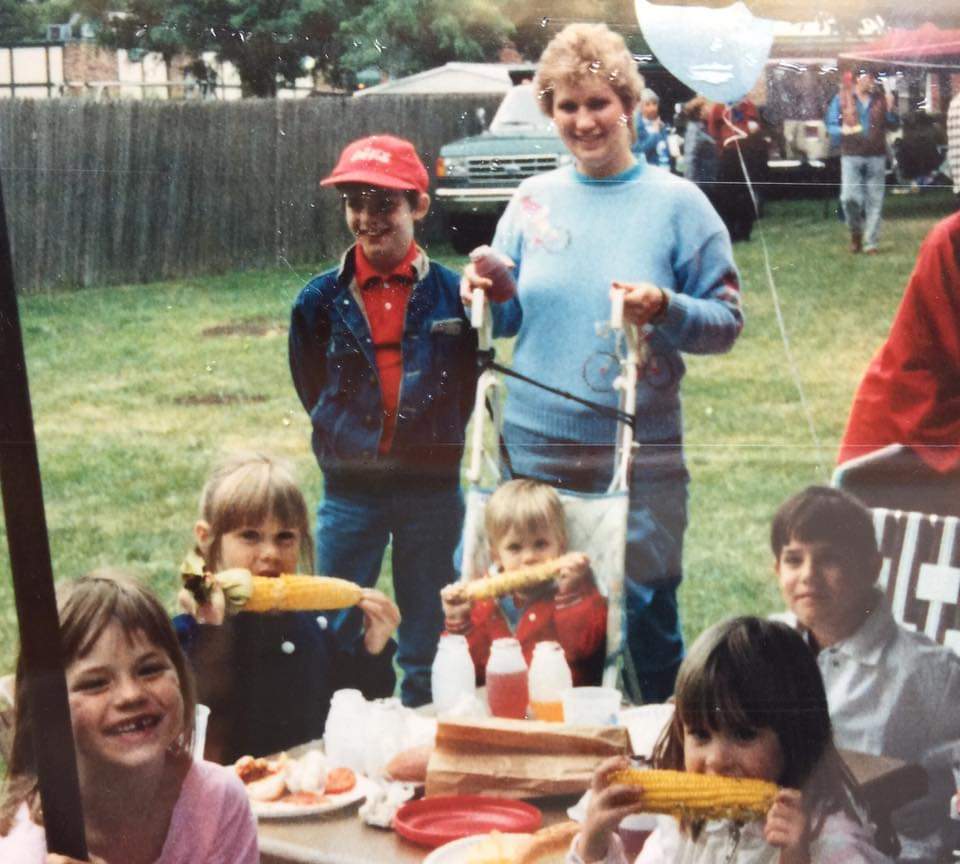
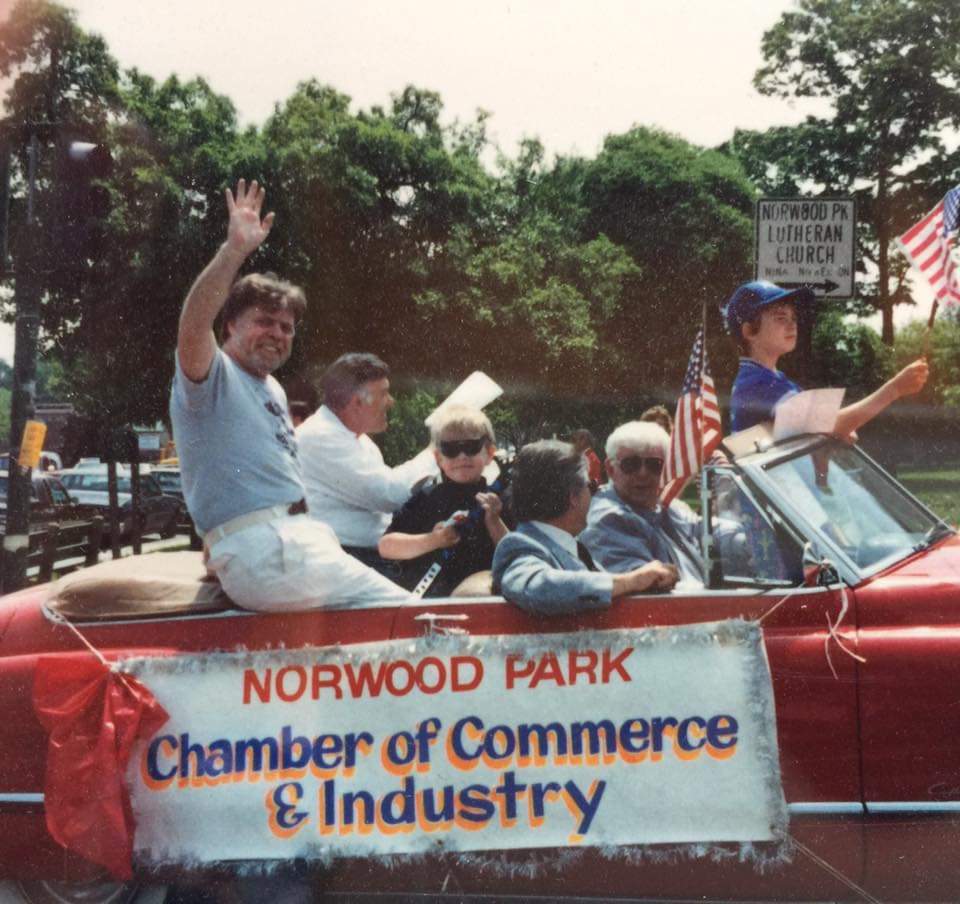
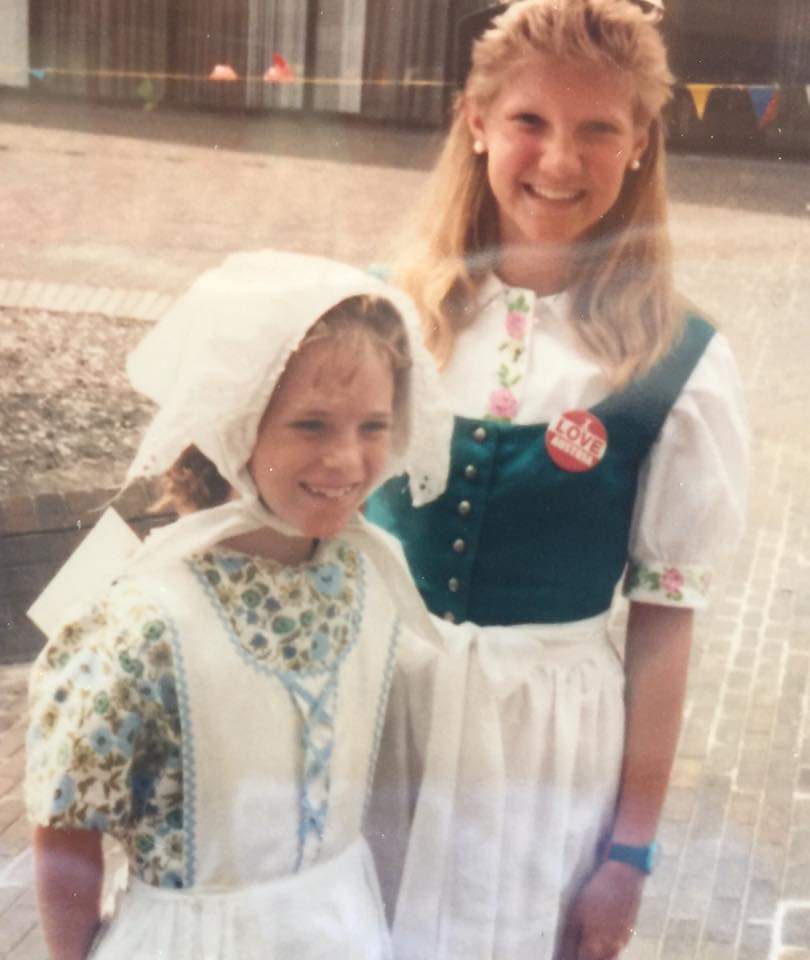
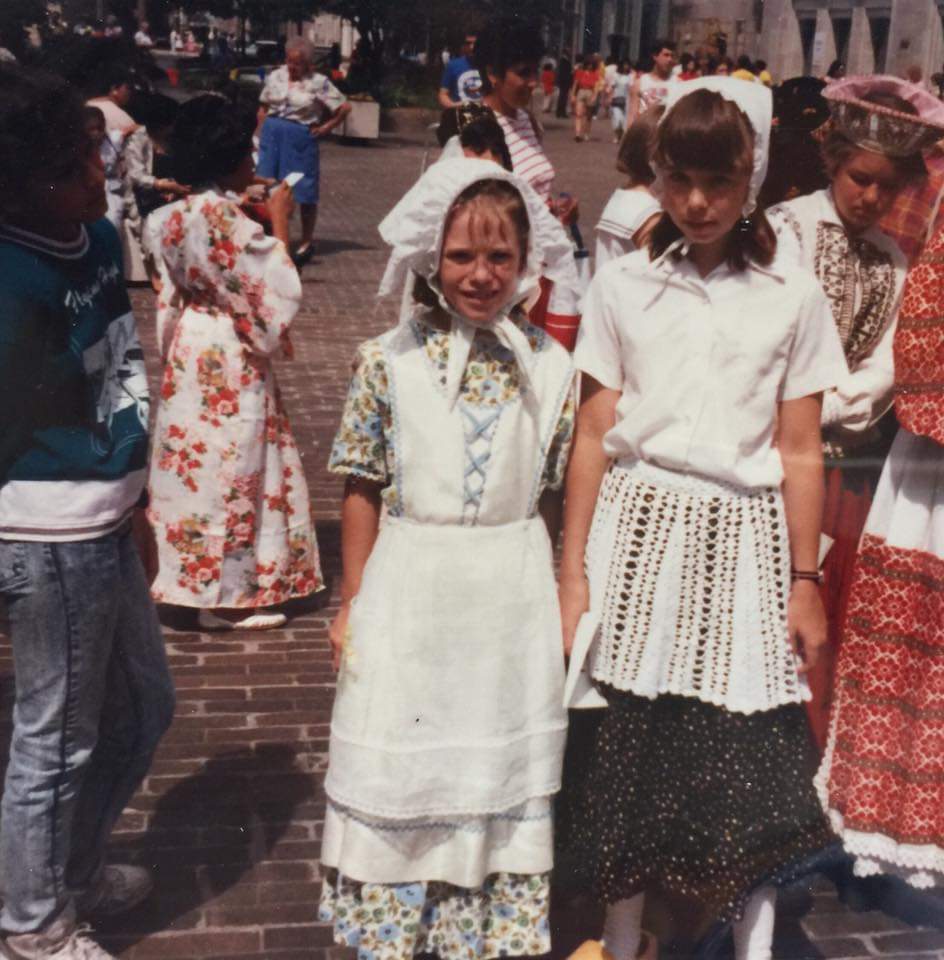
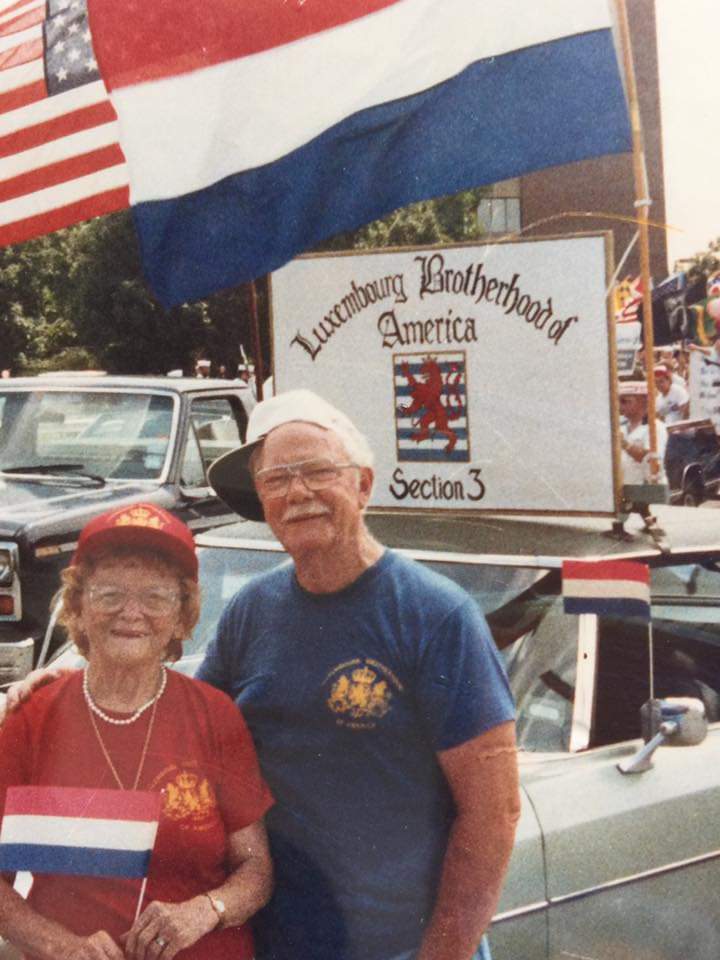
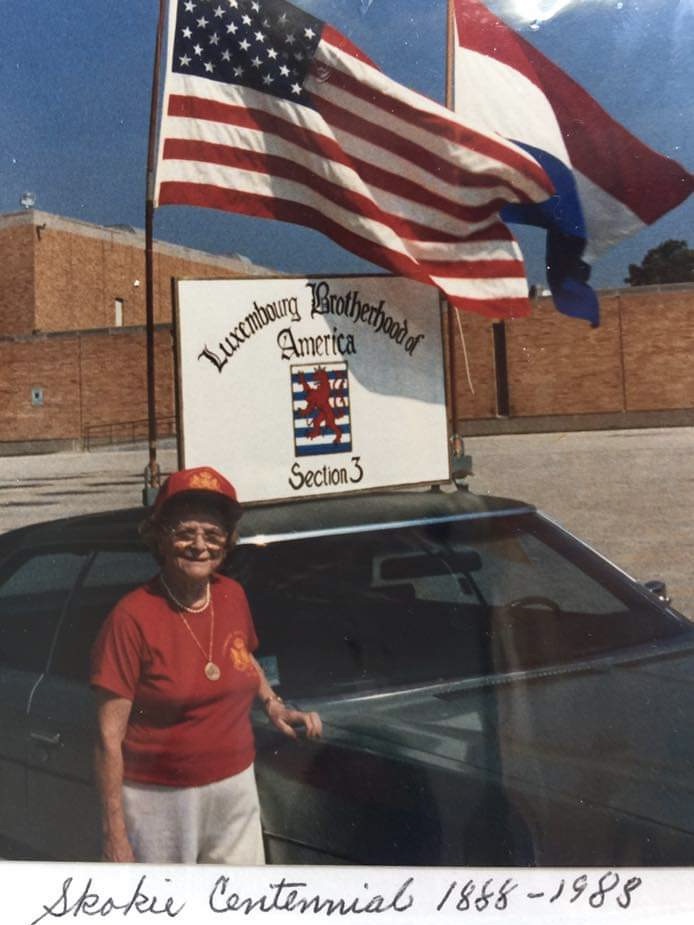
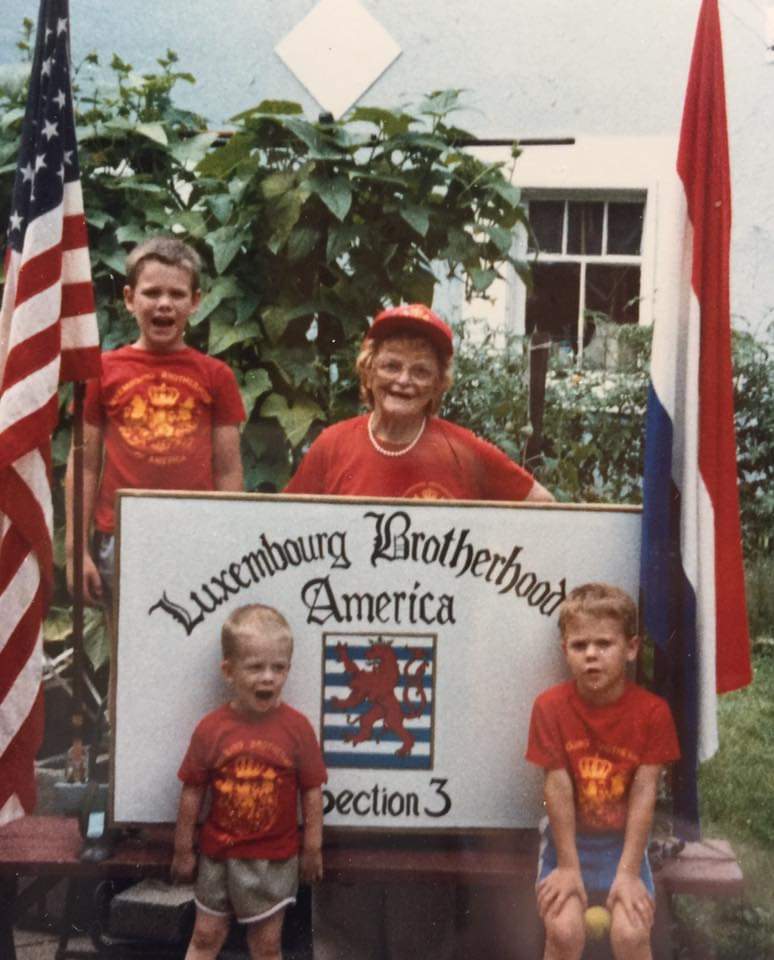
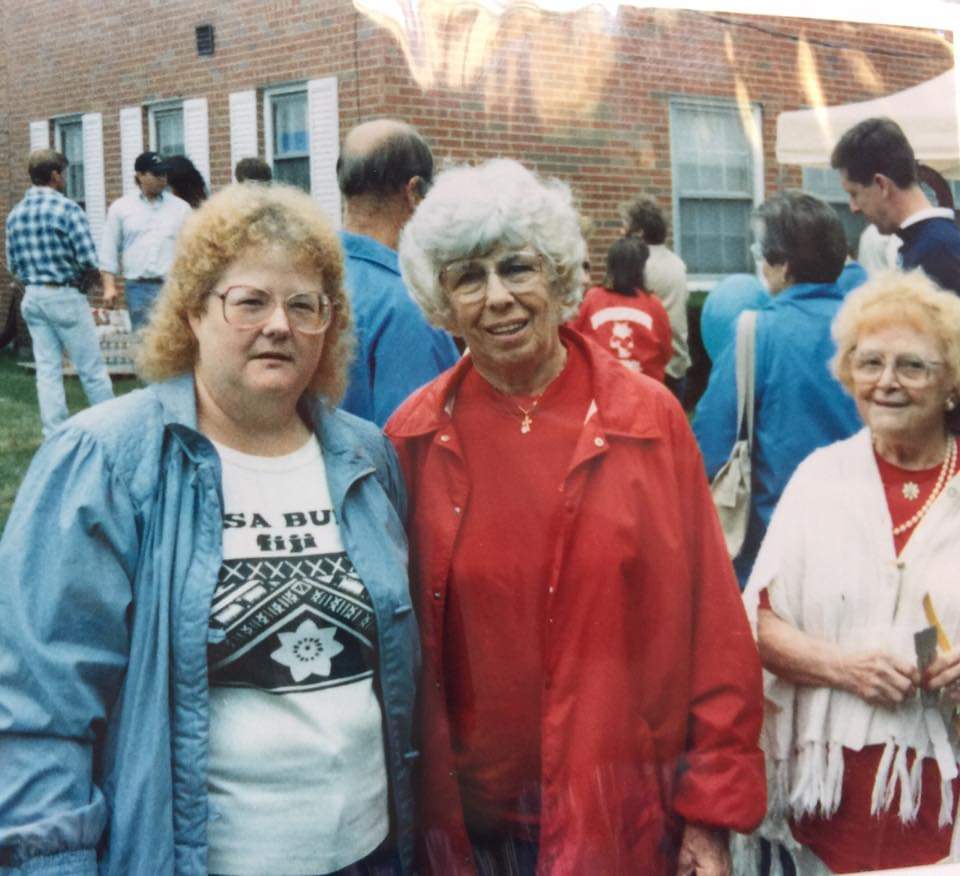
In 1995, Don Hansen was appointed Honorary Consul of Luxembourg in Chicago for Illinois, Iowa, and Wisconsin. He resigned as Grand Lodge President and George Meyers succeeded him. Peter T. Schroeder was appointed Chancellor to the Honorary Consul and has remained in that role.
In 1999, Section 3 Fundraising Chair Jeff Trausch organized the first Candlelight Bowl, held on March 18, 2000, at Mont Clare Lanes on Harlem Avenue in Chicago. The event grew popular and was held annually until 2013.

Inspired by attending the 655th Schueberfouer in Luxembourg City in 1995, Section 3 President Peter T. Schroeder led efforts to revive the Schobermesse in Chicago. After a 34-year hiatus, Section 3 held the 65th Schobermesse at Bunker Hill Forest Preserve in 2001, proudly displaying the Luxembourg Brotherhood of America Schobermesse banner.
The 2002 Schobermesse, also sponsored by Section 3, took place at the same location, after which the Section offered the Grand Lodge the option to sponsor the event, to make it a Grand Lodge tradition. With strong support from then-Grand Lodge President George Meyers, the Grand Lodge sponsored the 2003 Schobermesse, relocating it to the All Saints Church property on Higgins Road. Over the years, new features were added to the traditional events, most notably the live sheep in the Hammelsmarch parade, a custom also seen in Luxembourg City’s Schueberfouer.
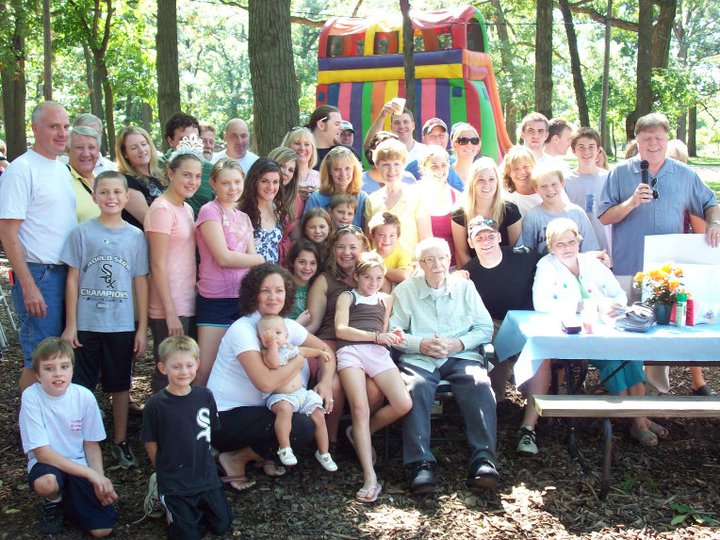
In 2008, Section 3 donated to the Luxembourg American Cultural Society, Inc., funding a Legacy Panel displayed at the Society’s Heritage Center in Belgium, Wisconsin. It was among the first three panels exhibited.
In 2011, the festival celebrated its 75th anniversary, with Paul Helminger, Mayor of Luxembourg, attending the event. Anthony (Tony) Viola of Section 3 spearheaded an effort to import Simon Pils beer from Luxembourg. This event marked a decade since the Schobermesse’s revival, thanks to the commitment of members across all Brotherhood sections. When the Grand Lodge assumed responsibility for the event, an advertising book was added to the program, organized through the efforts of George Meyers and Dolores Chozianin of Section 3.
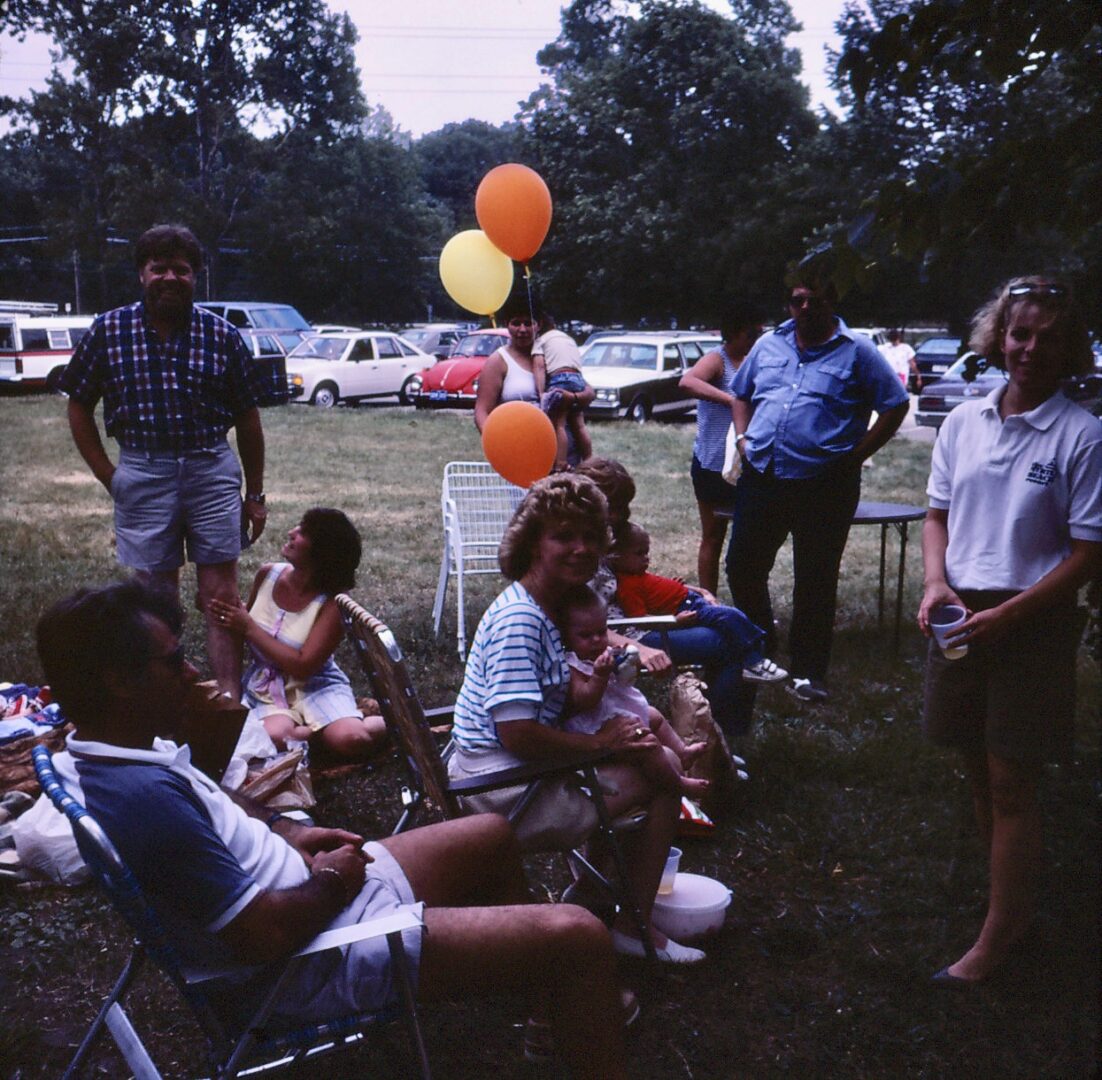
George Meyers served as Grand Lodge President until May 2011, when Peter T. Schroeder was elected to succeed him. George A. Jones became Section 3 President, passing his role as Financial Secretary/Treasurer to Paul Krantz. Peter served as Grand Lodge President until 2012 when health issues led him to resign. He was succeeded by President, Linda Heinz.
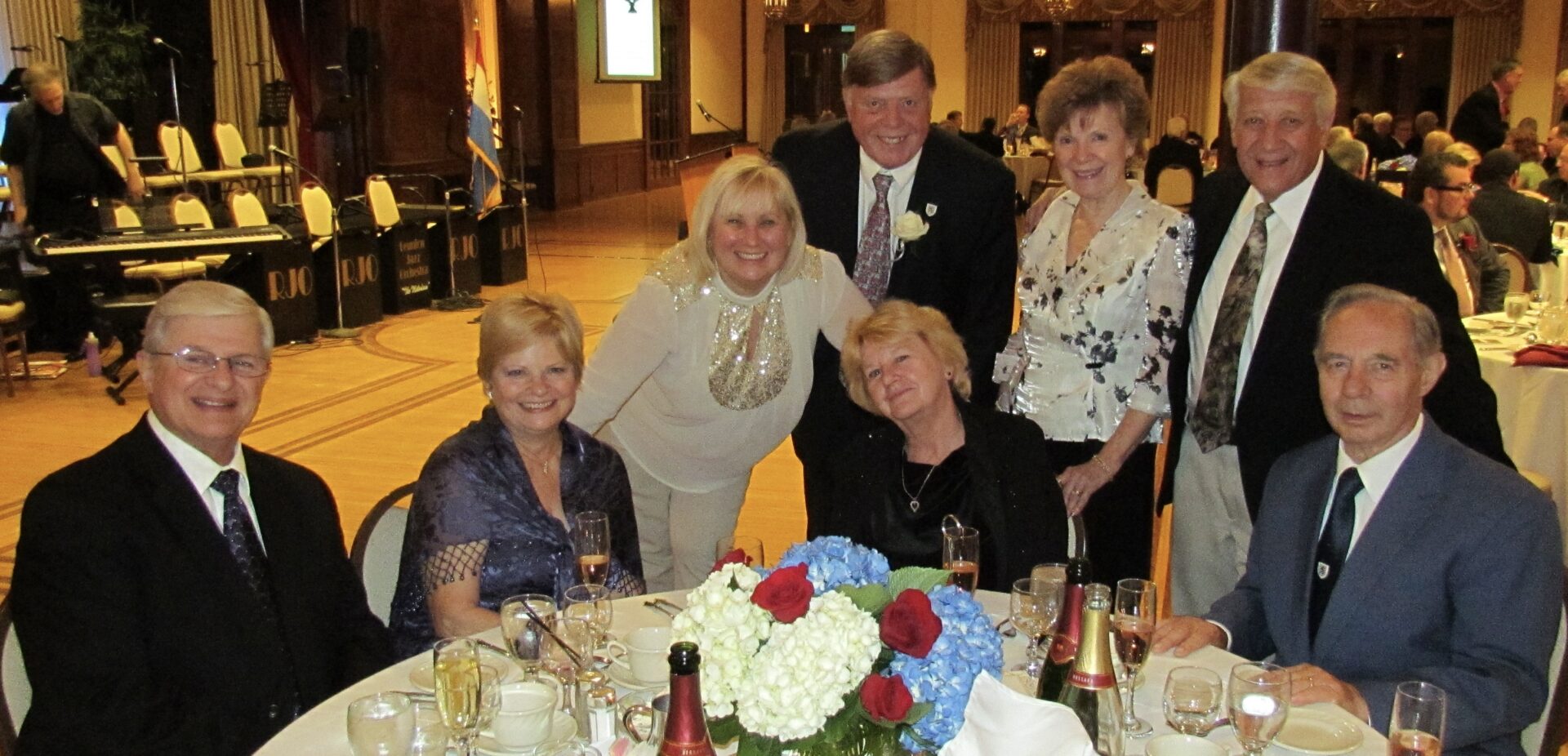
Back: Pam & Pete Schroeder, Antoinette & John Biselew
During the ten years following the revival, the Schobermesse was chaired by Peter T. Schroeder, President of Section 3; Bruce Hoffman, President of Section 8; and George A. Jones, President of Section 3, with support from committee members and volunteers from all sections. Starting in 2012, the Schobermesse was moved to the Morton Grove Civic Center, where Jim Stoneberg of Section 8 has served as chair.
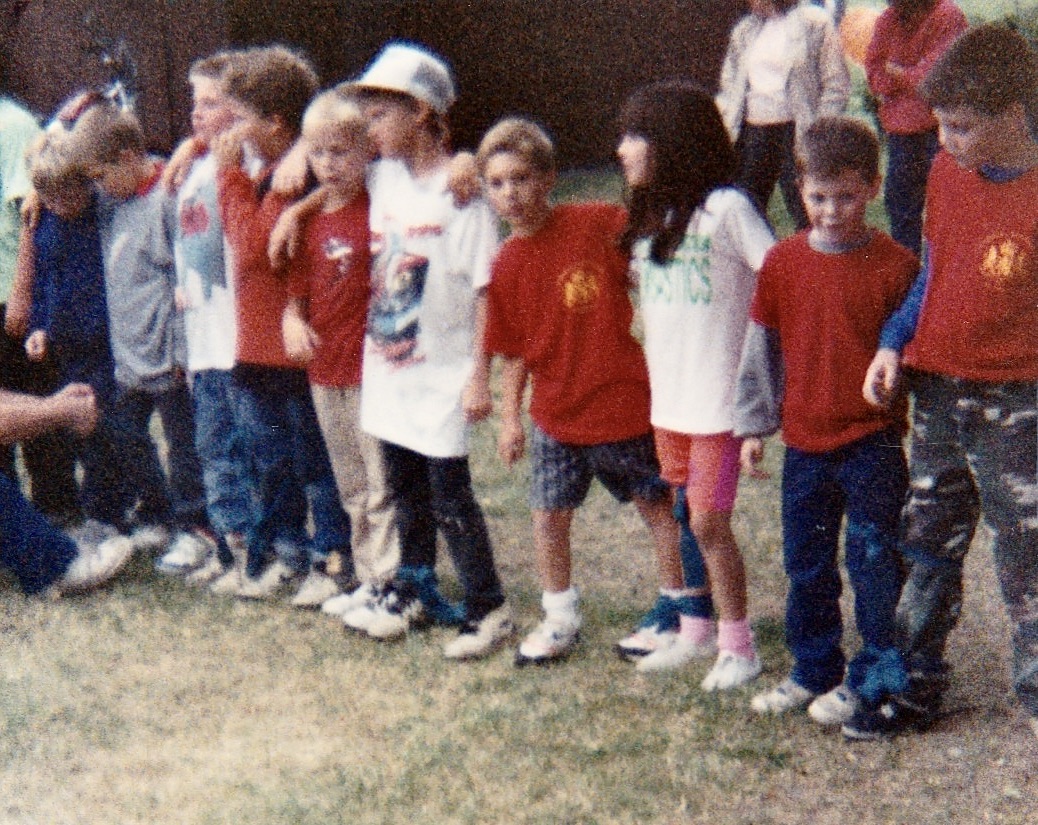
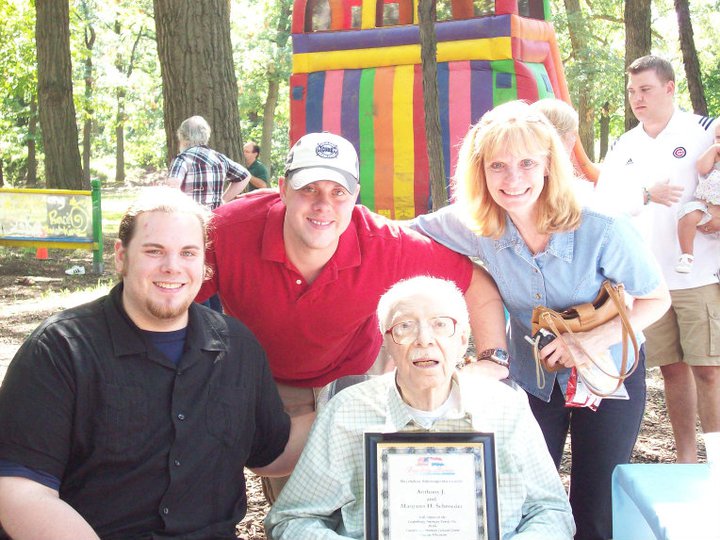
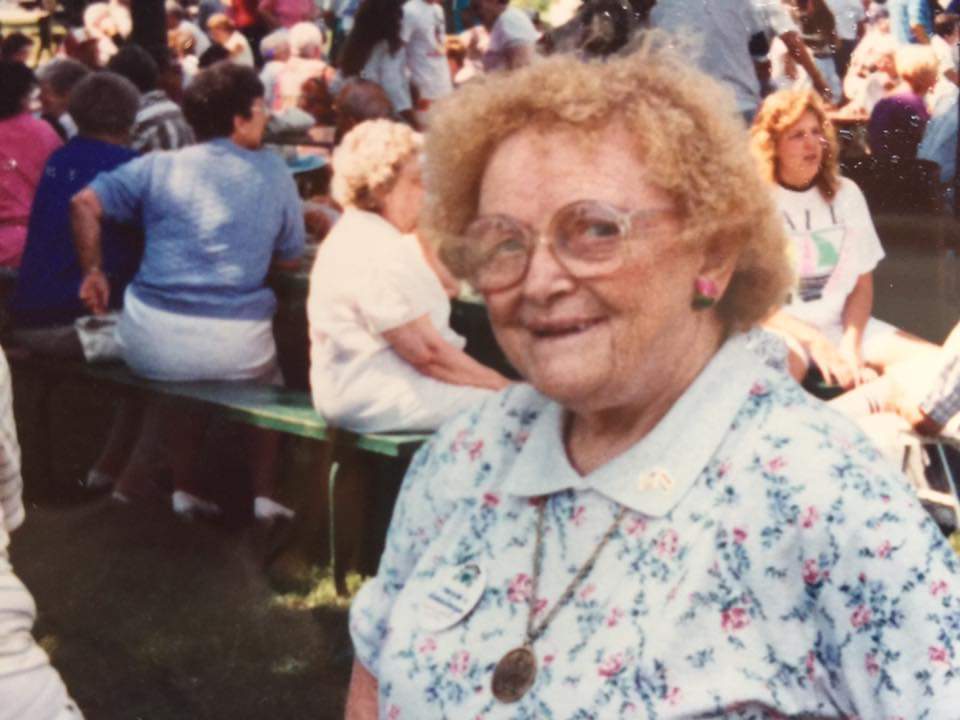
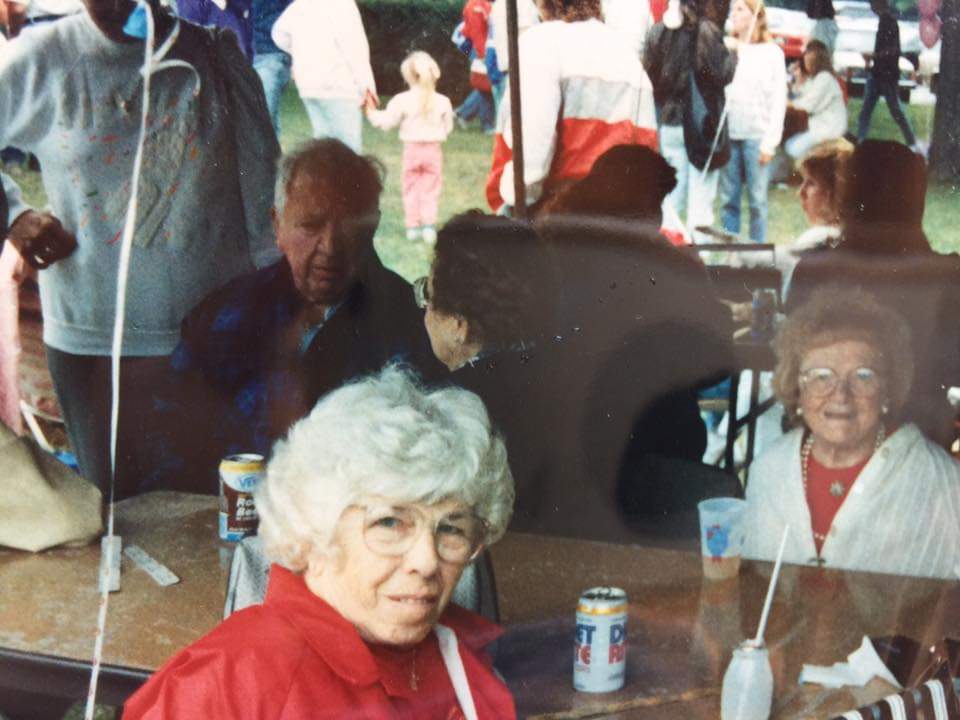
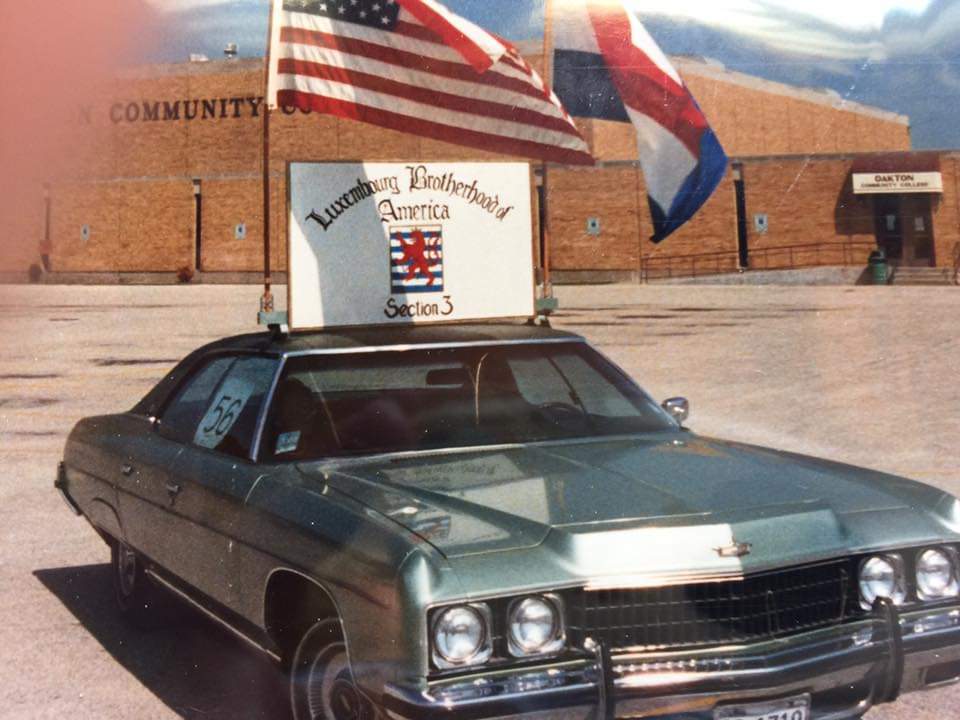

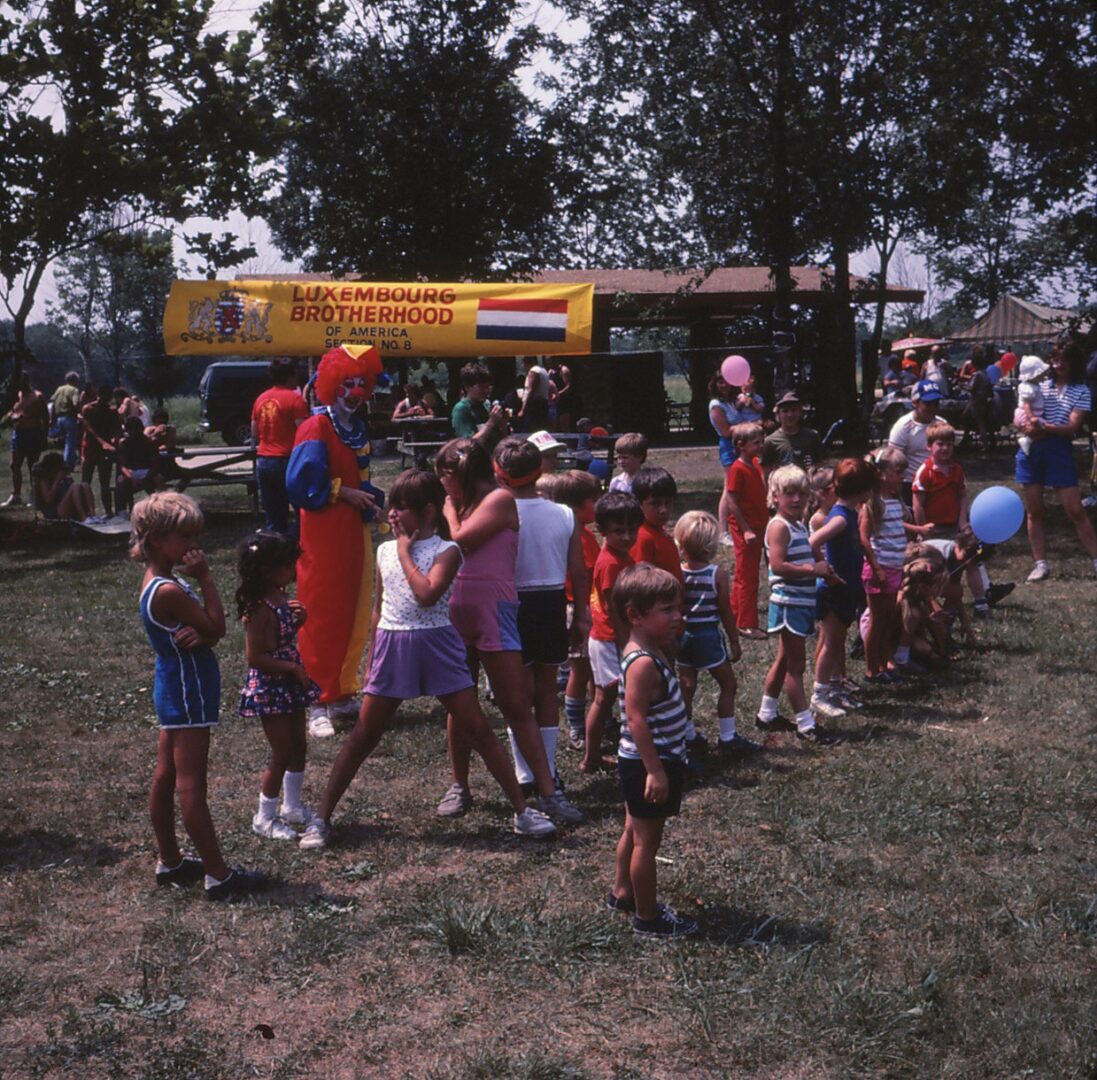
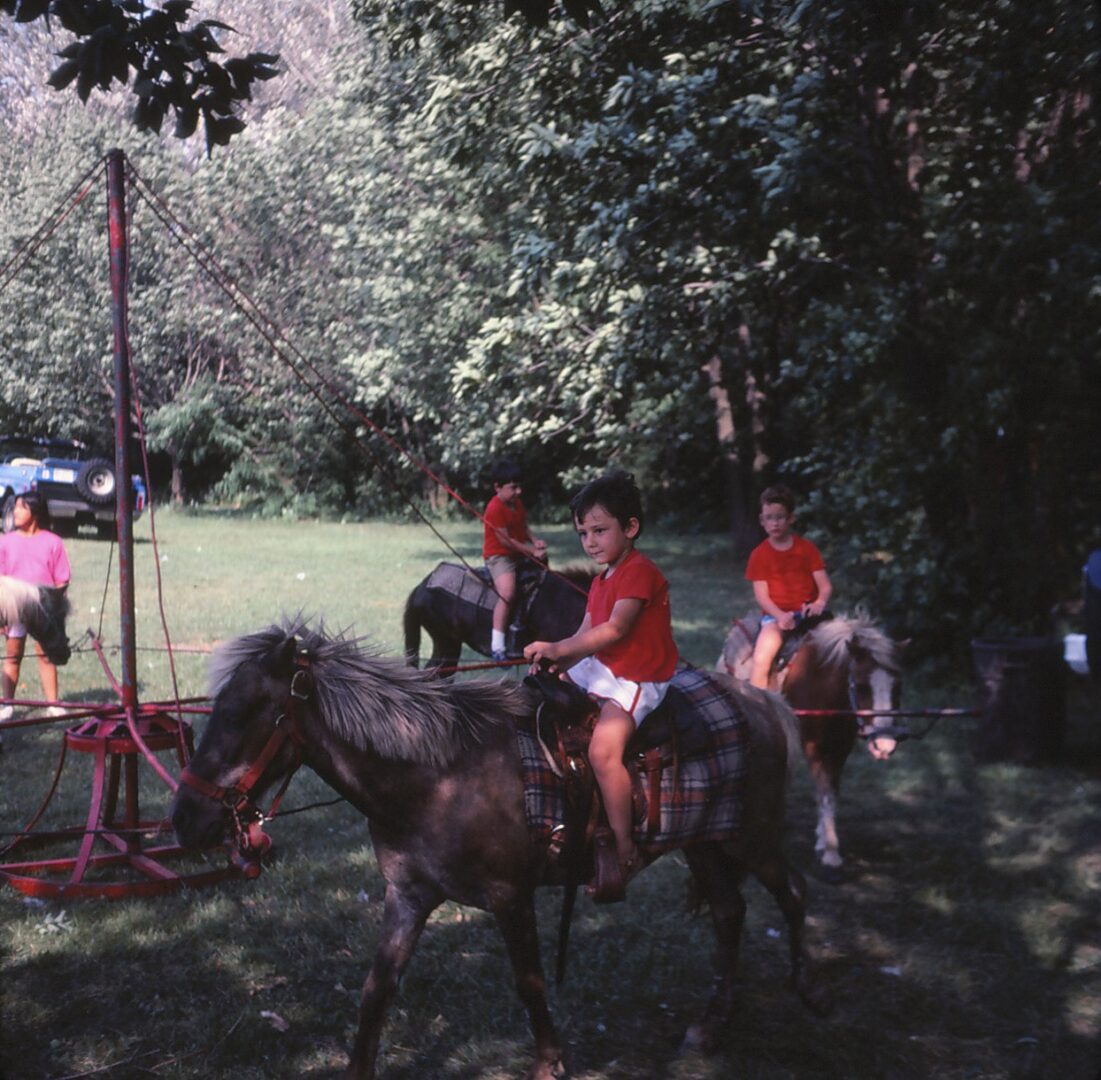
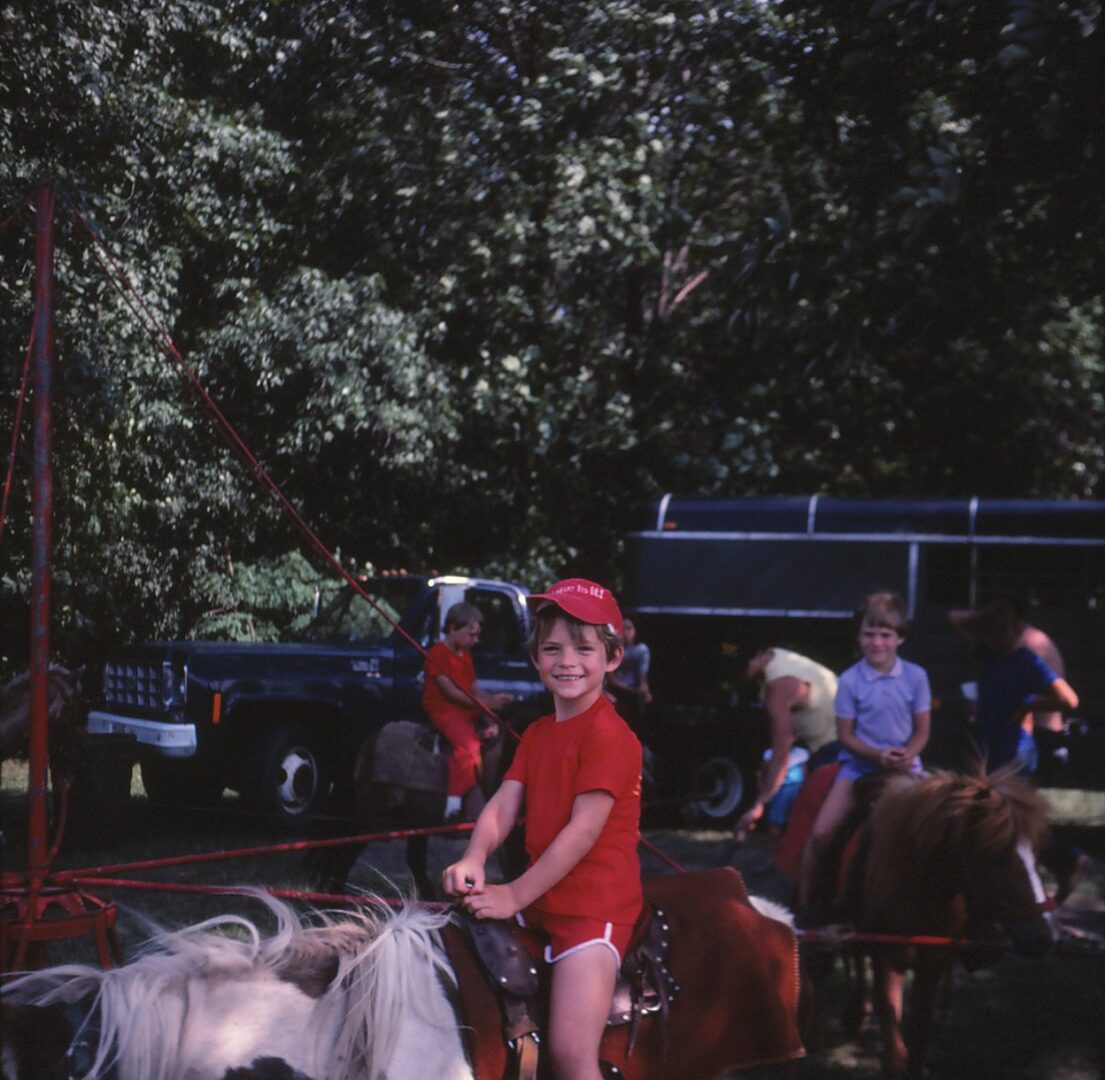
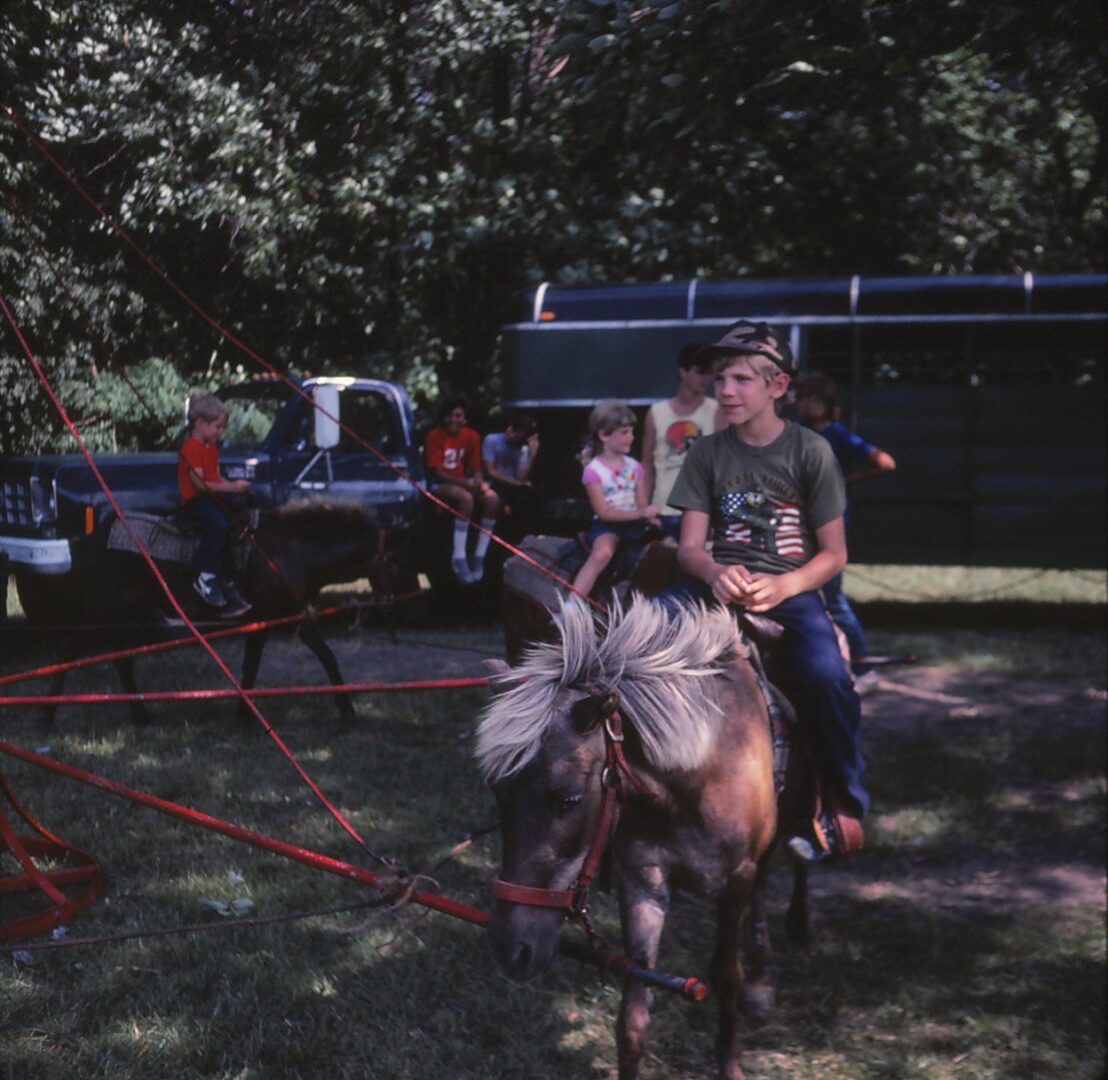
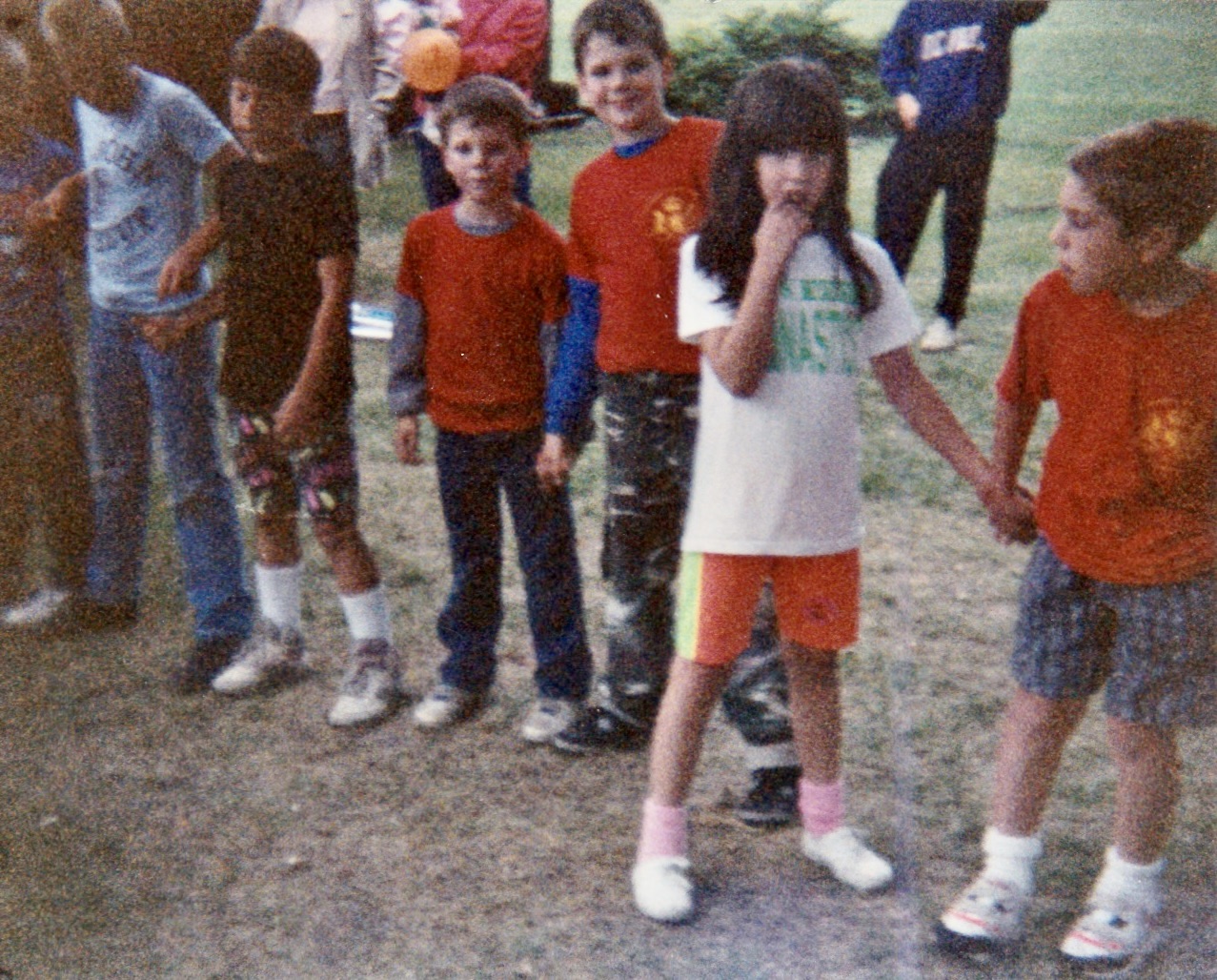
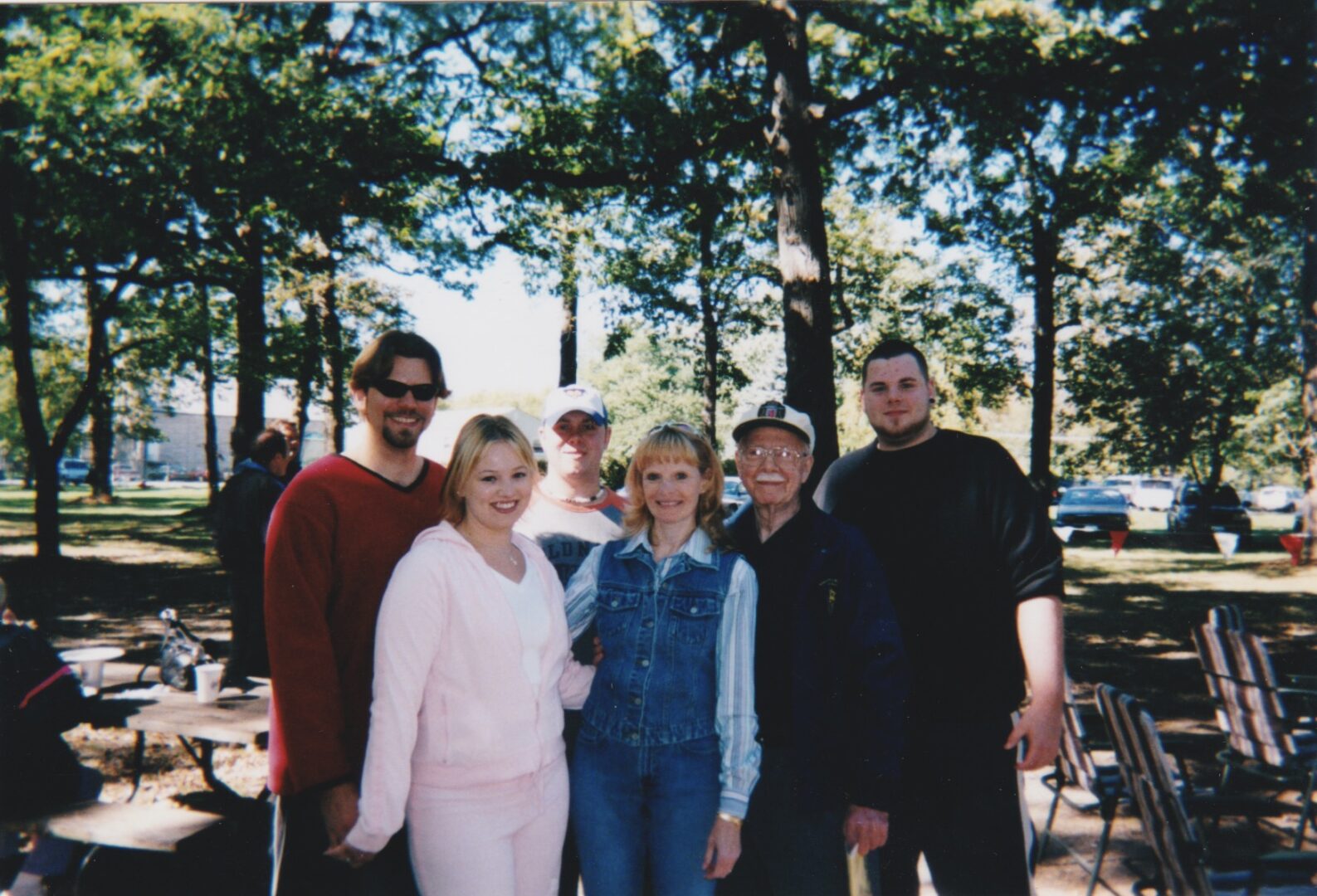
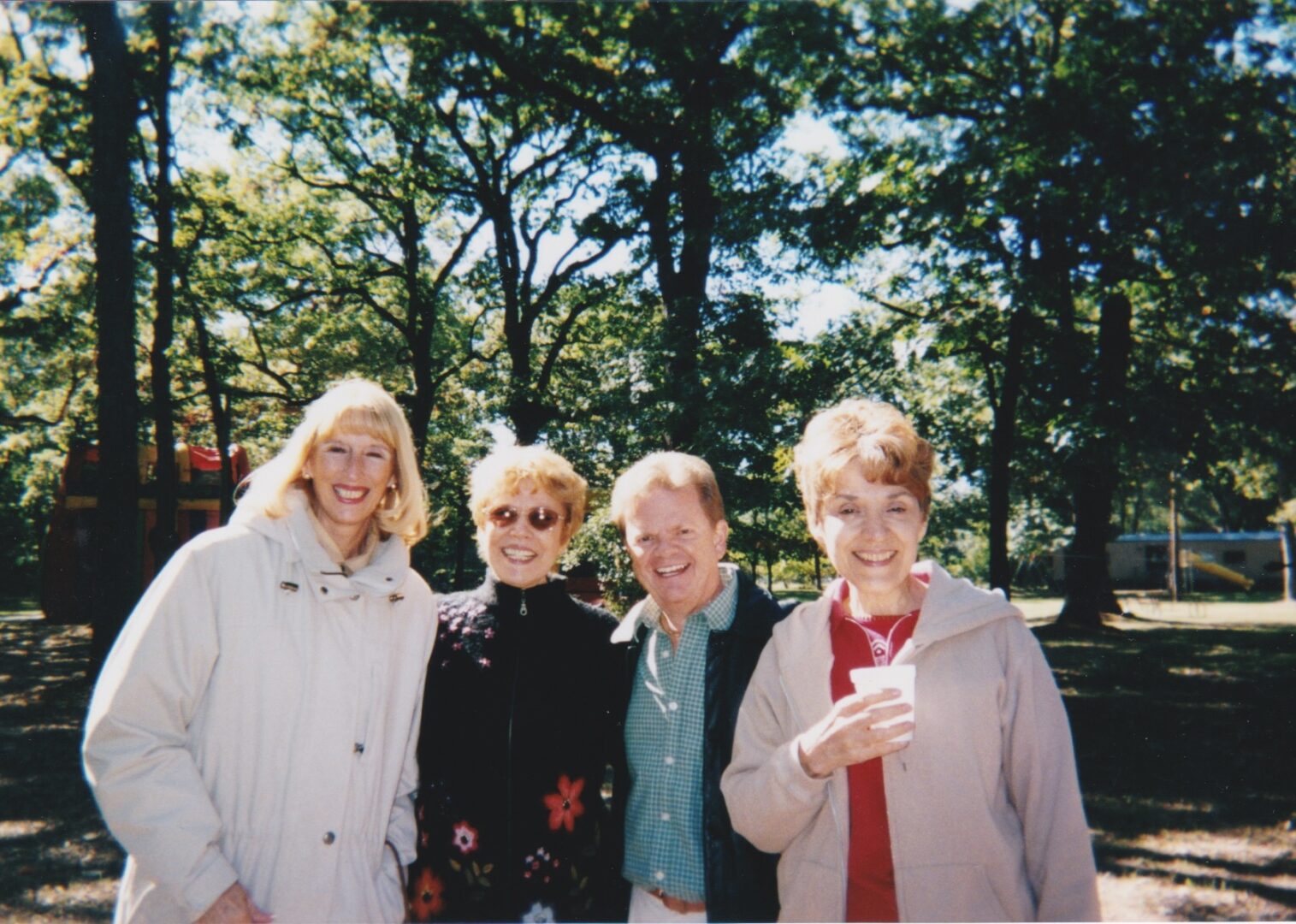
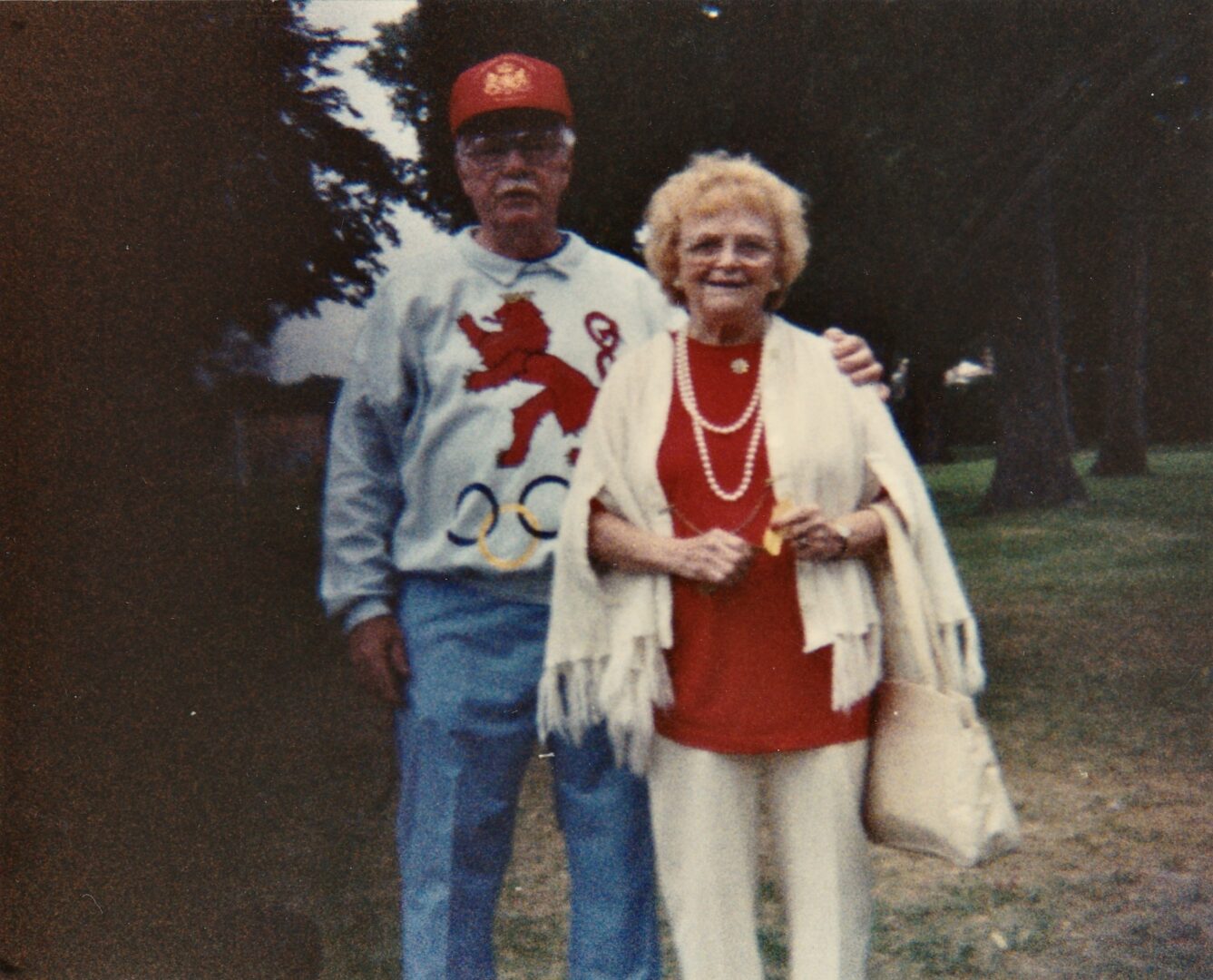
Members of Section 3 continue to play a prominent role in decorating the Luxembourg Christmas tree and crèche for the “Christmas Around the World” exhibit at the Museum of Science and Industry. George Meyers, his sister Dolores Chozianin, and the family of Rich and Marcella Trausch have been notably active. Tree decoration is now led by Bill Clesen and his family.
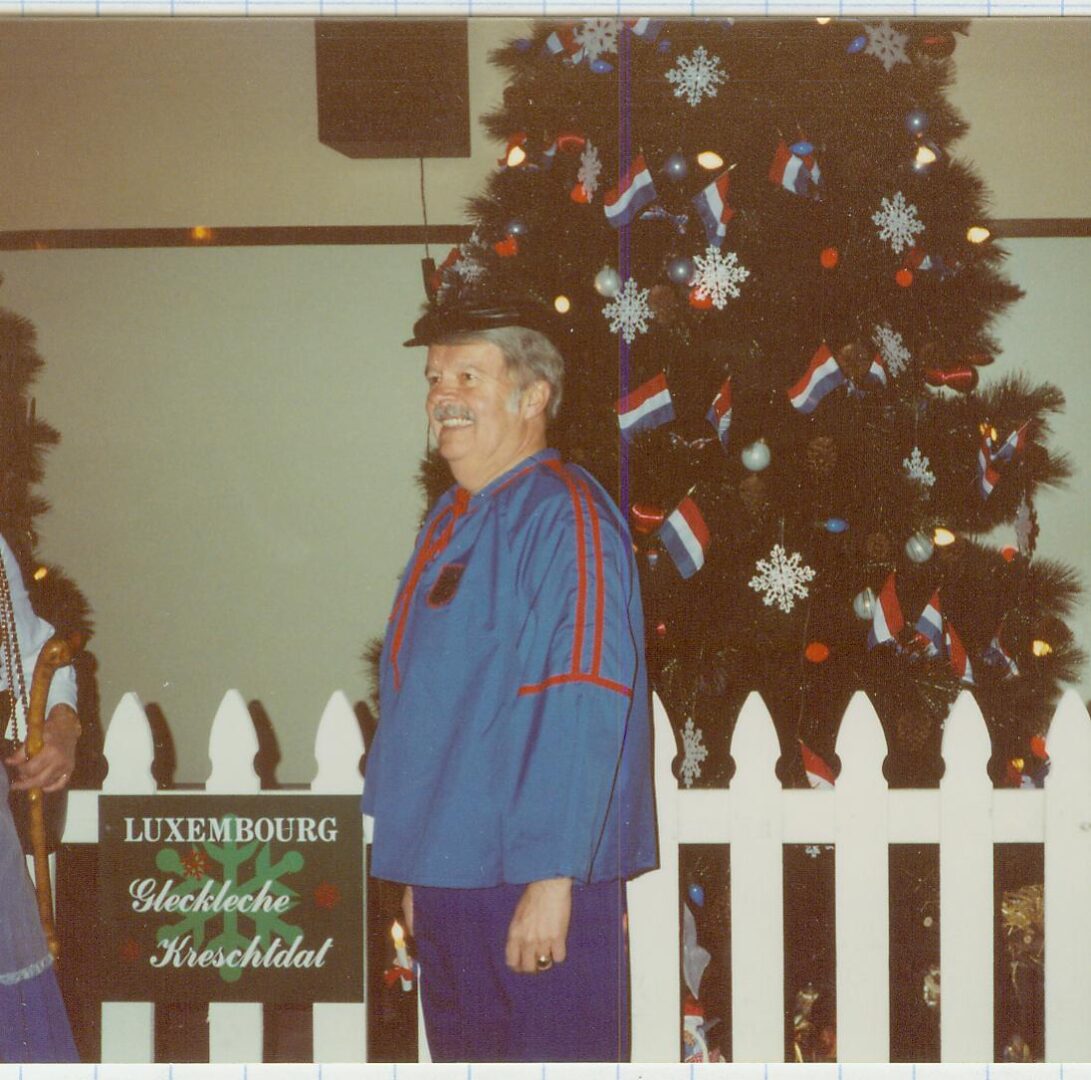
As the oldest remaining section of the Luxembourg Brotherhood of America, Section 3 proudly continues into its second century, dedicated to serving the Luxembourg community in America and preserving Luxembourg-American heritage.
Written by Richard J. Witry, Donald Wampach, & Nick C. King.
Edited and revised in 2013 by Peter T. Schroeder, Antoinette Bislew, and George A. Jones.
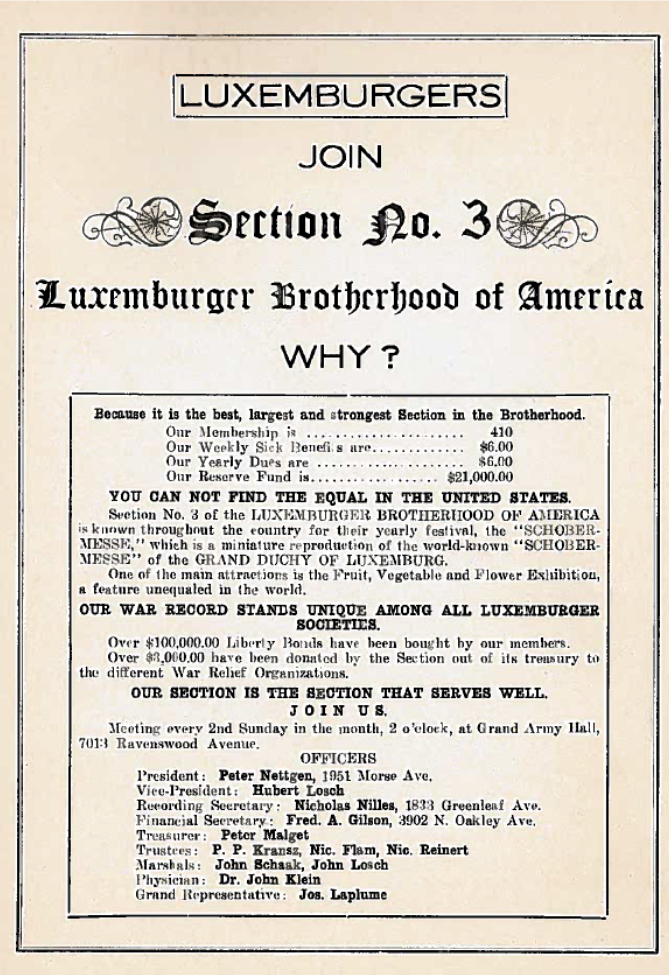
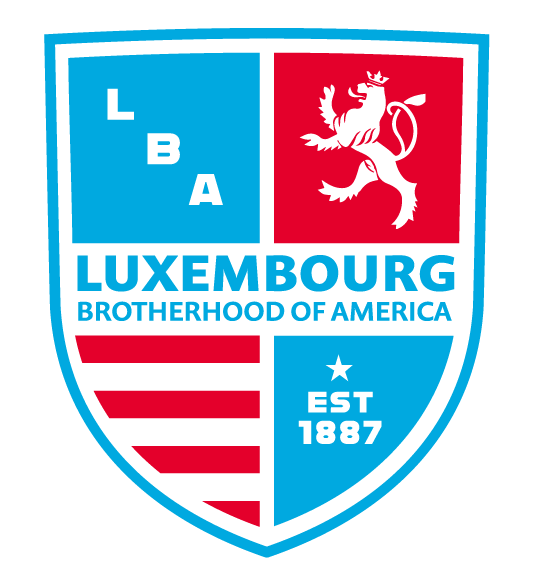
Recent Comments